







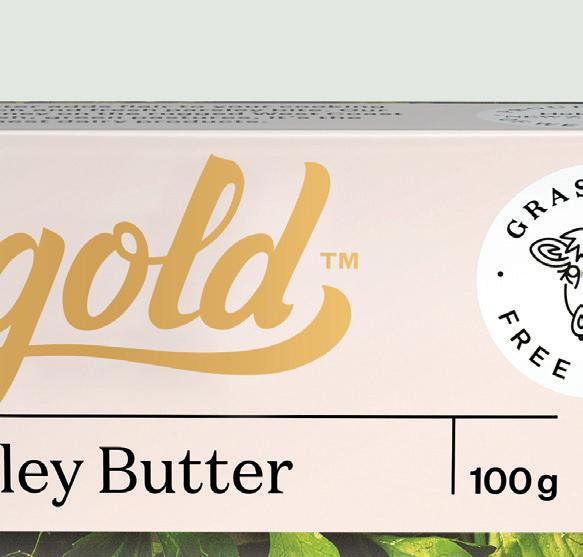
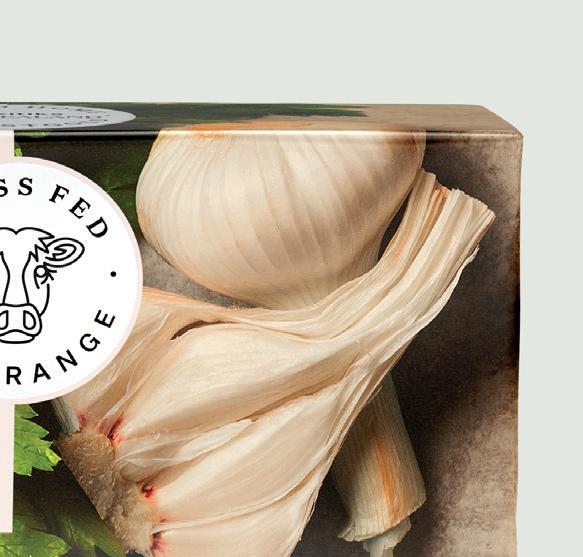

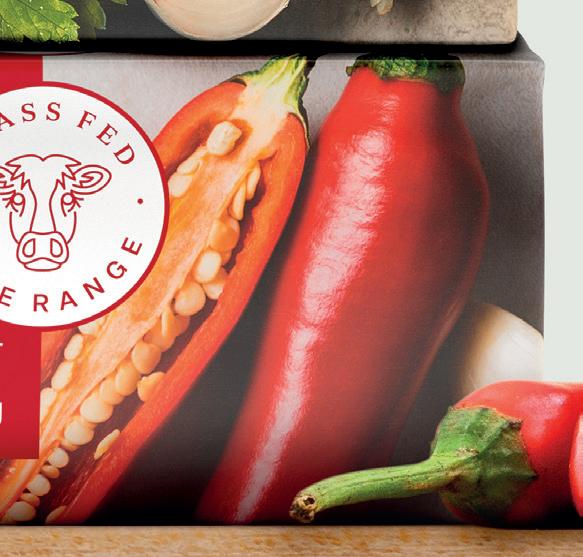



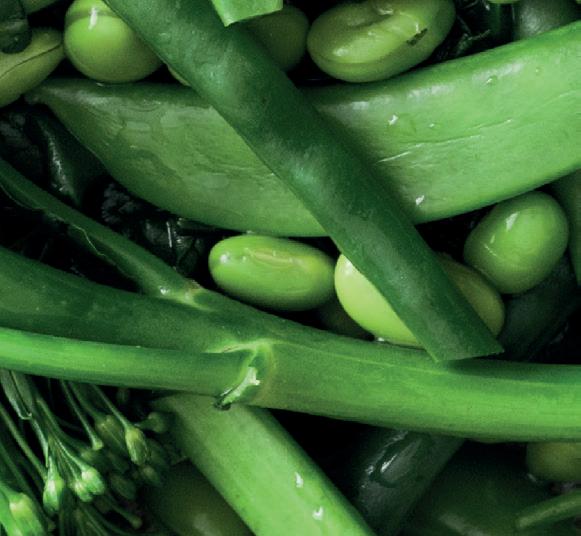
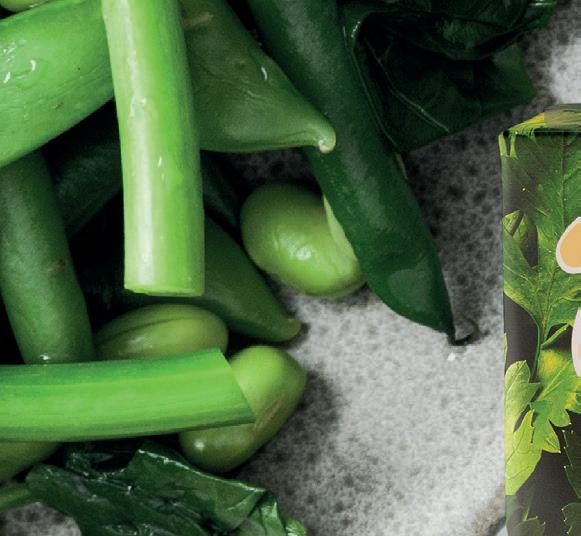
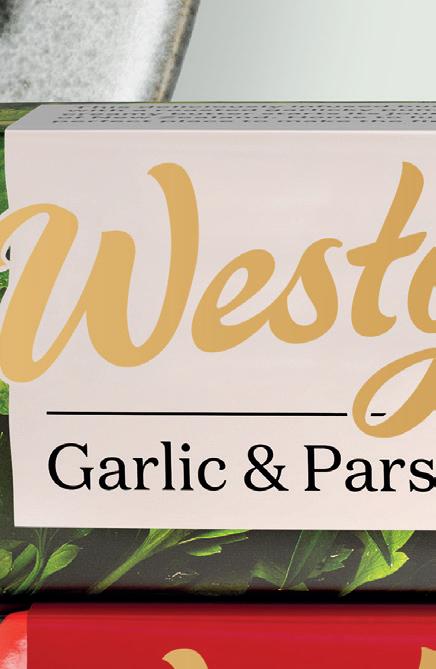

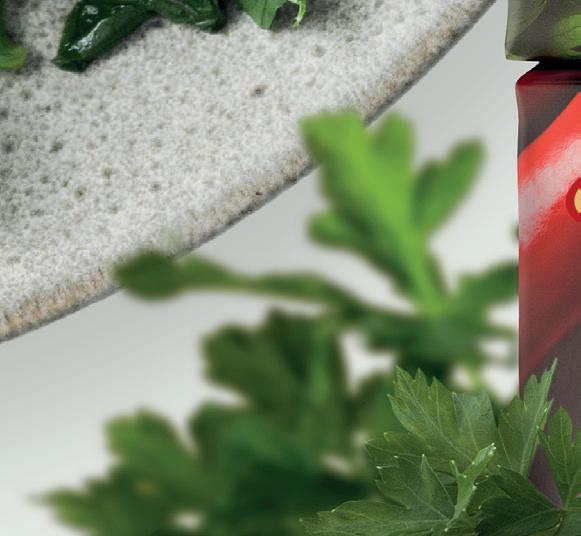

the Westgold Infused Butter Collection November 2022 • Vol. 15 No. 11 $ 10.95 Wholesale/Outlet grocery (see page 30)
Introducing
The Food and Grocery Council is an industry association for grocery suppliers providing members networking, events, industry information and strong advocacy.






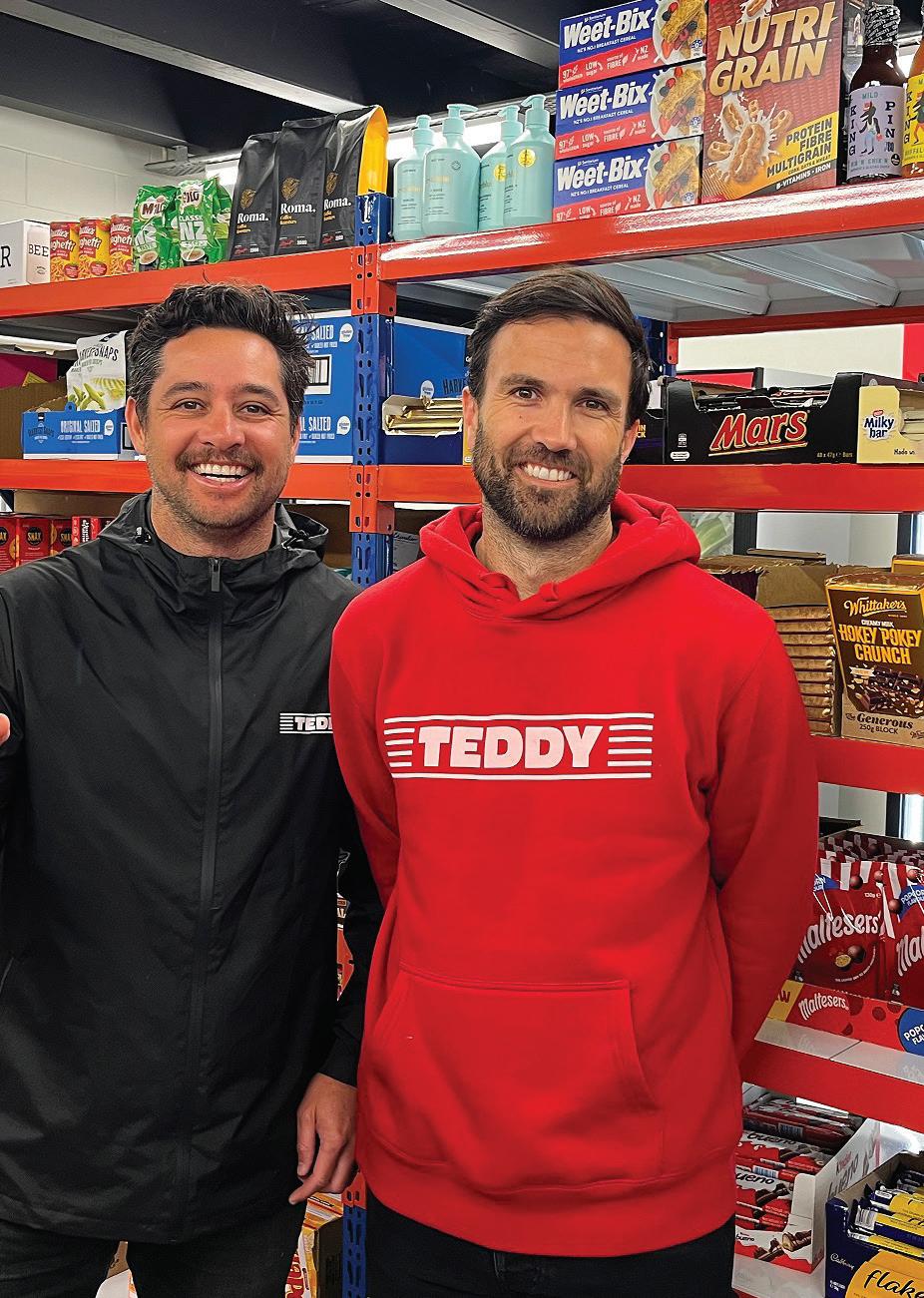
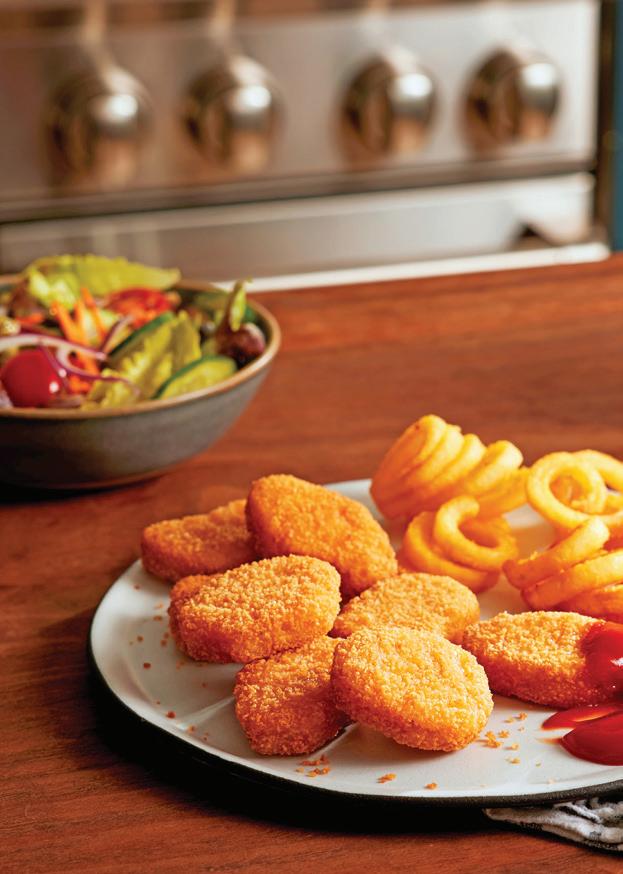
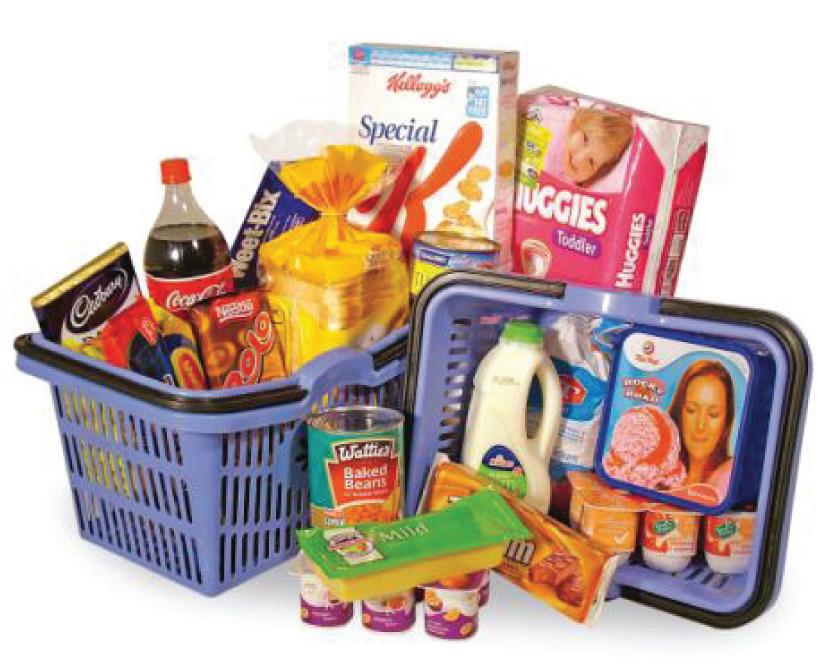



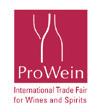
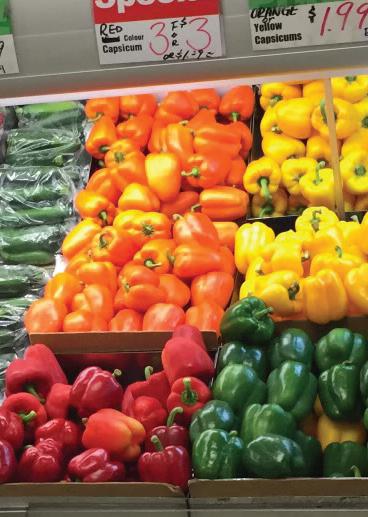




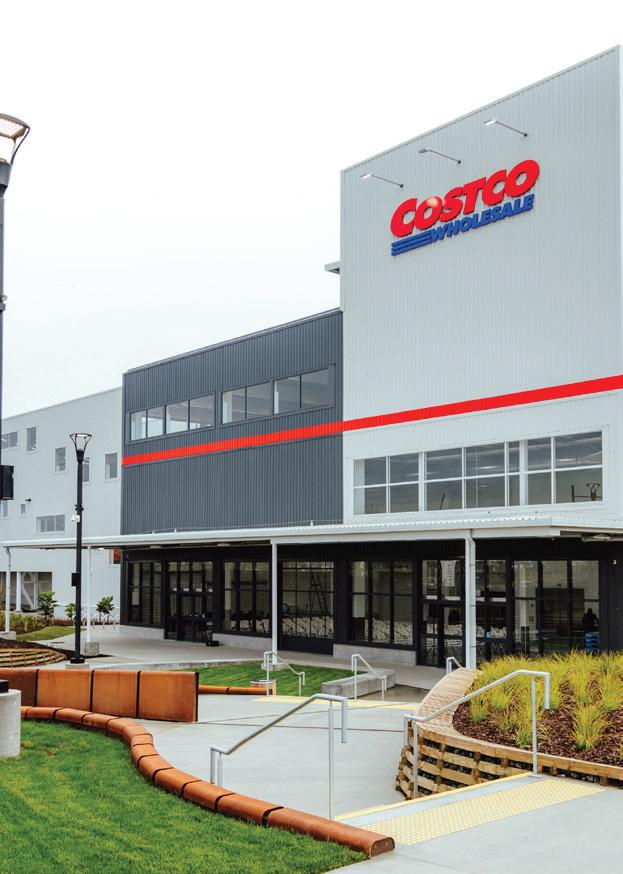





The NEW ZEALAND BEVERAGE COUNCIL is an industry association whose members cover all aspects of the non-alcoholic beverage market both in New Zealand and the export markets.


The Council members are spread throughout New Zealand and come together annually for a conference that covers industry issues and is addressed by international speakers. The organisation monitors product quality, sets standards for the industry and runs national competitions and awards.
THE NEW ZEALAND BEVERAGE COUNCIL (NZBC) P.O. Box 47, AUCKLAND 1140, New Zealand. Email: info@nzbc.nz Phone: +64 9 309 6100 DDI: +64 9 302 9932
2 I supermarketnews.co.nz
contents PUBLISHER Tania Walters GENERAL MANAGER Kieran Mitchell EDITORIAL DIRECTOR Sarah Mitchell EDITOR Caitlan Mitchell ADVERTISING SALES Felicity-Anne Flack, Caroline Boe EDITORIAL ASSOCIATE Sabrina Snoad SENIOR DESIGNER Raymund Sarmiento GRAPHIC DESIGNER Debby Wei ISSN 1173-3365 (Print) ISSN 2744-595X (Online) Retail 6, Heards Building, 2 Ruskin Street, Parnell, Auckland. PO Box 37140 Parnell, Auckland Call: (09) 3040142 | Email: edit@reviewmags.com ATTENTION GROCERY SUPPLIERS
Contact
•
•
•
•
www.fgc.org.nz food grocery & COUNCIL NEW ZEALAND food grocery & COUNCIL 4 9 18 20 28 14 This magazine is published monthly under license. Please direct all enquiries and correspondence to Review Publishing Co Ltd. This magazine is a platform for the industry and may include content that expresses views and opinions by contributing writers. Content is attributed to the author, and these opinions and the view/s are those of the author/s. They do not necessarily reflect the official policy or position of any other agency, organisation, employer or company. The opinions and material published in this edition are not necessarily those of the publishers unless expressly stated. All material appearing in the magazine, website and social media platforms is copyright and may only be reproduced with the written consent of the publisher. Copyright 2022 42 31 35
us for information on the benefits of membership: katherine.rich@fgc.org.nz
Networking • Industry Updates
Conference and Events
Education and Training
Advocacy and Law Reform
FACING THE MUSIC: Inflation, Staffing and Consumer Spending




With inflationary pressures expected to worsen over the coming year, brands are looking at ways to reduce costs, but there is likely no end in sight. Across various surveys, business confidence is low globally, with around 80 percent of businesses expecting worse to come in 2023.
Rising costs will mean consumers will continue to feel the pinch point at the checkout. Retail NZ's latest survey has found retail businesses in this country expect prices to increase on average by another five percent in the next quarter, after a six percent increase in the previous quarter.
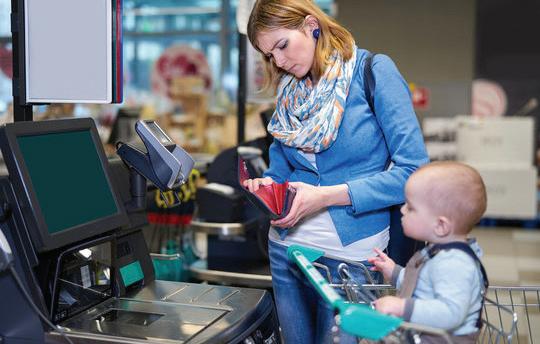
Staffing remains the number one concern; the upheavals we've seen in the job market this year have impacted businesses struggling to keep a full complement of staff. With staffing shortages comes wage increases as each company tries to woo new staff onto its team.
As consumers push back against price hikes, suppliers are working hard to keep consumers engaged. Already we see some activity across innovation, with new variants coming online to excite weary consumers and repackaging and shrinkflation across many brands. Product downsizing, or "shrinkflation," has happened before during times of high inflation because brands are also paying more for raw materials, production and distribution.
As we race towards the end of 2022, most will be happy to say goodbye to what has been a shocking year for business in many sectors. Grocery will not be immune
as we enter the new year. Consumers will feel the impact of higher interest rates, with many fixed mortgages coming off low rates. Consumers are likely to shift spending away from discretionary purchases because it's taking more to cover the essentials.
All eyes will remain on the consumer and their spending habits. While consumers are dealing with inflation by using credit cards more, saving less and drawing on their pandemic savings, consumer stamina will be the big question. We can expect a much smaller shopping basket in 2023, with intense competition for the consumer dollar.

November 2022 I 3 publisher'snote
Tania Walters Publisher
tania@reviewmags.com
New Zealand Food and Grocery 2022 Conference


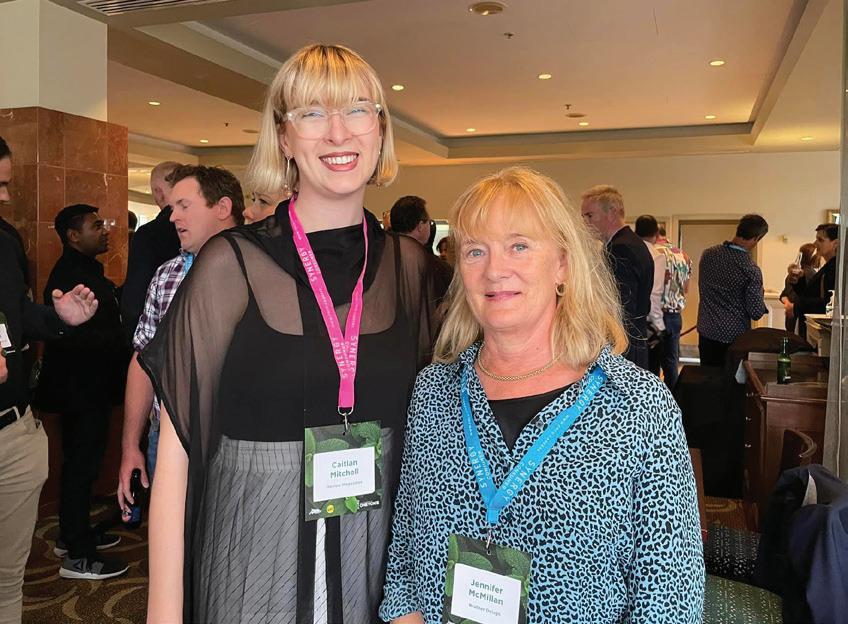
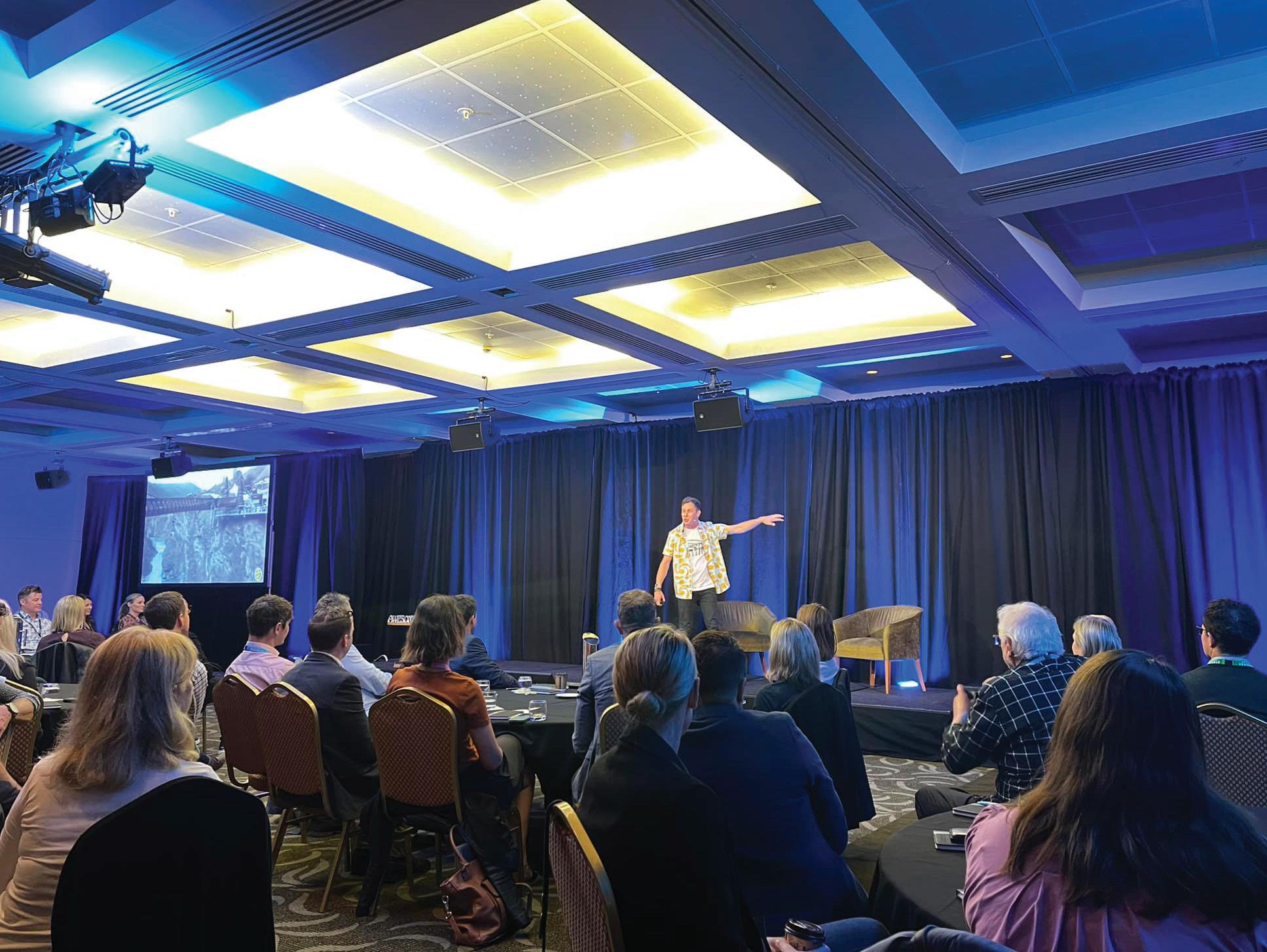



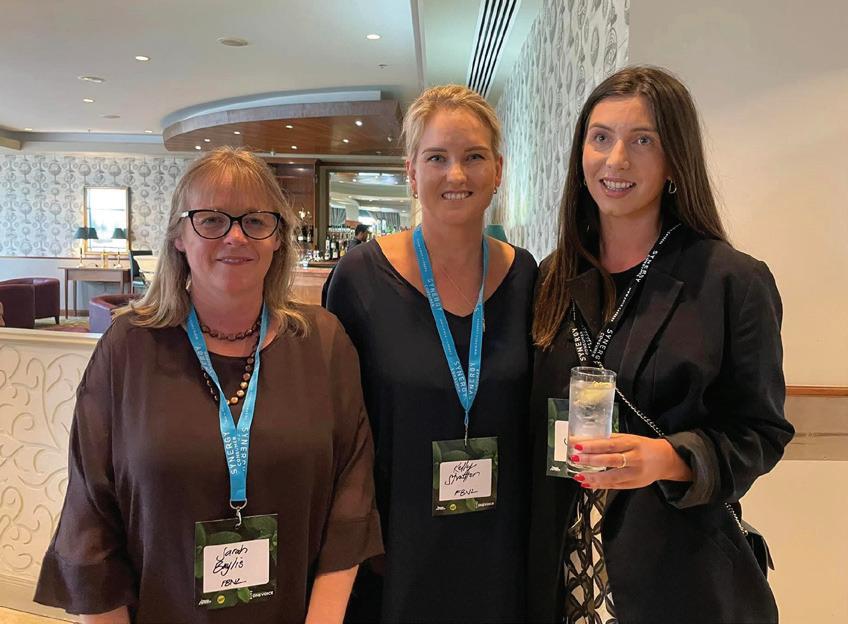




4 I supermarketnews.co.nz
The New Zealand Food and Grocery Council’s annual conference took place in Queenstown from 5 pm on November 2nd until 2 pm on November 4th. The busy schedule of events kept the industry informed and entertained. Held at the Millenium Hotel, industry speakers included Miek Pretty, Ceri Evans, Petra Bagust, John Kirwan, Cam Calkoen, Saskia Van Der Geest and Theresa Gattung.




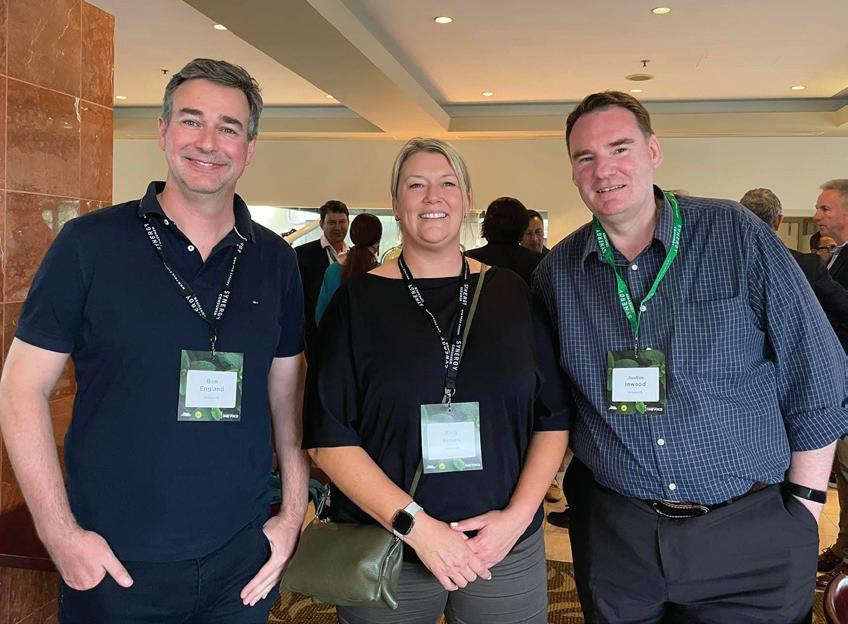


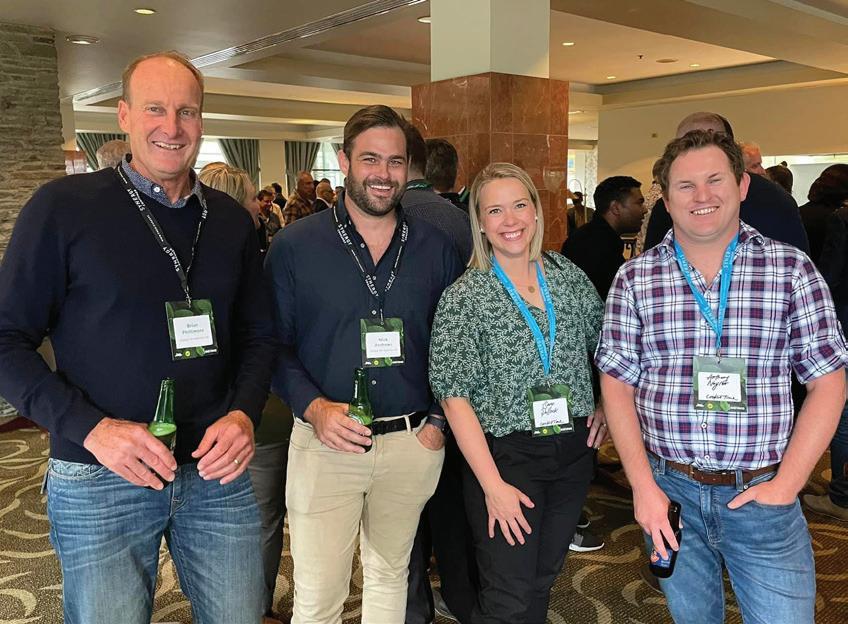








November 2022 I 5
FIRST COLUMN AND CONFERENCE
AS CHIEF EXECUTIVE
I didn’t go into my first Food & Grocery Council conference this month with any doubts about the passion and knowledge members have for their work and the greater good they are involved in, but if I had any, they would have been well and truly dispelled. Beyond all shadow of a doubt.
and how sustainability is such a big thing for consumers “it’s critical industry starts to own this.” I’m aware FGC members look forward to the type of information gleaned from such presentations, and we’ll see if we can amp them up at future conferences.
RAEWYN BLEAKLEY CEO, NZ Food & Grocery Council

What has struck me since meeting members in my time with FGC, and was strongly confirmed as I met and got to know members at conference, is their single-mindedness and focus on the job at hand, be it bringing me up to speed on the issues of the day – the Grocery Market Study, the status of sustainability progress, supply chain – or making sure I’m across aspects of the industry. It was great to be among people who care so much about what they do – to put the best products on supermarket shelves and at fair prices for consumers. The networking opportunities and breakout sessions being a neverending feast of great discussion, and the camaraderie in the industry is palpable and clearly enduring through the slings and arrows of recent tough times.
OneVoice was the theme, and it was very apparent everyone was indeed aligned about wanting to make the industry better, so all players benefit and get a fair go, be it suppliers, retailers or consumers. One of our speakers used the phrase “make a decent profit - decently”, which originates from the founding mission of Harvard Business School back in 1908. There was some lightheartedness about business school graduates, but this mission for the leaders Harvard trains really resonated, given the big issues of the day.
The 200 or so who attended were treated to a mix of entertainment, advice, and usable
industry information they could take back to their workplace. It’s a mix I intend to keep and to even improve on, if that’s possible, at forthcoming conferences. Cerebral palsy sufferer and international speaker Cam Calkoen set the scene with an inspiring, tearinducingly poignant and funny presentation. Then there were the tales of entrepreneurship marked by persistence and perseverance by 42 Below, Ecoya, and Trilogy founders Geoff Ross and Justine Troy; Nick Ashill’s story of incredible endurance and overcoming the odds to run across the US; Sacha Coburn’s delightful and deeply wise takes on leadership potential and extreme ownership; and Theresa Gattung’s invaluable tips on business innovation and governance.
It was great to have two of the three supermarkets thereafter another eventful year. Foodstuffs couldn’t make it due to a number of existing commitments but wished FGC all the best for the conference, while Countdown and Costco gave delegates some great insights. Jody Farrell gave a rundown on Costco’s operation, and she and Anton Ramshak gave delegates guidance at one of the breakout workshops on how to present them with new products. I think with their big splash in Auckland and their expansion plans, we can start talking about Costco as a third player.
Countdown’s Steve Mills and Pieter De Wet took us through their thinking around interactions with suppliers, emphasising they want to be much more responsive and how their future focus will be on digital transformation and sustainability. They said they would follow parent Woolworths Australia in changing their product review process to take in an entire department or portfolio, allowing them to focus on what is on-trend with customers and resulting in leveraging shelf space more effectively. This would give them more opportunity for product ranging to vary from store to store. No doubt members will be watching this with interest.
Data company IRI gave an exciting preview of their upcoming State of the Industry update, with Craig Irwin and Debbie Simpson-Pudney running delegates through how the surge in online spending since Covid has taken online forward five years,
Similarly for FGC’s breakout sessions, which are always among the most popular on the programme, no matter the subject. This year was all about industry relations, where members had the chance to discuss with our Industry Relationships Working Group what they would like the focus to be on with each retailer. It’s the sort of feedback FGC needs to help us advance some of these issues and work in the best interests of members.
Another popular session was an update by MBIE’s Deputy Chief Executive Paul Stocks on the Code of Conduct and Grocery Commissioner, both of which are contained in the Grocery Industry Competition Bill to be introduced to Parliament next month. The Q&A session that followed and the informal discussions Paul had over morning tea were also extremely insightful to members, and I’m confident left him appreciating the strength of feeling in the industry about these measures being effective.
Conferences are all about members, and because I’m new and still getting to know most of them, FGC Chair Mike Pretty and I decided we needed a way for them to get to know me better. We wanted them to feel at ease approaching me with issues and also to get a feel for my background and motivation for taking this role. It’s a priority for us that members keep me as informed as possible.
So, Mike took on the role of interviewer, and I sat in the hot seat. I emphasised that understanding what members wanted and how they work is key. I also shared I’m keen to look at how we do our work at FGC, including how we communicate with members, what services we offer, and whether we should widen or refine what the working groups are doing. But I want to do this in a considered way after I’ve deepened my understanding of the industry and got to know members better. I also spoke about how impressed I’ve been with how FGC has been operating and how genuine members are to find good outcomes around sustainability and consumers getting fairer prices. Our challenge is to get across these things and to represent them really well. The real exciting challenge for me is working with the membership, the Board, and the Government to make sure the market changes will be truly effective – for everyone.
I’d like to thank members for their warm welcome and their generosity of time and expertise. I look forward to working with them to take this great industry on to even greater things and to make sure FGC is the most valuable support to them and their businesses it possibly can be. n
6 I supermarketnews.co.nz FGC
Authentic


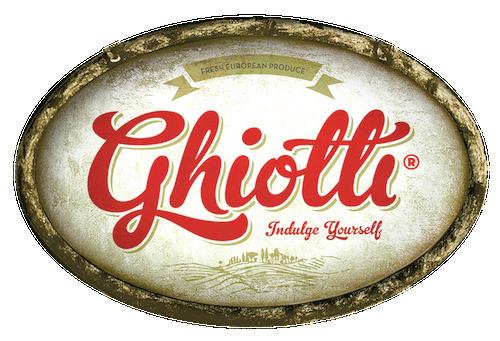
Supplying quality Italian smallgoods to New Zealand supermarkets, hospitality trade and delicatessen wholesalers. Call us now for authentic quality Italian smallgoods. Granarolo New Zealand Ltd 337 High St, Boulcott, Lower Hutt 5010, New Zealand +64 (0)9 551 7410
Italian Delicacies
Bread Given a New Life at Countdown
The Rescued range of upcycled products is now available for customers to buy at select Countdown stores. Rescued takes leftover bread from Countdown bakeries and turns it into easy-to-make vanilla, chocolate, lemon and gin botanicals and savoury baking mixes. It also produces plain and herb breadcrumbs. “When we first began our journey to tackle food waste in Aotearoa through upcycling, one of our biggest goals was to be selling our products in the same place we’re rescuing from - and we’ve done it,” said Diane Stanbra, Rescued Founder.
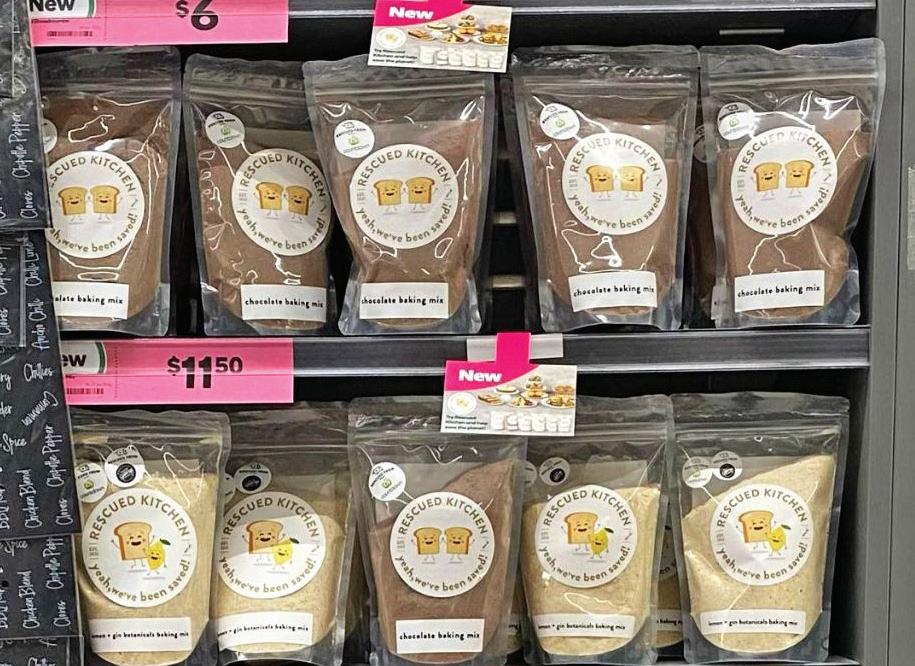
Read more here
Changes to Health Star Rating
The Health Star Rating system has received an upgrade that is tougher on sugar and salt. The system was first introduced in 2014, and the changes have been made based on a 2019 review. Products with high levels of sugar and salt will receive lower ratings, including breakfast cereals and fruit juices. Minimally processed fruit and vegetables will automatically receive a five-star rating. “We know people lead busy lives, and it can be difficult to make good choices at the supermarket. The Health Star Rating has been designed by nutritionists and health experts to cut through the confusion and give people nutritional information at a glance. We heard some people had issues with rating discrepancies, and we’ve listened to their concerns. By using the best and latest science from a range of experts and getting tougher on sugar and salt, those issues have been addressed, and the system is more robust,” said Vincent Arbuckle, New Zealand Food Safety’s deputy director-general.
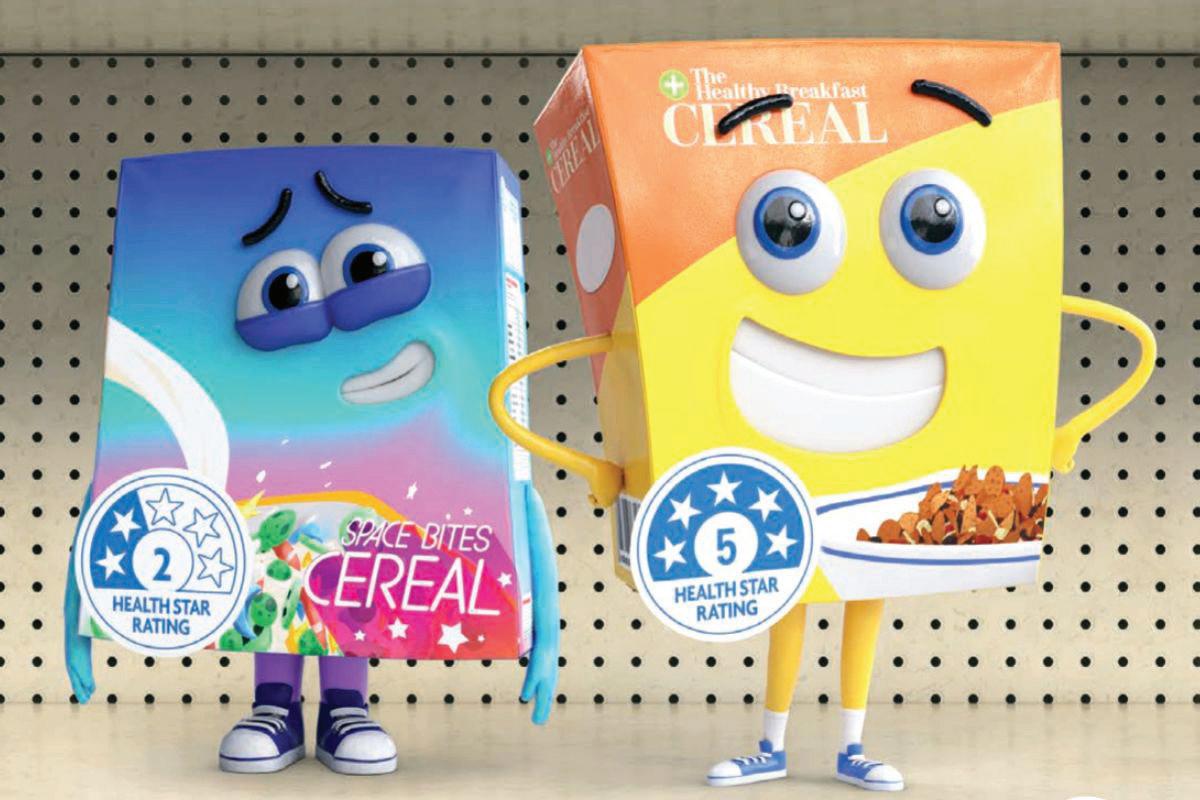
Read more here
Curious AF Bottle Shop
Curious AF, the drink brand founded by Lisa King, is set to open the country’s first alcohol-free brick-and-mortar bottle shop. The store opens on November 18 in Ponsonby, Auckland, on November 18, following the success of a pop-up store in July. “Earlier this year, we opened a pop-up alcohol-free bottle shop for the month of July and were blown away by its success. Across just a few short weeks, some 2000 people walked through our beautiful art gallery-inspired installation to discover what the Curious AF movement had to offer. And it didn’t disappoint. In the first few weeks, we sold out of many product lines and received an overwhelming number of requests to make the pop-up permanent. Four months later, here we are,” said King.


Read more here
Empowering Employees to Support Local Charities
Support My Cause, Coca-Cola Europacific Partners New Zealand’s (CCEP NZ) new community-focused programme has donated $30,000 to local charities. Employees are able to nominate a charity that is meaningful to them and vote on the organisations that will receive donations. The first round of support recipients are Awhitu Landcare, nominated by Luke Graham (Business Manager – Foodstuffs North Island), Auckland Women’s Refuge, nominated by Brendan Podayko (Information Assurance Manager) and Bellyful West Auckland, nominated by Richard Davis (Customer Business Manager). “The Support My Cause initiative is designed to support local charities, community organisations, or good causes that are meaningful to our people and support our communities in which we operate. We’re delighted we can support and provide immediate relief to those smaller causes delivering such important work for our communities,” said Chris Litchfield, Managing Director of New Zealand and Fiji at CCEP NZ.
Read more here
most read on web 8 I supermarketnews.co.nz
Wonky Fruit and Vege Box Continues Expansion
Off the tail of its Auckland expansion, the Wonky Box is headed to customers closer to home. Kiwis in the Wairarapa and Palmerston North now have access to the delivery service. “This is a big deal for Wonky! Palmy and the Wairarapa are home to many of our growers who were willing to give us a chance in our early days. It’s so satisfying to know we can now service the local community that helped us kick start. As a regional business, we are able to ensure that the box contents haven’t travelled thousands of miles, and customers should know that they are eating produce from farmers just down the road. It’s a great way to reduce your carbon footprint, which a lot of our customers are keen on,” said Angus Simms, Co-Founder.
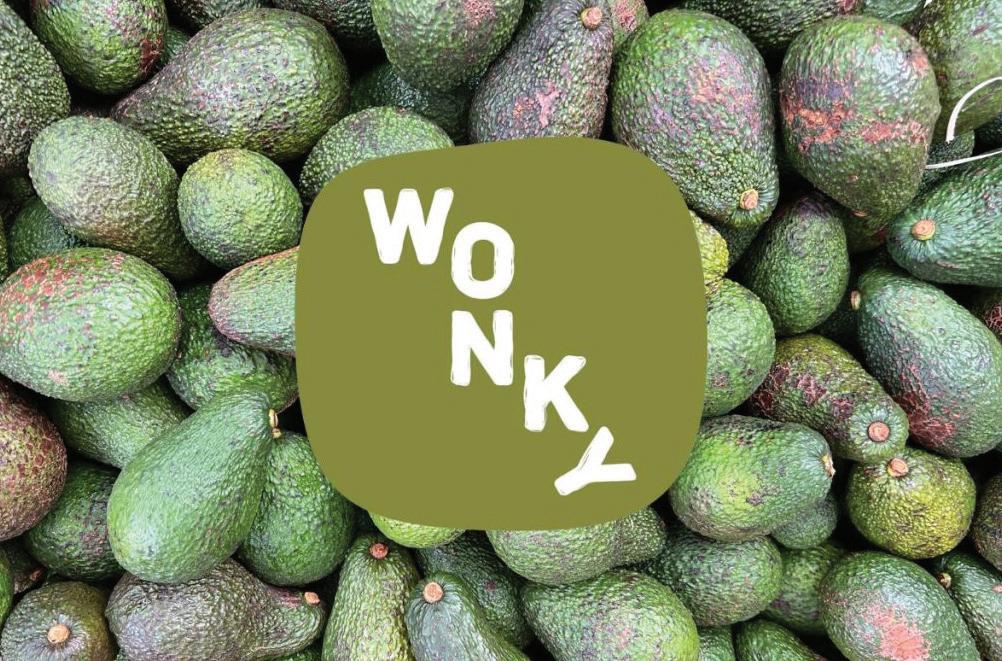
Read more here



First in Sustainable Trade Index


New Zealand was ranked first of 30 economies in the Sustainable Trade Index by Hinrich Foundation and the International Institute for Management and Development. The United Kingdom followed in Second place, Hong Kong in third and Japan and Singapore in fourth and fifth, respectively. The economies are judged in economic, societal and environmental pillars. “We have placed trade at the centre of our economic recovery, successfully securing four FTAs in the past five years. Our standard of living depends on our ability to trade and that in turn depends on adapting to changing markets. This ranking is a strong validation of our approach and goes to the heart of our global brand. New Zealand being ranked first in the Sustainable Trade Index is an excellent endorsement of our Trade for All agenda and our successes in economic growth, environmental protection, and societal development,” said Damien O’Connor, Minister for Trade and Export Growth.
Read more here
Foodstuffs Commitment to More Social Supermarkets
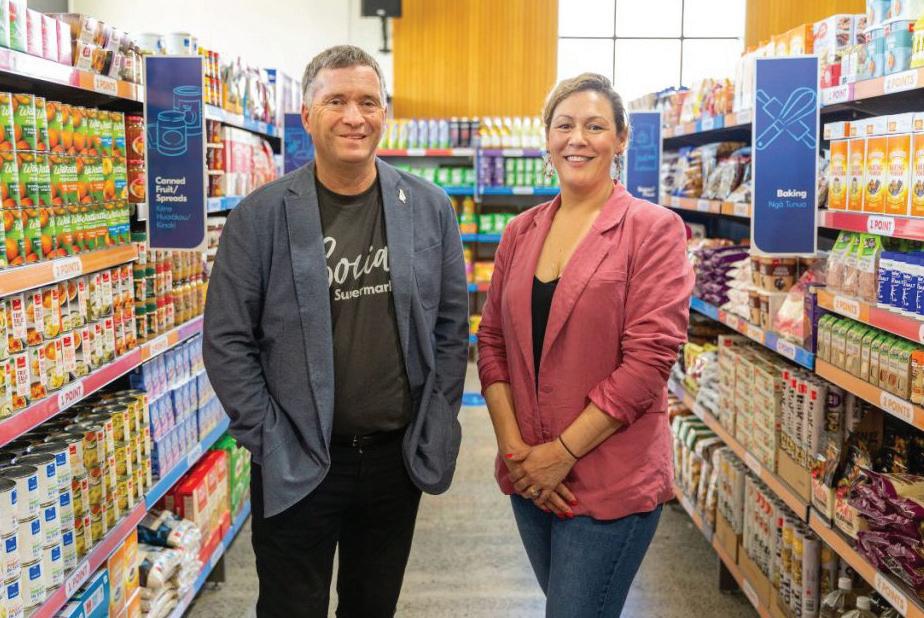
As a part of Foodstuffs ‘Here for New Zealand Pledge,’ the cooperative has announced plans to open social supermarkets across the North Island in partnership with local community organisations. The success of the Wellington, Kaitaia, Tokoroa, Whangarei and Otumoetai offerings have been seen through giving Kiwis dignity in choice for their food support. “I’m announcing our commitment to open social supermarkets right across the motu, providing a more dignified and respectful way to access food when times are tough. Rising inflation and cost of living pressure means budgets are being stretched more than ever, and many hard-working Kiwis are really struggling. Since partnering with the Wellington City Mission to open New Zealand’s first social supermarket 18 months ago, we’ve been humbled by the response and see social supermarkets as being an important way we can help everyday New Zealanders get access to the groceries they need with dignity,” said Chris Quin, Foodstuffs North Island Chief Executive.
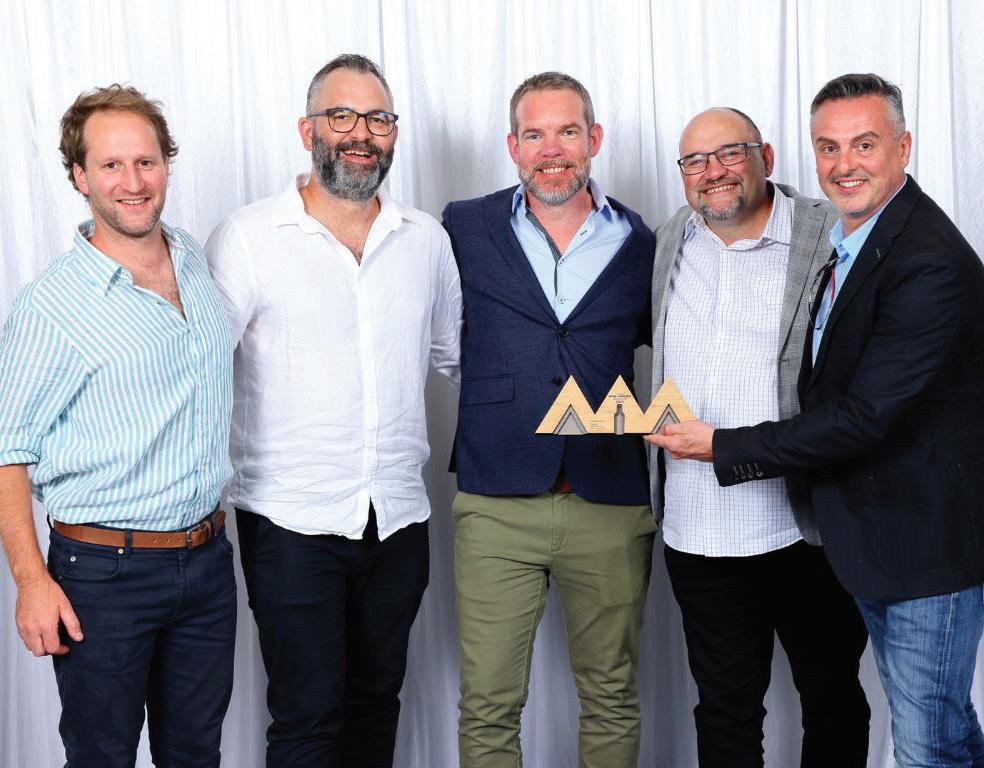
Read more here
Wine Label Wins Five Trophies in One Week
Giesen won five awards across the New Zealand International Wine Show, the Marlborough Wine Show and the National Wine Awards of Aotearoa New Zealand, in one week. “It’s not every day you win awards, let alone four on the same day and then five in one week, across three different varietals. It speaks to the diversity of quality we offer at Giesen – something our team works hard to achieve,” said Duncan Shouler, Chief Winemaker.
Read more here
November 2022 I 9
functional food&drink
FAVOURING FUNCTIONAL FOODS
The global functional food market was worth $482.6 billion at the end of 2021 and is expected to grow to $909.5 billion by 2028. The CAGR for that time period is 9.5 percent. The trend saw a rise in mid-2020, growing by 11 percent as consumers became increasingly aware of personal health and wellness because of the pandemic. This appreciation is set to continue with consumers as ageing populations, highly processed diets, time scarcity, and financial stresses create a need for innovative health solutions.
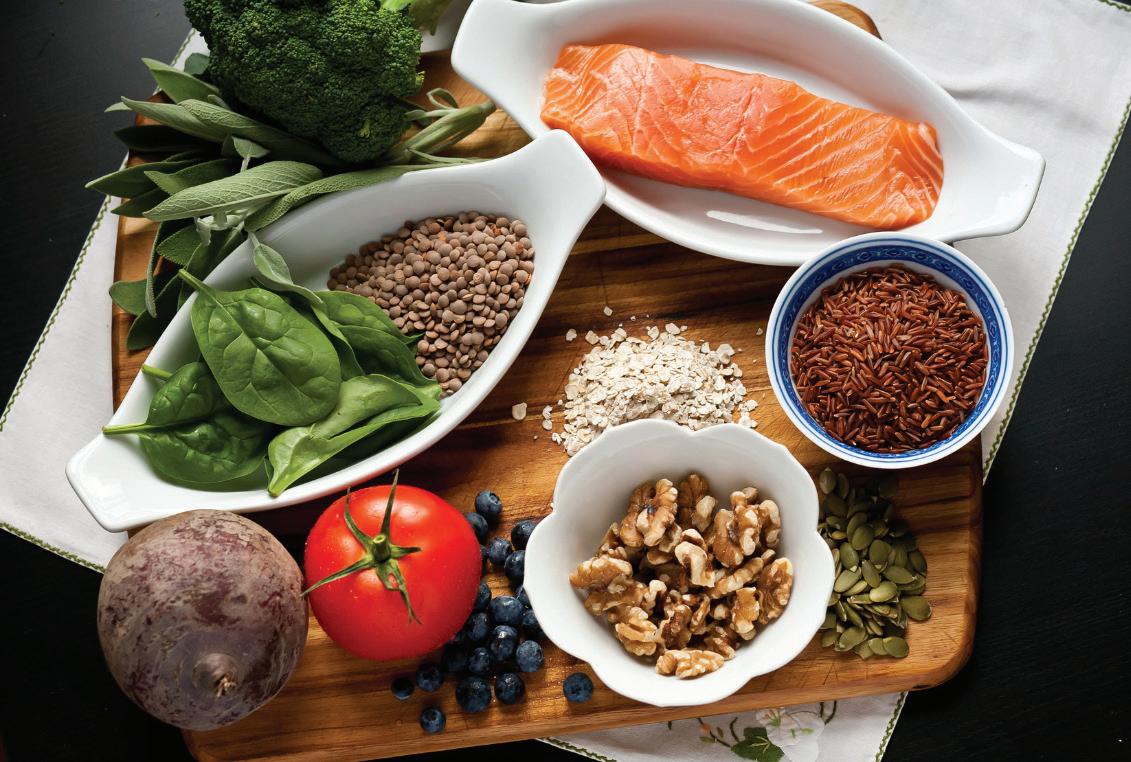
Hot topics in the functional food market are relaxation, sleep, mood, mind, energy and immunity, alongside the health concerns of obesity, diabetes, gut health and cardiovascular diseases. Popular ingredients at the moment include magnesium, botanicals, protein, vitamin D, collagen, hemp and CBD. However, functional dairy products have the market lead, specifically those containing prebiotics, probiotics and high protein levels.
The Asia Pacific region holds the highest market share for the industry, with supermarkets and hypermarkets as the leading distribution channels - consumers appreciate the convenience of functional foods being in their major retailers.
In a very similar market to New Zealand’s, Australia is seeing growth in functional beverages and snacks. High-fibre, Kombucha, nootropics, plant-based and weight-loss drinks are all seeing an increase in consumer
interest. Fermented drinks are expected to show the strongest category growth. Functional snacks remain competitive, with probiotic and prebiotic grocery sales increasing 50 percent yearly. The proteinenriched product market is currently seeing some oversaturation.

It is important to remember that not all functional foods are created equal, and as some consumers start to look for food as medicine, there needs to be transparency in the functional claims. Marketing strategies
can include providing recommendations for the product from doctors, nutritionists and other health experts. These claims need to be relevant and accurate.
Taste is also a critical factor in the functional foods market, where added extracts, herbs, or botanicals often drastically change the taste. Counteracting the usual bitterness, off taste, and undesirable flavours are imperative to consumer buying decisions. For example, citrus flavours often work well to mask antioxidant supplements. n
10 I supermarketnews.co.nz
Food is no longer just a source of nourishment; the need for functional foods means products must extend beyond their basic nutritional value.
PRODUCER PERSPECTIVE
Producers in the functional food and drink sector are noticing the increase in demand for science-backed natural nutrition.
Larger producers such as Fonterra are beginning to catch on, the company announced the launch of its cognitive supplement brand, BioKodeLab, at the end of September. Unilever and Nestle have also been making moves among international supplements and vitamins. But it is the small growing producers that have fostered the sector.
Trends noticed by those in the game are adaptogens, immune support, gut health, mushrooms and natural sugars. When utilising these ingredients, or creating a claim, scientifc evidence is the most important factor.
“From the day we started Ārepa, our goal was to create a scientifically proven brain drink. Before we were on the shelves, we engaged with one of the world’s top neuroscientists Professor Andrew Scholey to help us create our patented formula which actually works,” said the team at Ārepa.
“We’re actually one of the only beverage companies in the southern hemisphere who have undertaken clinical research of a finished product in humans, and we’re proud to put our product on the line to prove that it does what it says it does… We see continued and sustained growth in the industry as
the science will only get stronger and more compelling. We are expecting to publish two more studies in early 2023 and have another seven clinical trials across leading universities in NZ and AU.”
Similarly, Vicki Brannagan from Wise Foods saw a gap in the everyday healthy snacking space and has produced a healthy, allergenfriendly cookie in multiple flavours alongside plant-based and collagen-infused variants. She also noted that the functional food and drink industry is about staying true to claims.
“Our marketing strategy as a functional product is to stay true to label, and true to the claims criteria in the Foods Standards Code. We’re very particular about avoiding the more spurious style of claims that are common in this space. Our key messages are less about cookies, and more about innovative flavours and simple label claims, at the convergence between genuinely healthier snacks and indulgence.”
Even though scientific claims are increidbly important, regulation within the industry does not make things easy for producers.

“Development of the functional food sector here in New Zealand is, unfortunately, hampered by a regulatory environment which some would argue is not fit for
purpose. Key to this is the definition of what a nutritive substance is. Nutritive substances are closely tied to novel foods in the FSANZ Code. The current definition is sufficiently ambiguous so that many ingredients used in normal practice would and could be captured as being ‘nutritive substances,’ leaving a substantial grey area about what is or isn’t permitted. As a result, this was tested in Australian courts in 2007. The outcome forced FSANZ (then ANZFA) to initiate a review of novel foods and nutritive substances. The original proposal for the review was initiated in 2012. Ten years later, there has been no resolution,” said Martyn Atack, Technical Director of Cogito Food and Beverage.
“We have the Supplemented Food Regulations, intended to fill the gap in the interim. However, the two most important categories that would benefit from allowing supplementation are Formulated Meal Replacements and Formulated Supplementary Foods, which are specifically excluded from being further supplemented with additional nutritive substances. We also have the Dietary Supplement Regulations 1985 administered by Medsafe. The date on these regulations is a clue to just how fit for purpose these 20thcentury regulations actually are.”



Regardless the common theme from the producers remains to be evidence and integrity, which provides an obvious marketing pathway for any product in the market. n

November 2022 I 11
Kiwi Brook Kirk was drawn to the beverage industry as something new and exciting. He considers the industry to be at a crossroads at the moment, and the need for affordable sugar-free and low-sugar products is more important than ever.
As the new CEO of Kiwi Beverages Sugar-Free, Kirk is enjoying the challenge of elevating the company brands to an international level and utilising his background in exporting to complement what the local sales team are already doing.

“The drinks we make here at Kiwi Beverages Sugar-Free are helping to show both buyers and consumers that there are alternatives to the mainstream sugar-loaded options that have been around for years. The development and ingredients that go into our beverages are providing worldclass options in the fruit drink and energy categories,” said Kirk.
Kirk is an Auckland local, attending Sacred Heart College and completing a Bakery apprenticeship in St Heliers and Che Lui in Howick. He and his brothers purchased what was then the Meadowbank Continental Bakery and made many changes to the business over 13 years, including changing its name to the one it
still holds today - Meadowbake.
Kirk was at Progressive Enterprises (now Woolworths NZ), running the in-store Bakery Division for 14 years and in the Service Deli for a further year. He had a two-year stint as Operations Manager in Brisbane’s large artisanal bakery, Wilbreads, then returned to NZ to work with Lowe Corp. When Covid hit, and travel stopped, the program shut down, leaving Kirk time to enjoy the first lockdown looking for something new.
“The answer came quite left of field when I was offered a GM Business Development role with the Clear Protect Group. CPG are New Zealand’s preeminent antimicrobial and pathogen specialists for the food industry. This was fantastic as it meant I could take my manufacturing knowledge and apply it to solutions for some of New Zealand’s biggest and most iconic brands.”
Now at Kiwi Beverages, Kirk has so far enjoyed the passion that David, Amanda, the rest of the Directors, and the team have for the industry and business. The company’s best-selling product would have to be the entire Frutee range, and Kirk’s new passion showed when describing the Strawberries and Cream flavour.
“It’s especially good, If you haven’t tried it yet, you’ll understand once you have.”

The biggest challenges the company faces right now are supply and logistics. A massive amount of focus is needed from the entire team at Kiwi Beverages to ensure they stay on top of delays and shortages.
To ensure the fridge or chiller is fully stocked with sugar-free and low-sugar drinks, Kiwi beverages are the team to talk to. Kirk left with some advice for innovation in FMCG: Understand your market and the retailer’s needs and make sure you work towards them. n
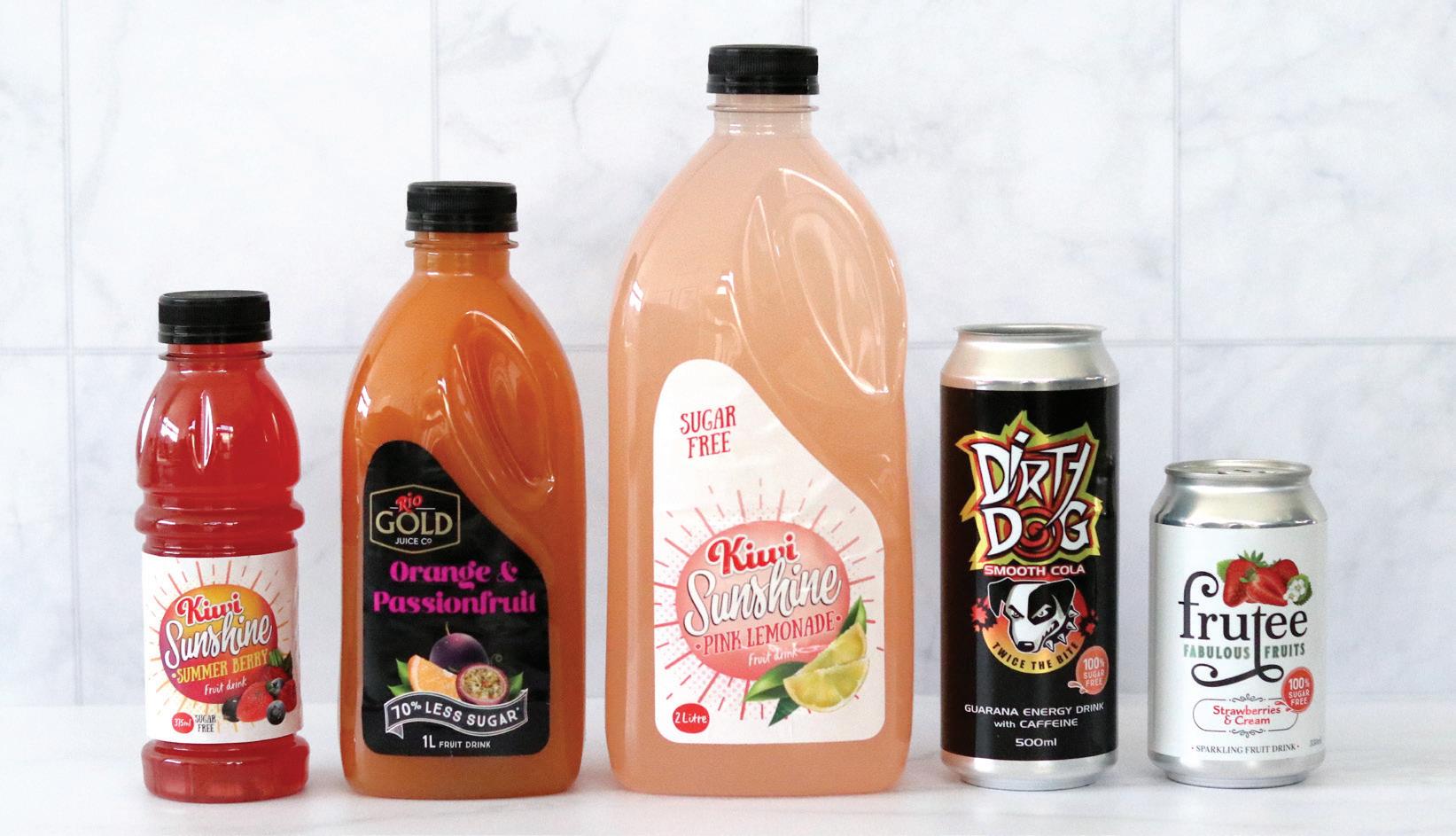
BROOK KIRK CEO, KIWI BEVERAGES SUGAR FREE
20
minutes with
12 I supermarketnews.co.nz
The drinks we make here at Kiwi Beverages Sugar-Free are helping to show both buyers and consumers that there are alternatives to the mainstream sugar-loaded options that have been around for years.


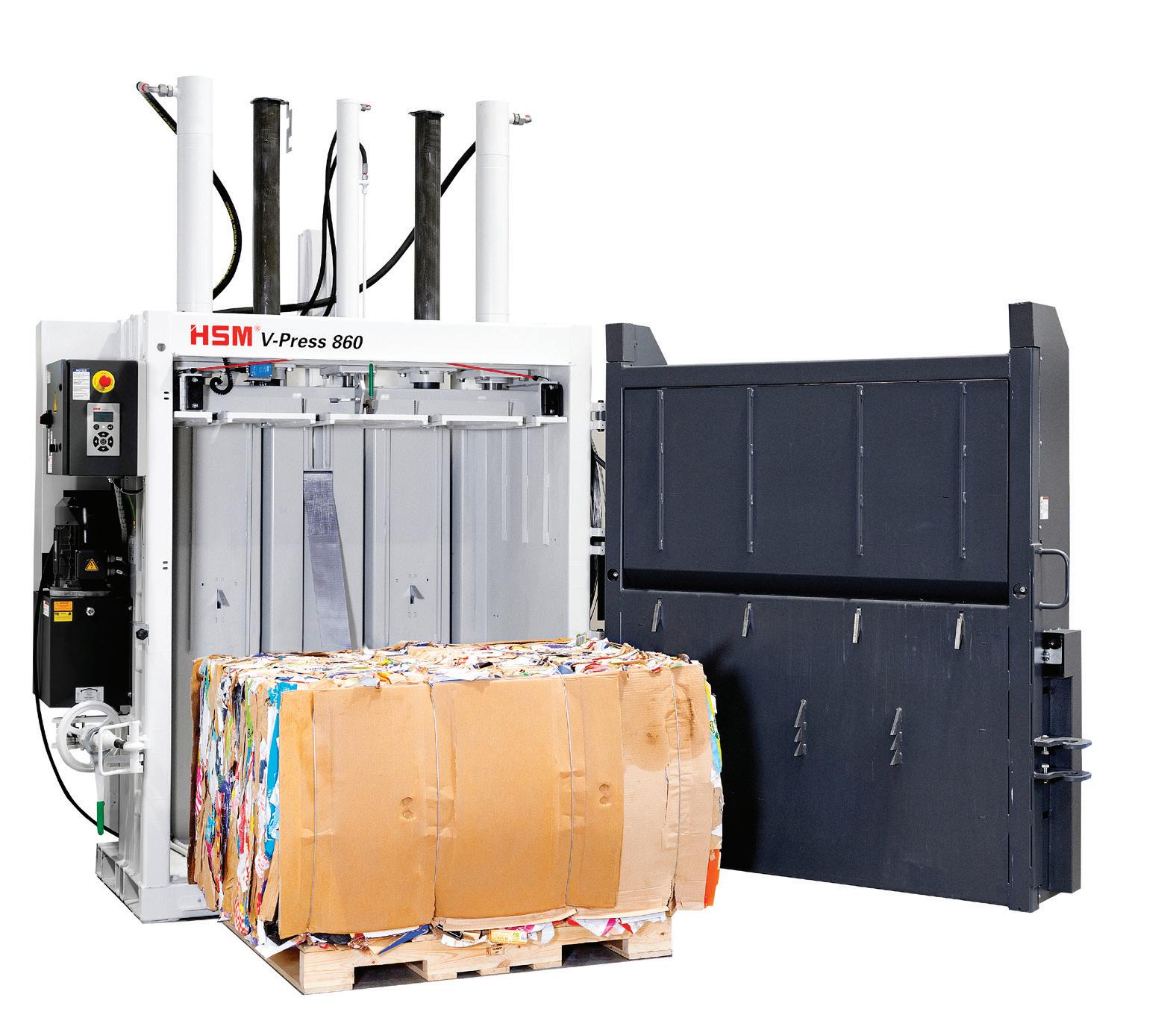


Free Call 0508 474 663, mobile 021 310 821 or email dave@pioneergroup.co.nz www.pioneergroup.co.nz Contact Key Account Manager DAVE MORELLO to request a quote for your area. Excludes GST and Freight. Limited balers in stock. Subject to availability at time of order. Christmas Supermarket Baler 860HD CHRISTMAS CARD BALER BUNDLE • 1 x HSM V-Press 860 Plus Baler at Supermarket Special Pricing • FREE 10 x bundles (250kg) of Baler Wire (Value $1252.50) • Extended Warranty to 24 months – With Purchase of Annual Service Agreement 605ECO PLASTICS BALER BONUS BUNDLE (Valid with purchase of 860HD Christmas Baler Bundle) • 1 x HSM V-Press 605 ECO Plastics Baler at Supermarket Special Pricing • Free Installation and Training (Value $627.00) • Free Box of Plastic Strapping • Free Annual Service Agreement (With valid 860 Service Agreement) • Extended Warranty to 24 months
store of the month KUMEU PRODUCE MARKET
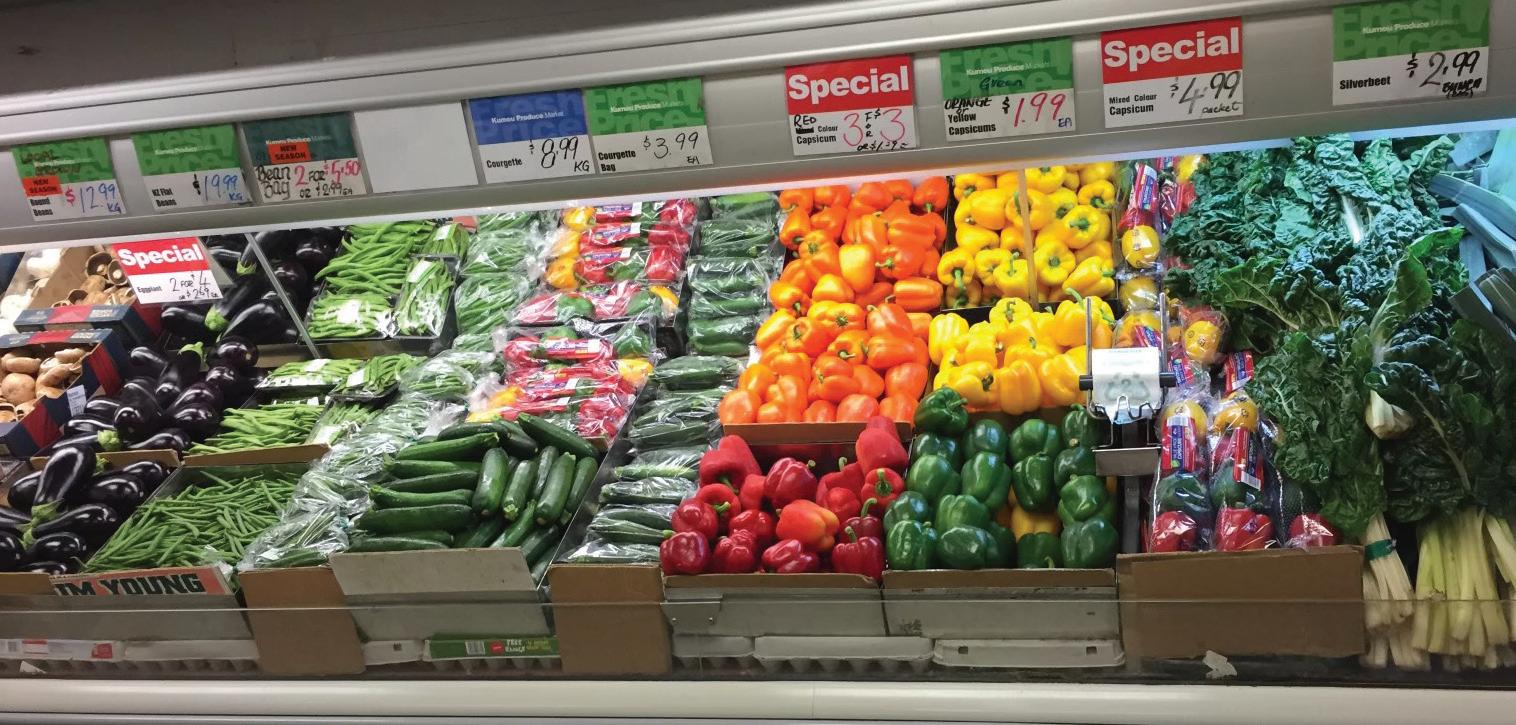
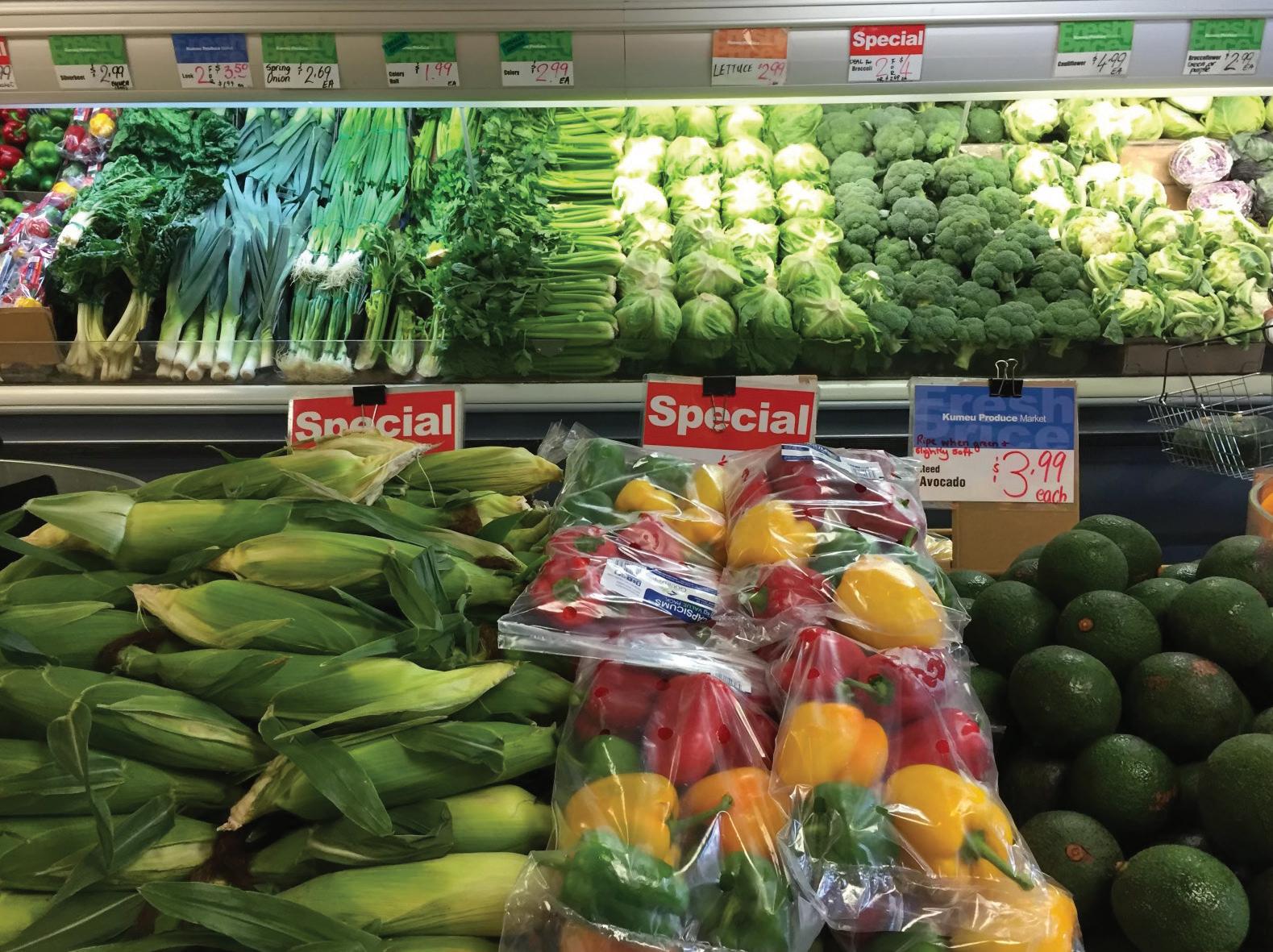 SANDY CHENG STORE OWNER
SANDY CHENG STORE OWNER
Sandy Cheng and her husband Jerome manage Kumeu Produce Market, located at 407 State Highway 16. Before moving to New Zealand, the couple lived in Taiwan, where Sandy worked in Finance and Jerome in business. Shortly after getting married, they picked up everything they had and immigrated.
Upon arrival in New Zealand, the couple studied at a polytechnic and started working at their local greengrocer on Hobsonville Road.
After the birth of their two sons, an opportunity to own and operate the Lincoln Fresh greengrocer presented itself, and the couple became owneroperators for the first time.
Cheng noted that owning their first business was challenging, but she felt lucky to supply to her community. The couple opened their second store, Kumeu Produce Market, in search of a new challenge 12 years ago. They have since passed on Lincoln Fresh, so their
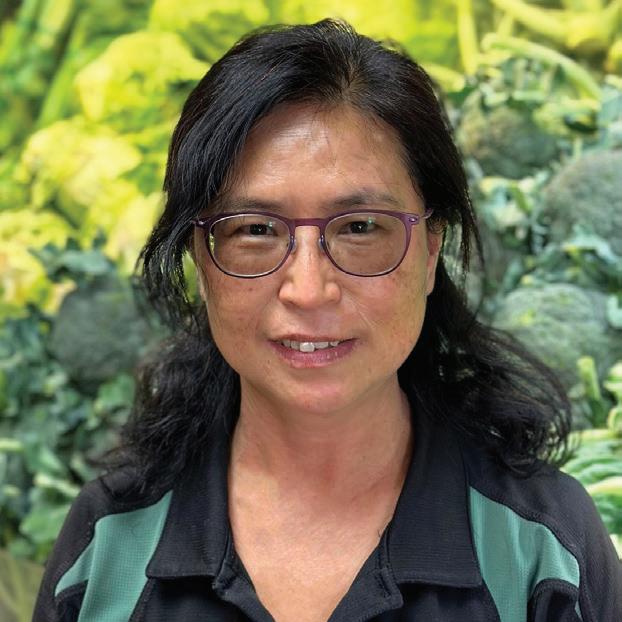
sole efforts can go into the Kumeu store.
“What drew us into being greengrocers was that we found it important and necessary that people could get quality and nutritious produce at reasonable prices.
We have maintained our passion by supporting the local and wider Auckland community with quality produce; we also like to support local growers and farmers.
From locally grown tomatoes, strawberries and other organic products, we also deliver to several businesses, cafes, and restaurants daily,” said Cheng.
For Cheng’s husband, Jerome, the typical day starts at 3am. He can be
14 I supermarketnews.co.nz
found at the markets sourcing fresh produce for the store, and she credits this dedication to their ability to maintain quality and rage - “As they say, the early bird gets the worm.”
The store has a strong team of ten. Cheng and some of her staff will set up the shopfront between 6am and 7am, restocking, helping early customers and picking produce for the local business delivery run.
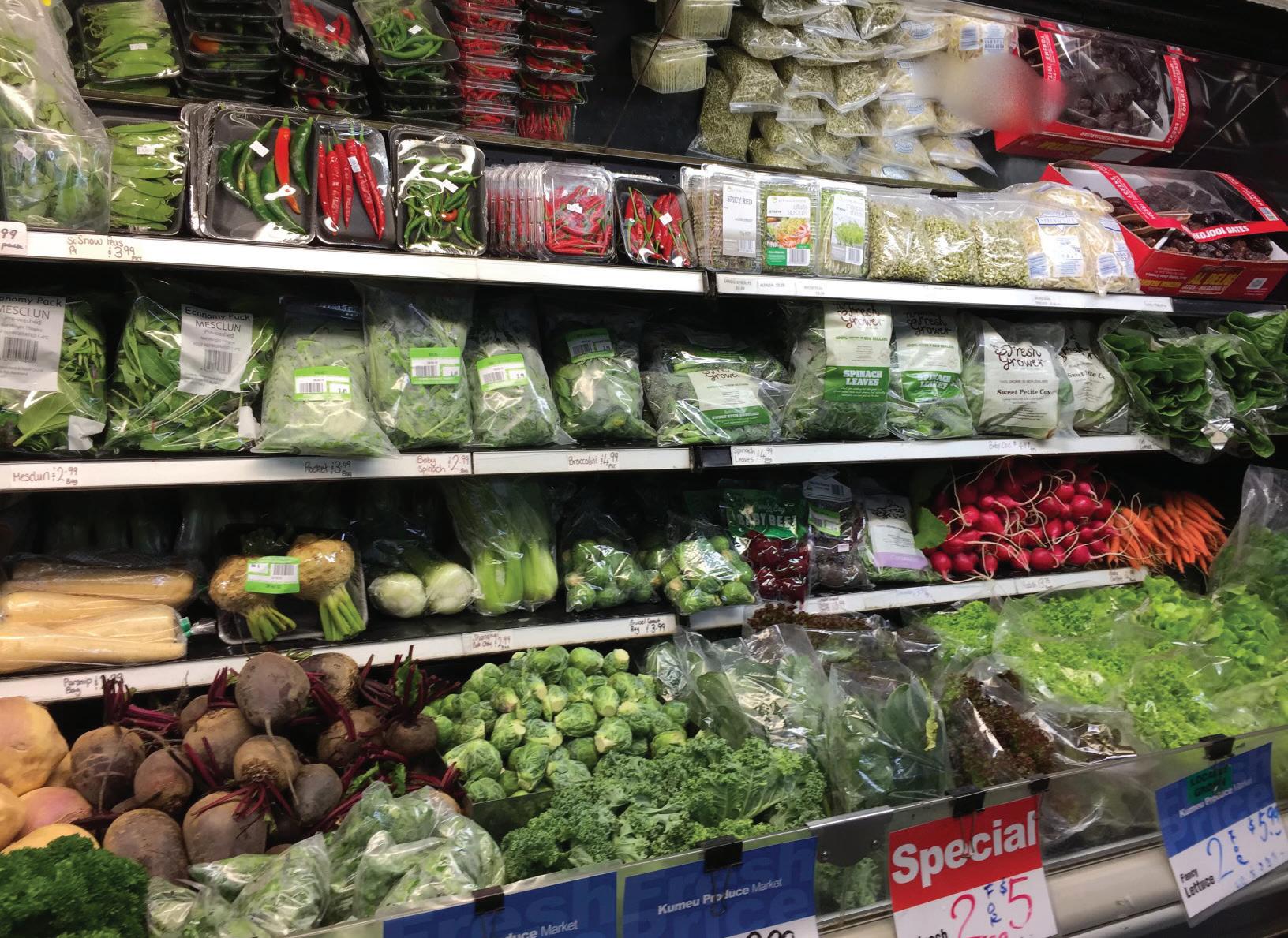
Throughout the day, operations run smoothly and involve bagging fruit and washing and trimming vegetables. Part-time staff take over in the afternoon while Cheng and her husband prepare for evening deliveries.
As a small family business, Cheng values communication. There is so much going on in the store that asking each other for help makes things more enjoyable and helps the team better serve customers.
“I recall a time when we still owned both businesses. A customer came to Lincoln Fresh and mentioned they liked our Gold Kumara and asked to purchase a box. They said they usually go to a store in Kumeu for their Gold Kumara, but they had just sold out for the day. When the customer found out that we managed both stores, they were not surprised and noticed the similar qualities our stores displayed.”
She is also incredibly proud of her store’s history of supporting local, small and growing businesses, knowing firsthand how hard it can be to establish a brand in a competitive market. Just the other day, two small business owners mentioned to Cheng that Kumeu Produce Market was the first
store they had been stocked in, and she was incredibly proud to give them the opportunity.
Besides seasonal fruit and vegetables, locally sourced foods and organics are the bestsellers in the store. In the summertime, strawberries and stone fruit varieties are popular, and Cheng takes pride in the store’s offering of local freerange eggs.
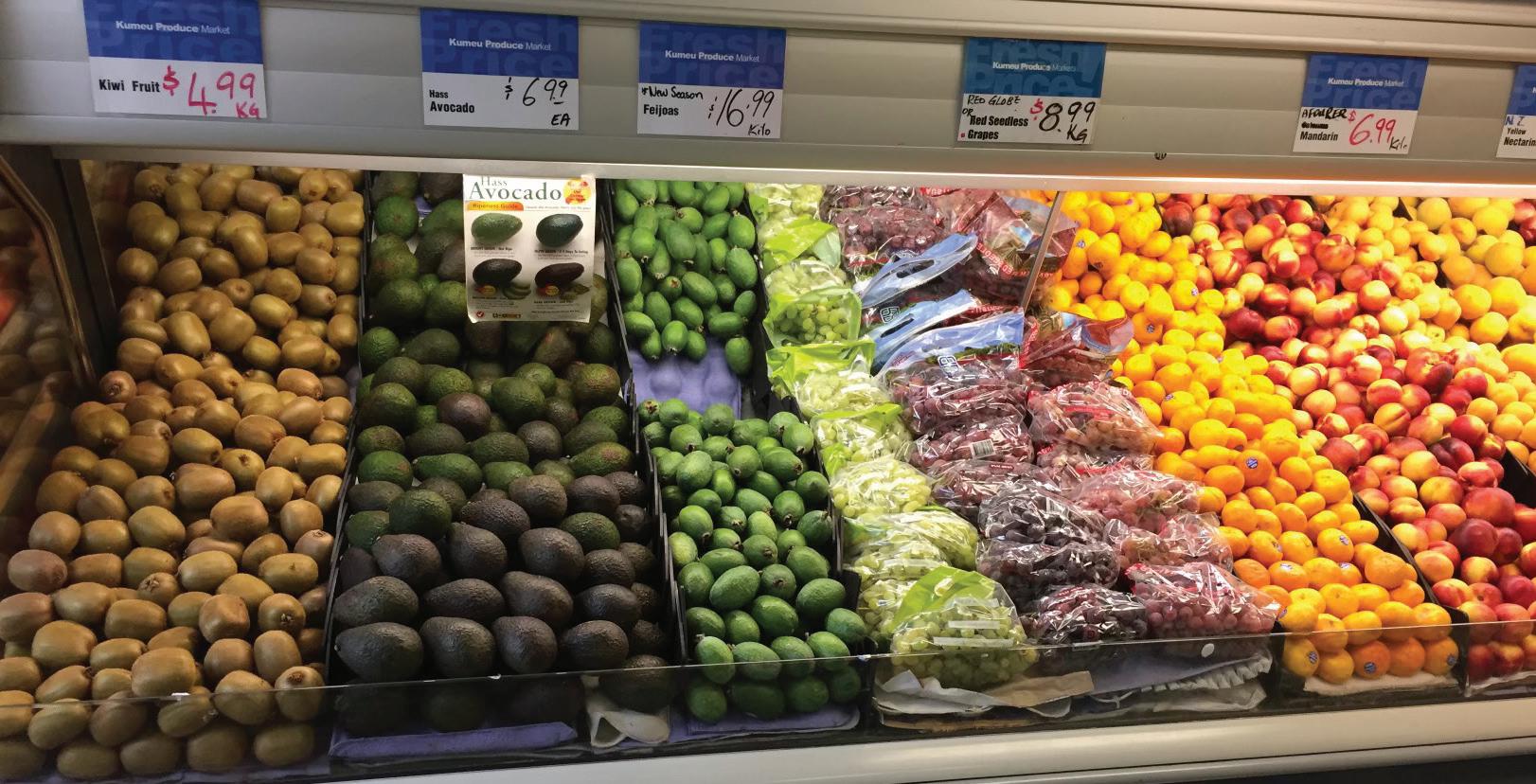




The specials are displayed on traditional black signage boards, and information occasionally goes into local print media. The staff are very diligent with social media, posting on the store’s Facebook page and local community groups.
“We haven’t been able to expand our digital marketing and online presence. It has certainly been a challenge.
I imagine it is the same with many other small businesses that have operated for many years and may not have the resources or expertise to pivot to an online business to do home deliveries like supermarkets.”
Despite this, Kumeu Produce Market has flourished thanks to the support of the local community and Sandy and Jerome’s commitment to sustainable and quality organic produce. n
November 2022 I 15
GETTING TO KNOW LIAM CRAUSE
Learn more about the Senior Marketing Manager at Cartology NZ, his role, what differentiates Cartology and what clients can expect over the next 12 months.
multiple projects, everything from creating the website, arranging a launch event, determining the brand position and customer value proposition to gathering and translating customer data into insights to support the sales team.
its infancy but is sharply on the rise, and Cartology are right at the forefront. They have a vast omnichannel media ecosystem with unrivalled access to first party data.
lot since Cartology’s inception, and is constantly looking to international markets that are more mature than NZ to give a glimpse into what the future holds.
LIAM CRAUSE Senior Marketing Manager, Cartology NZ
The Role
Crause has the privilege of setting the marketing strategy for Cartology that covers four key areas of the plan; Brand, Communication, Insights and GTM. Having previously worked in Brand and Shopper Marketing roles for the likes of Diageo, GSK and Lion, he is very familiar with retail media networks. Using that experience, he can apply a client lens to all the marketing activity run at Cartology.
“I have been with the business since it launched in February 2021 and over the past 18 months I have worked across
It sounds like such a cliche but no two days for me are ever the same. One day I am setting the strategy, the next day I am activating that strategy across owned, earned and paid channels. I also get to lead a very talented Assistant Marketing Manager, Cassandra, and together we share the workload of spreading awareness of the Cartology brand.
More recently, I have started writing thought leadership articles about the rise of retail media and even had the opportunity to speak about it at The Future of Retail Marketing conference.”
Partnering With Cartology


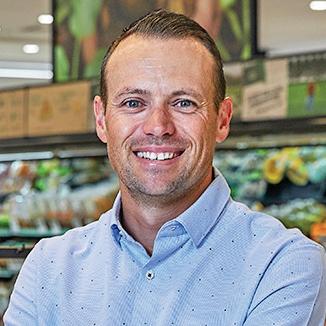
The Cartology North Star is to shape the future of retail media through trusted partnerships with the Woolworths Group ecosystem and brands. Retail media in New Zealand is still in
“When we combine those two together, we are able to drive real customer impact to help grow brands. Brands that sell through retail platforms want to influence customers not just at the point of purchase but throughout their entire shopping journey. Cartology Retail media enables brands to build better connections with customers instore and online.
Our retail media proposition starts with customers, our role is to ensure that we are creating accretive experiences for customers that are contextual and a seamless extension of their shopping experience.
Activating campaigns that are hyper relevant to those customers is the next component, whether they are in our network or off network and lastly and most importantly is our ability to measure the effectiveness of these campaigns through closed-loop reporting.”
The Next 12 Months
There are three key areas of focus for the marketing team over the next 12 months: Literacy, insights and Proof, and the Cartology proposition. As retail media gathers more momentum, Cartology’s mission is to grow the awareness and the opportunities it presents for brands.
Literacy on the topic in NZ is scarce, but Crause has learned a
“Closer to home, we are sharing our own learnings and insights from the vast array of campaigns we have run and using that knowledge by sharing it with our clients on how to effectively use retail media networks, especially as we continue to grow the Cartology media channel offering.
We all know the value of insights and given our unique access to real shoppers; we are going to be running research to fully understand the everchanging shopper journey. That research will form the basis of a series of Playbooks to help our clients fully unlock the value of retail media by effectively activating along that shopper journey.”
Personal Shopping List
Crause’s family shopping list sees milk, coffee, carrots, yoghurt and beer.
“Milk ...litres of it. My kids are at that age where they want to pour the milk themselves and let’s just say more ends up on the floor than in the cup.
Coffee. Carrots - our Beagle called Molly eats them as a treat. The Collective Greek YoghurtI recently discovered the coffee cacao flavour…delish! Anything from the beer chiller - the style depends on the occasion.” n
16 I supermarketnews.co.nz
column






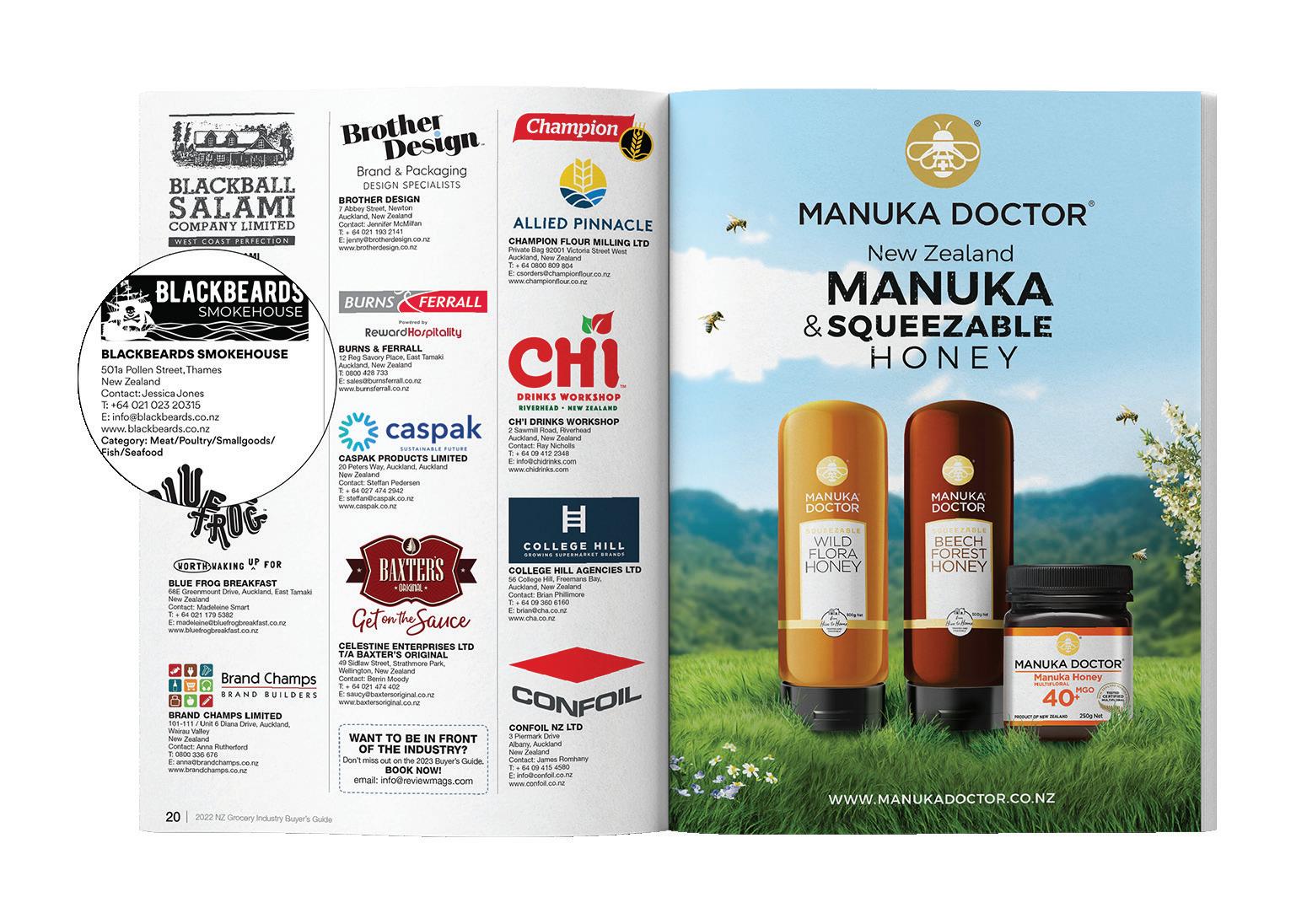
November 2022 I 17 2023 buyer's guide 2023 buyer's guide BOOK YOUR SPOT NOW! BOOK YOUR SPOT NOW! email sales@reviewmags.com
As Seen at Go Green
Go Green is New Zealand’s largest green living and sustainable lifestyle show. The expo features a selection of diverse brands and companies that favour the environment and healthy living.
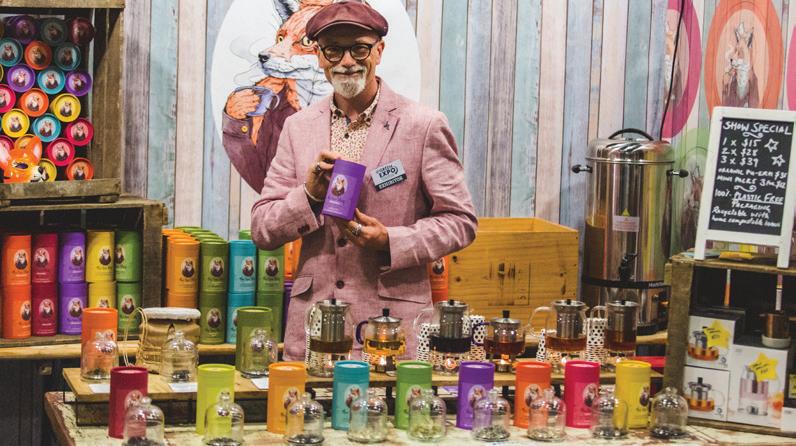
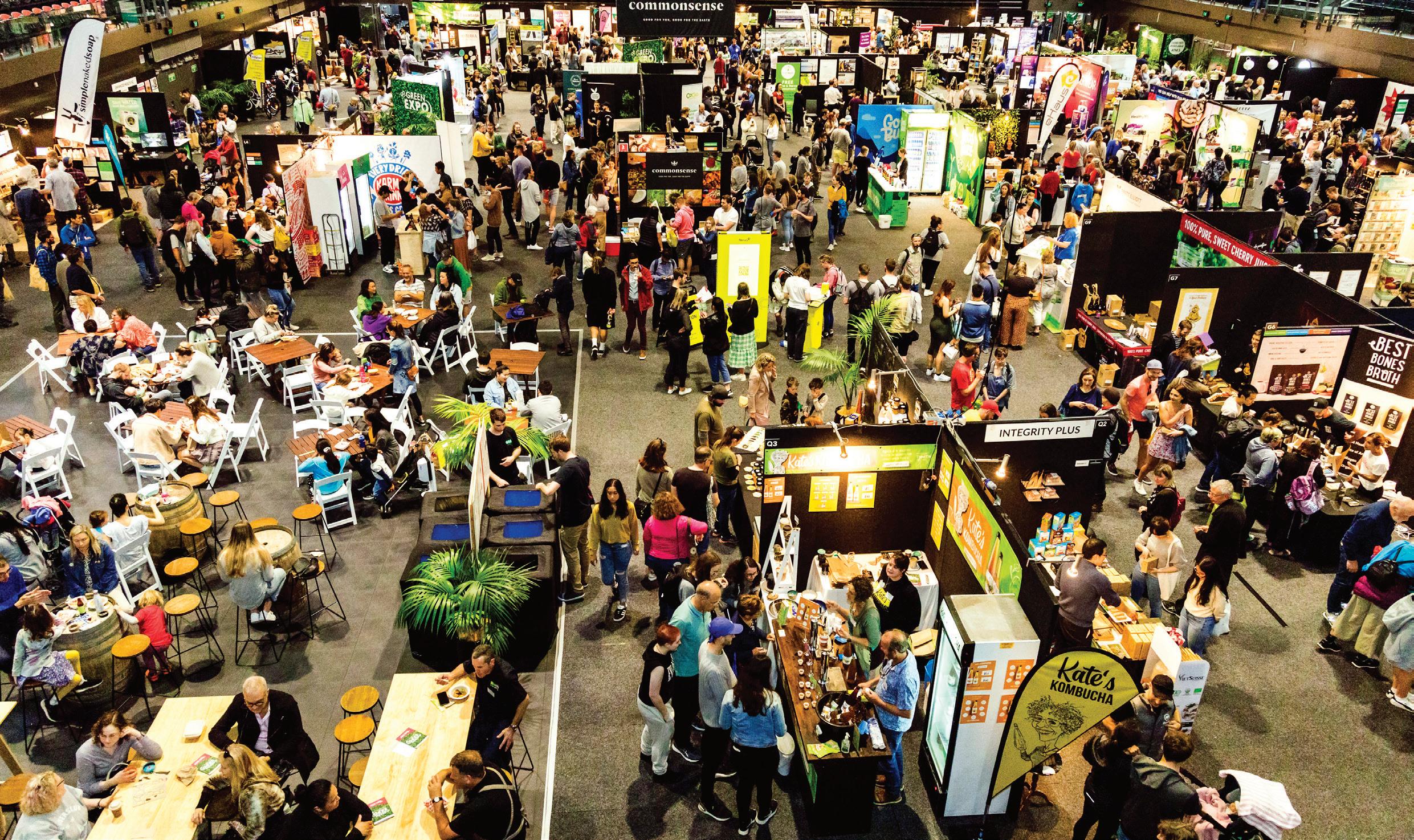
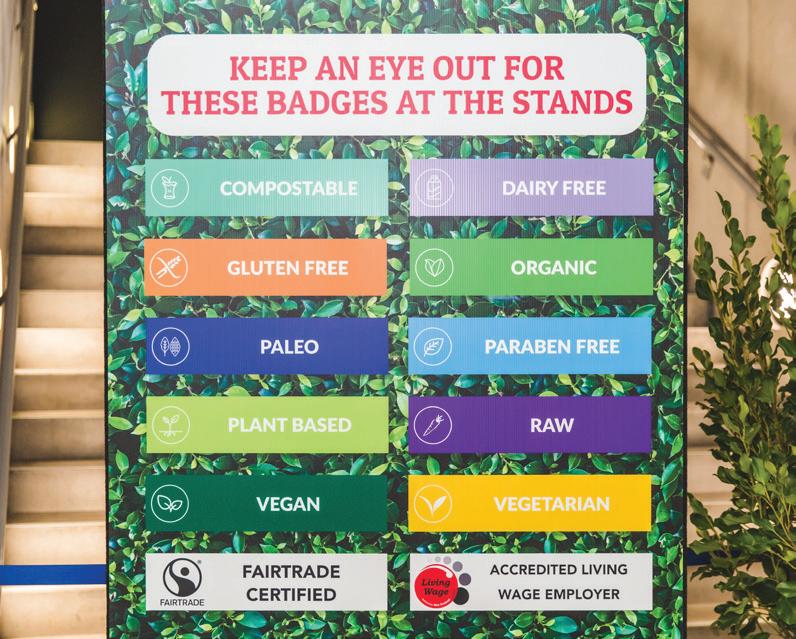
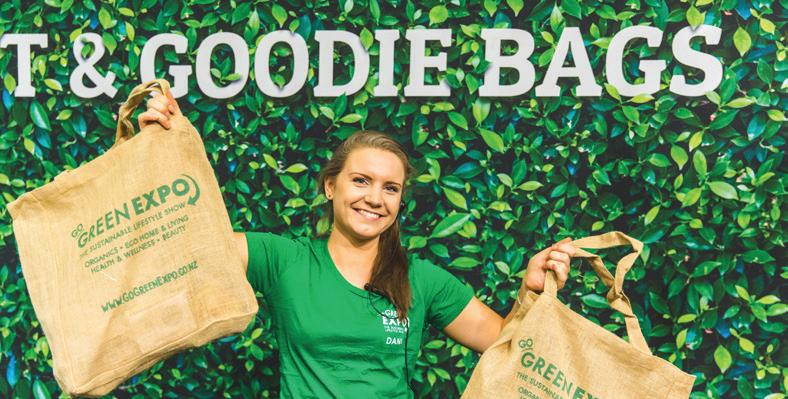
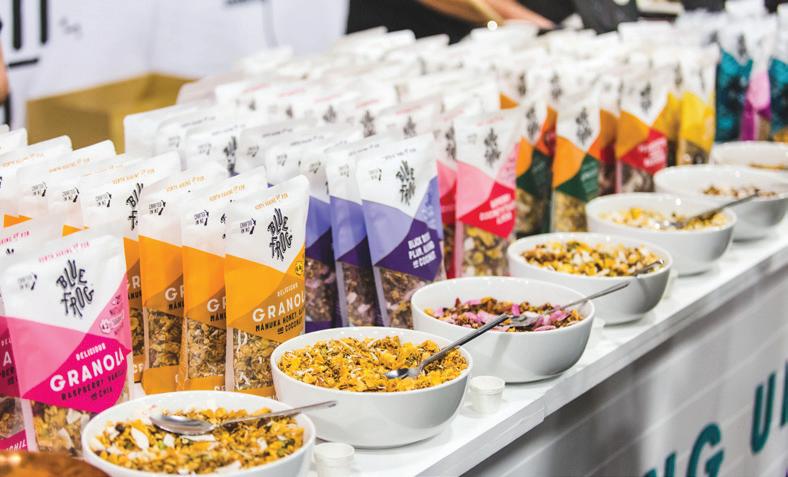

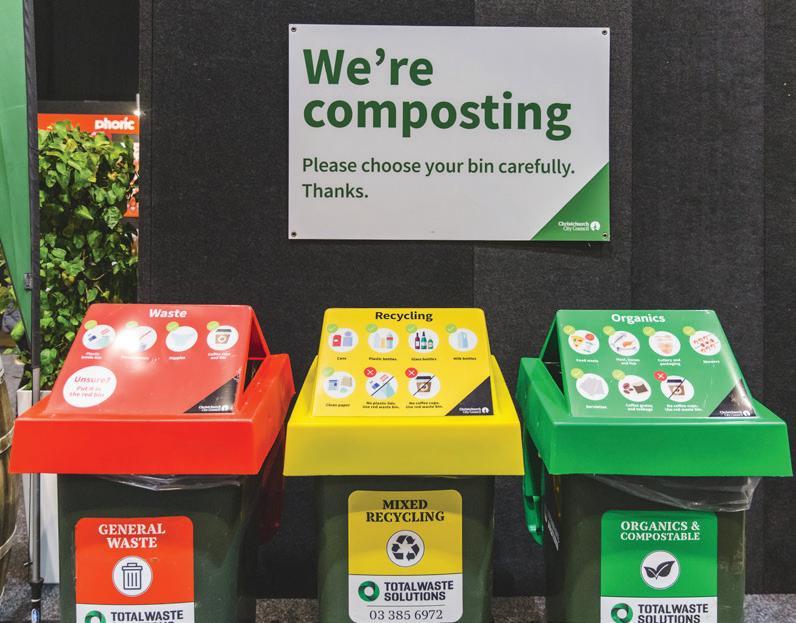
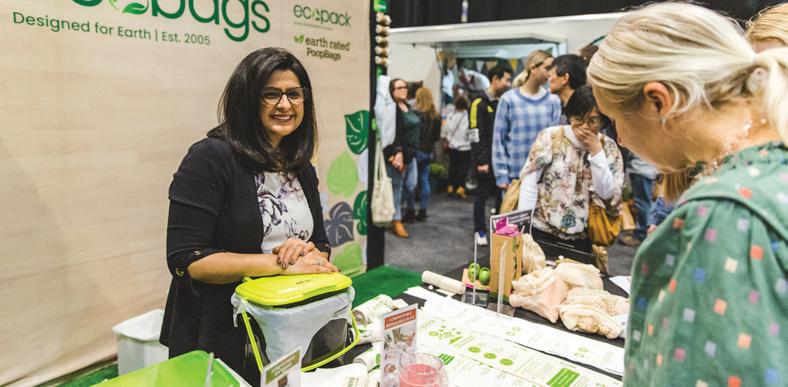
With a number of dates across the country in 2022 and 2023, companies and brands look to transform customers’ way of life. Categories include Food and beverage, beauty and personal care, household products, eco home and building, home and lifestyle and health and wellness.
“Go Green Expos continue to get better every year, with strong, effective advertising and marketing ensuring the right crowds attend, and all exhibitors have a good experience,” said Julena from Hunter Gatherer.
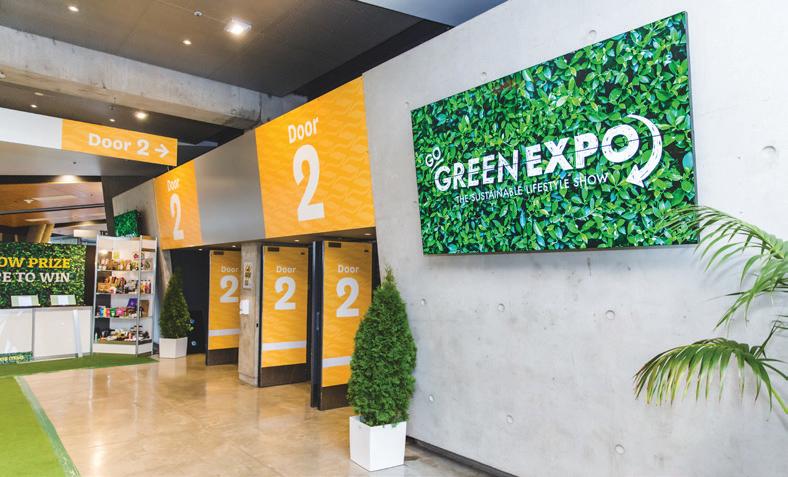
The Expo expects between 7,000 and 11,000 visitors depending on the location and offers goodie bags, professional speakers and influencers, free yoga classes, live seminars and demos, a show prize and a networking event for exhibitors.
2022 & 2023 EXPOS:
• Auckland, November 12 & 13, 2022
• Tauranga, November 19 & 20, 2022
• Christchurch, August 5 & 6, 2023
• Hawke’s Bay, October 14 & 15, 2023
• Wellington, November 4 & 5, 2023
18 I supermarketnews.co.nz go green
Better Better Noodles …




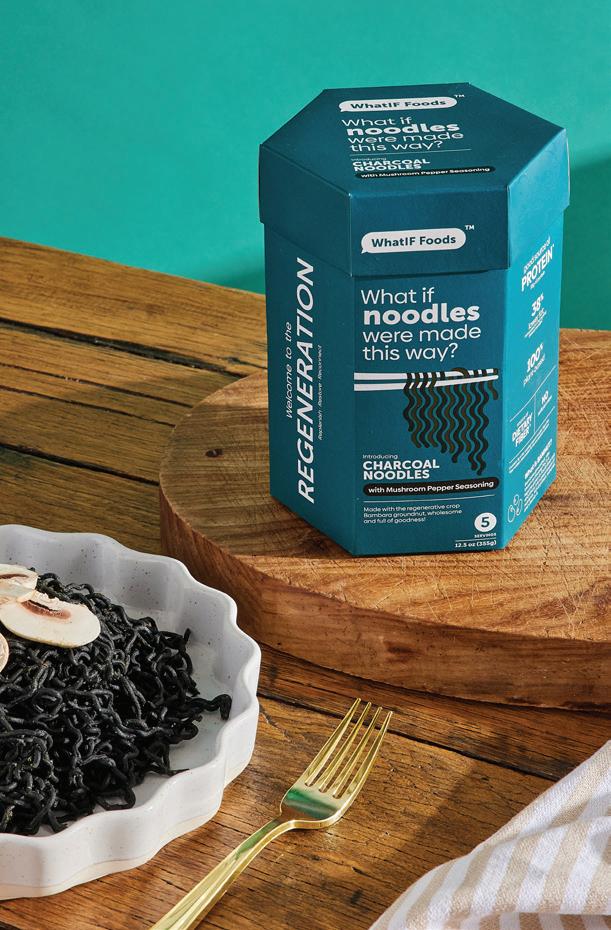
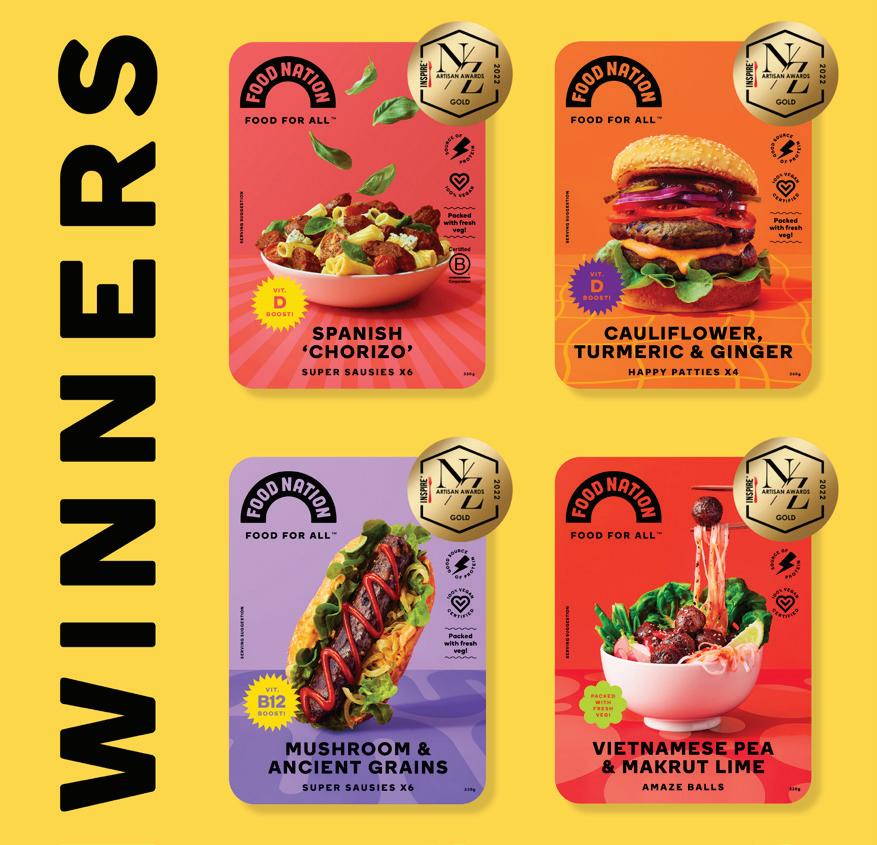

“We had an amazing response (at the expo) as people really appreciate having a Healthy Noodle Option available. A meal, not a snack. Probably the busiest stand, we sold about 800 boxes and could hardly keep up,” said WhatIF. The noodles have vibrant colours and awesome flavours to brighten up any meal. But that’s not all! 17g of protein per bowl, making up to 25 percent of the daily requirement of protein (equivalent to two eggs). Three times more dietary fibre than conventional ramen - great for a healthy gut and keeping you fuller and satisfied for longer. With the in-house patented air-frying technology, the fat content is reduced by 60 percent versus a typical deep-fried instant ramen. And no Palm oil ever.
To order contact 09 820 7800
Angel Food
“Go Green Wellington was a success for us, reconnecting with lots of existing customers and meeting lots of potential new customers who had seen our products instore but been hesitant to purchase an unfamiliar product. Feedback on the products was very positive - especially the two recipes we showcased using our plant-based cream cheese - a rich dark chocolate cheesecake and marinated cream cheese cubes. The top products were our cream cheese and the grated. People love the convenience,” said Alice Shopland, Founder and Managing Director.
To order contact 09 3764623
L'Authentique


The Go Green expos were a solid opportunity for L’Authentique to showcase their products, reconnect with existing customers and have new conversations with customers looking for keto, dairy-free and all-natural meals or the entertaining solutions range. As well as their popular favourites; the sausages, parfaits and go-to terrines, they also highlighted the new range of cured, slow-aged meat. Cured without nitrate or chemicals, using traditional Mediterranean preservation methods, the ingredients list for L’Authentique range is wonderfully short and local, and the price point is reasonable: something the Go Green attendees loved. With summer entertaining around the corner, this long-life local range is perfect in the deli. Contact Wade on 021 613939 to order.
From One (Taste) Bud to Another
Face to face with the people who are their biggest critics and biggest advocates - that is the joy of the Go Green shows, and nothing beats it. “This year, we found lots more people know and love the Food Nation brand. The understanding of the environmental and health benefits has grown enormously and was clearly on people’s minds, and we got huge kudos for the added vitamin B12 and D. Possibly most exciting was the response to our new Spanish Chorizo Super Sausie. It’s only our second sausage in the range and has taken us two years to get one we really thought was a winner on taste and texture. The crew at Go Green pretty much told us it was a slam dunk winner on both fronts. Both the saussies in the range flew off the shelves this time round. We’re coming into summer and sausie season so looking forward to feeding the nation,” said Food Nation.
To order contact 027 474 1019
November 2022 I 19
Fighting Modern Slavery
27seconds, the North Canterbury wine label that donates 100 percent of its profits to helping end modern-day slavery, is preparing its big donation goal for the next holiday season.

Last year, the company sold 15,000 bottles over the Christmas period, which allowed their donations to total $147,000. This year it hopes to sell 17,000 bottles.
“People often think it’s a crazy concept to give away the profits. We’re like any business and have costs to cover, though some folks in our supply chain are amazing and give us a discount/donate to contribute to the cause,” said Alanna Chapman, Co-founder.
On Christmas eve in Kolkata, India, in 2012, Alanna and Pete Chapman were visiting friends who run Freeset, a business that offers alternative employment to women in prostitution. When visiting one of the women they had met, an alleyway shortcut had the pair encounter a group of teenage girls that looked distinctly different. They were then told the young girls had been trafficked from Nepal and sold into prostitution.
The injustice of modern-day slavery hit the couple hard. More people are in slavery today than ever before, it is estimated the figure currently sits between 21 and 40.3 million people.
Pete is the manager for his family vineyard, Terrace Edge, and in 2017, that is where the idea originates: a wine label that donates 100 percent of its profits to charity, or more specifically, to help end slavery. The first year saw 9000 bottles produced, with the Rose and Savignon selling within four months.
The name 27seconds comes from the Unicef statistic that estimates one child every 27 seconds is sold into slavery, or 1.2
million children every year. The brand’s range includes a Riesling, Sav Blanc, Pinot Gris, Rose and Pinot Noir. It also offers wine-tasting party boxes.

All profits from the wine go to charity partner Hagar, which provides recovery care for survivors of slavery, trafficking and severe abuse in Cambodia, Vietnam and Afghanistan. This includes trauma and recovery care, access to education, economic empowerment and systemic change. Hagar recently named 27seconds as one of its two ‘mega donors.’
“We really feel that the name ‘mega donor’ belongs to the collective community of people who choose to buy 27seconds. Yes, we make the wine, but without people purchasing it, there would be no donation to give. So it’s our consumers who are the true heroes.” n

20 I supermarketnews.co.nz go green
THE DESIGN AGENCY



WHERE ‘WORK THAT WORKS’ IS ALWAYS ON THE MENU
Specialising in packaged-goods design and strategy, Brother Design has shaped many of New Zealand’s best-loved brands. This is how they do it.
When Brother Design set up shop fifteen years ago, its purpose was clear: to raise the bar in design for the whole FMCG sector. A look around New Zealand’s retail stores would seem to prove that mission was accomplished. From private labels to brand leaders and new entrants, high standards prevail. But the Auckland-based agency isn’t sitting on its laurels.
“Succeeding in the packaged goods sector is harder than ever,” said Brother’s Business Development Director, Jennifer McMillan. “In a way, we’ve made our own job more difficult because we effectively pioneered a new standard in retail packaging design. We’ve just become better at it over time, as bottom-line results for our clients show.”


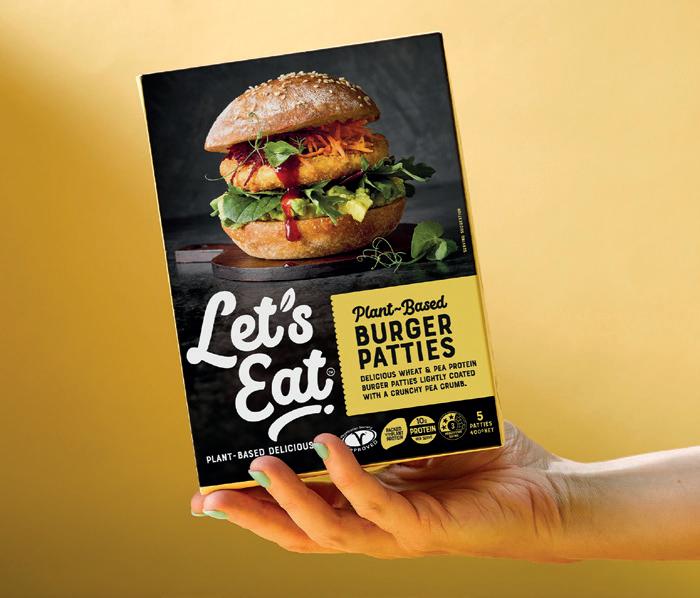
Typically, McMillan chooses returns as a measure of success, even though Brother has been showered with New Zealand and international design awards over the years. “It’s great to impress your peers. But at Brother, the reason clients seek us out and stay with us so long is our commitment to work that works–on shelf, in the market, where it matters,” she said.
THE SECRET SAUCE
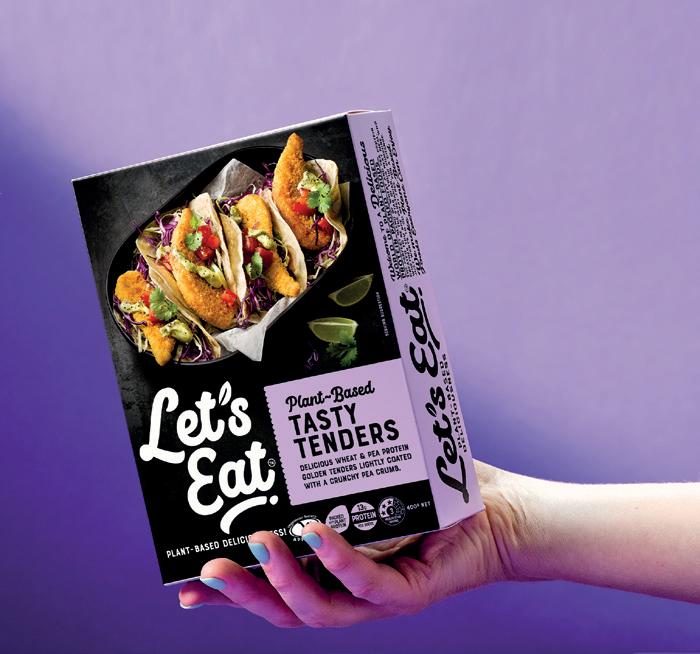

With a client list that comprises many of New Zealand’s best-known grocery brands, clearly, a lot of companies like what Brother Design has to offer. But what is that, exactly? Why would it be better than another design solution? “It’s two things,” said McMillan. “Talent and methodology. And one without the other just won’t achieve the same results.” McMillan contends that subjectivity has led some potentially-successful FMCG brands to underperform. “At Brother, we have a seriously talented and experienced team. But it’s our proprietary design approach that ensures such potential delivers real success.”

It’s an approach that puts context at the heart of everything, from initial review through to testing and refining the final designs. And it has quite the track record.
“Countless times we’ve produced design that–without anything else in the marketing mix changing–increases sales, trial, market share, category growth, you name it, literally overnight.”
Visit brotherdesign.co.nz or email jenny@brotherdesign.co.nz or call 021 1932141 to find out more. n
Brother_Supermarket News_HalfPage_210x150mm_October v1.indd 1 19/10/22 3:33 PM November 2022 I 21
IT’S GETTING HOT IN HERE. MORE ACTION; LESS TALK

Sustainability - We’ve all heard the harrowing statistics, we know it’s an important consumer hot button, and we don’t want to continue to contribute to the problem. So why are businesses so slow to get on board with tackling sustainability? Why is something so important to long term brand relevance and business success so difficult to get off the ground and implement?
of those surveyed reported a willingness to take a pay cut to gain employment at these organizations.
Supermarket News Buyer's Guide 2023
So why is implementing this very necessary shift so difficult for businesses?
sustainability goals. Executives that view sustainability as an opportunity and incorporate these goals into border strategic objectives will be sure to see the returned business value.
2. Harness the power of technology: Digital technology can give leaders a foot up in their quest for sustainability. Technologies such as the cloud, AI and blockchain can provide usable data and insights that would help businesses set, track and manage improved, sustainable operations.
3. Set measurable (and achievable) targets: Sustainable targets should be embedded into the business strategy and understood by stakeholders. If the leaders of a business don’t know their targets or they’ve created targets that aren’t achievable, they may struggle to make changes that inspire others and move the needle.
FIONA KERR Head of Brand and Customer Experience, VAPO

The case for companies championing sustainability is strong! And the numbers stack up. Let’s look at some data from the IBM Institute for Business Value (IBV) who undertake a number of research projects across consumers, CEO’s and employees each year.
IBV Consumer research conducted in 2022 revealed that consumers are changing their habits to reduce their environmental impact. Almost 2 in 3 (64 percent) say products branded as environmentally sustainable or socially responsible made up at least half of their last purchase. And roughly half (49 percent) of consumers say they paid an average premium of 59 percent for products branded as sustainable or socially responsible vs 12 months ago.
Business leaders are also under pressure, IBV’s 2022 CEO study revealed that almost four in ten (39 percent) executives said that environmental sustainability is a top priority for them today, and more than half (53 percent) said it would be a top priority in three years.
• Fear of greenwashing: Businesses may be fearful of criticism or backlash if they don’t get sustainability and the reporting perfect or if they perhaps fail to deliver on a specific goal.






Be Featured in this Vital Industr y Resource
• Fundamental change requires collective action: Sustainability does not fit neatly into the modern business model because it requires multiple departments, multiple inputs and multiple levels. Therefore, it is often difficult to drive sustained engagement and action.
4. Share the load: Sustainability needs to be embraced and activated across the whole business. No one department or individual can make the significant changes required. It starts at the top and should form part of every level of the business. Incentivising this change in behaviour may help employees adopt ‘green habits’ faster.
Listings Closing Soon! CLICK HERE
5. All in this together: No single organization can curb climate change on its own. We need to work together with our partners and suppliers to create meaningful and sustainable change. Transparency and collaboration is key. Organizations should work together with other businesses to achieve set targets, reduce risk and boost efficiencies.
An IBV Employee satisfaction study found that over 70 percent of surveyed employees and job seekers believe “environmentally sustainable companies are more attractive employers.” And almost half


• Profits (generally) rewarded over business change: Traditionally, the C-suite hasn’t been tasked with delivering sustainability as a measure of success. Bonus structures and rewards systems are usually linked to commercial achievements and profit, possibly with some softer people metrics such as engagement scores built-in for ‘balance’.
• What should be measured, by when and by whom: Things that affect people and society at a macro level may be more difficult to gain clear-cut data, and their impacts are not always immediately obvious. Sometimes the plethora of choice creates inaction and confusion. Not to mention who should be measuring and juggling the required multiple data sources.
The sobering reality is that we won’t solve this issue in my lifetime, but if we continue to do nothing, there won’t be much of a planet left. A report by The World Bank estimates that by 2050 the world will generate 3.4 billion tonnes of waste annually, and unchecked CO2 emissions will contribute to a temperature increase of two degrees Celsius - making life on this planet almost intolerable.
OPENING SOON YOU ARE INVITED!
Now is the time for businesses to step up and become part of the solution, cut down on emissions and waste, invest in their people as finite resources, change behaviours and contribute to stopping the damage (as much as we can). n
Here
are five ways to accelerate sustainable adoption within your business:
1. Start seeing sustainability as an opportunity: It’s a myth that businesses have to sacrifice results to reach their
22 I supermarketnews.co.nz
column











































































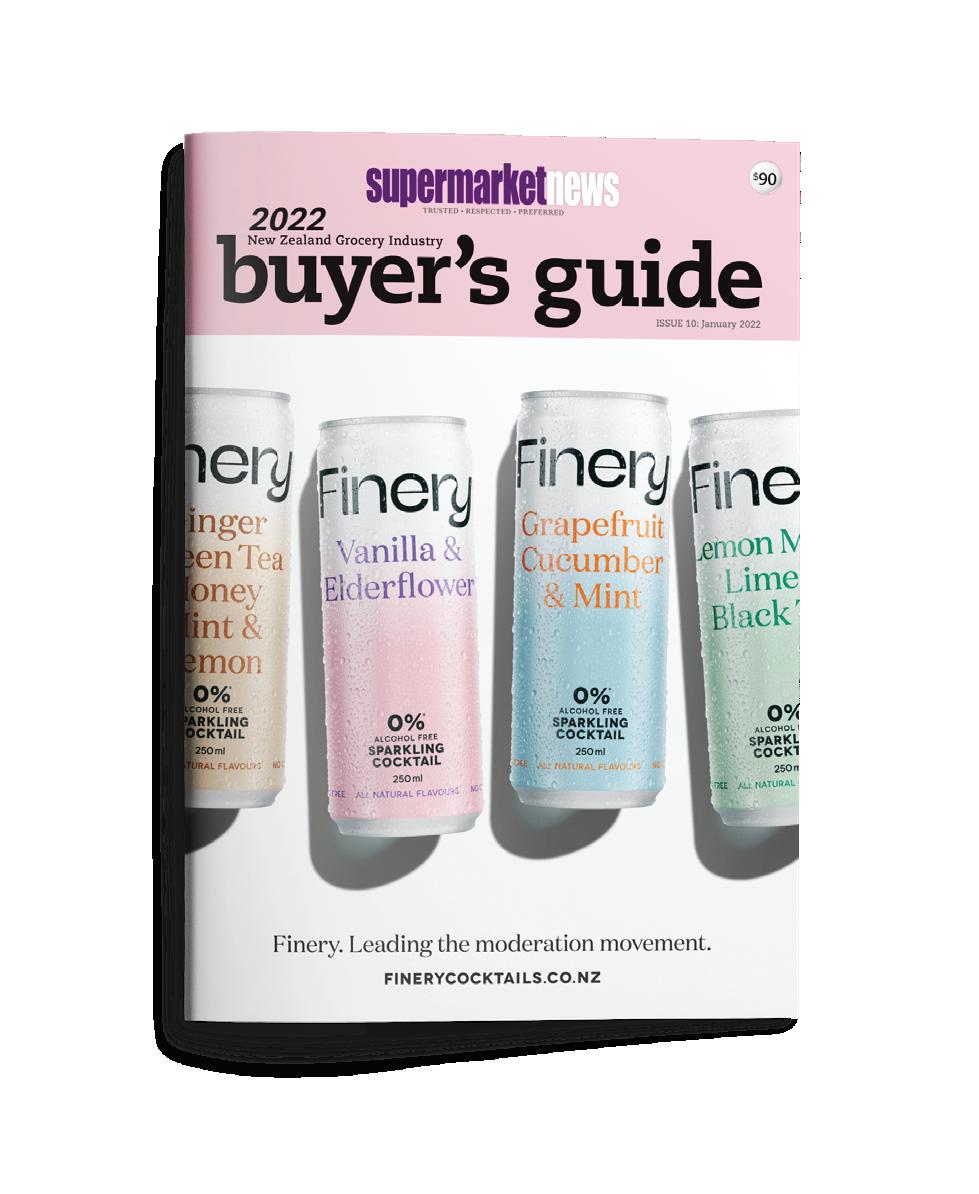
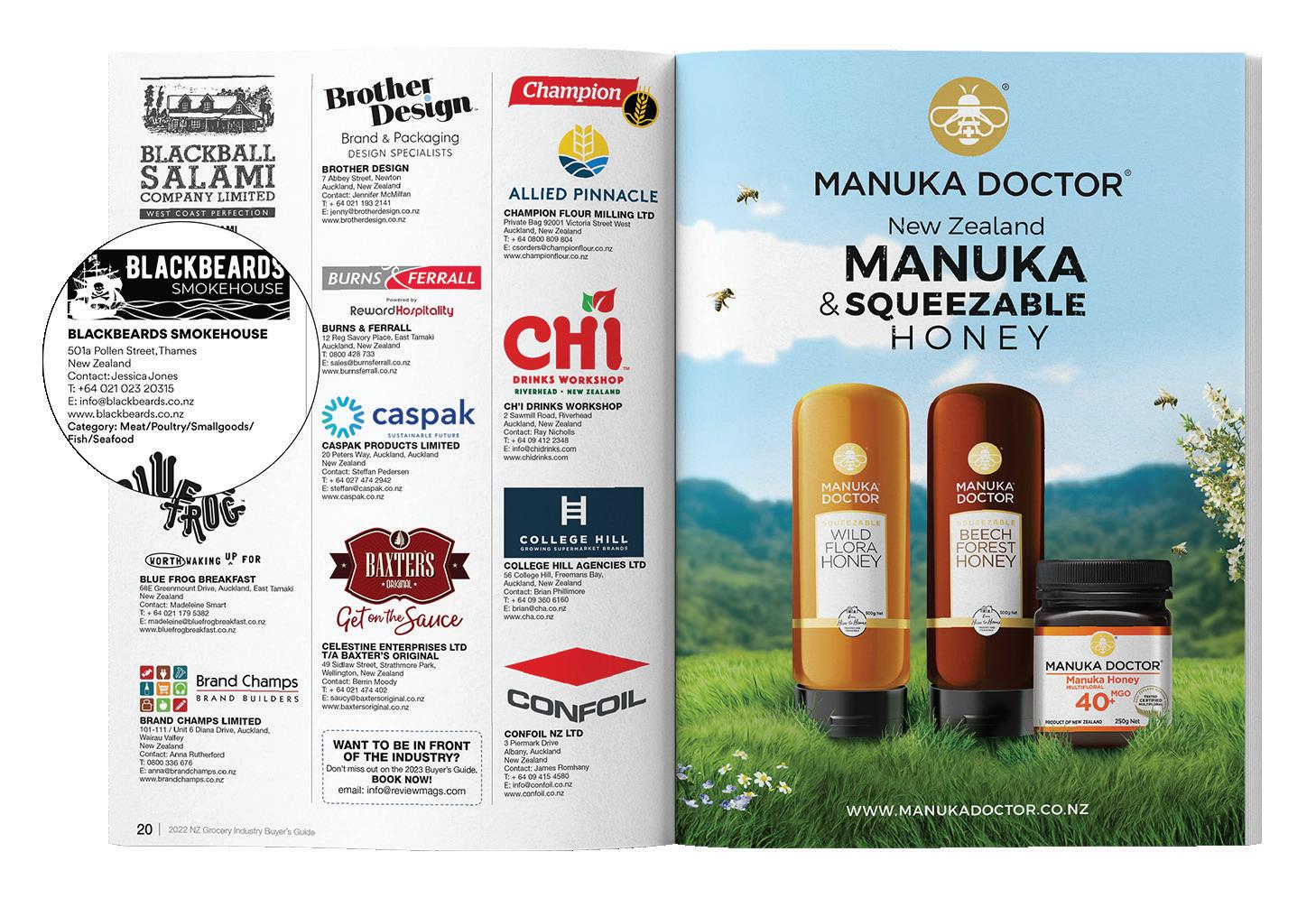
BE FEATURED IN THIS SOON! VITAL INDUSTRY RESOURCE LISTINGS CLOSING
RAW KANUKA HONEY 500G
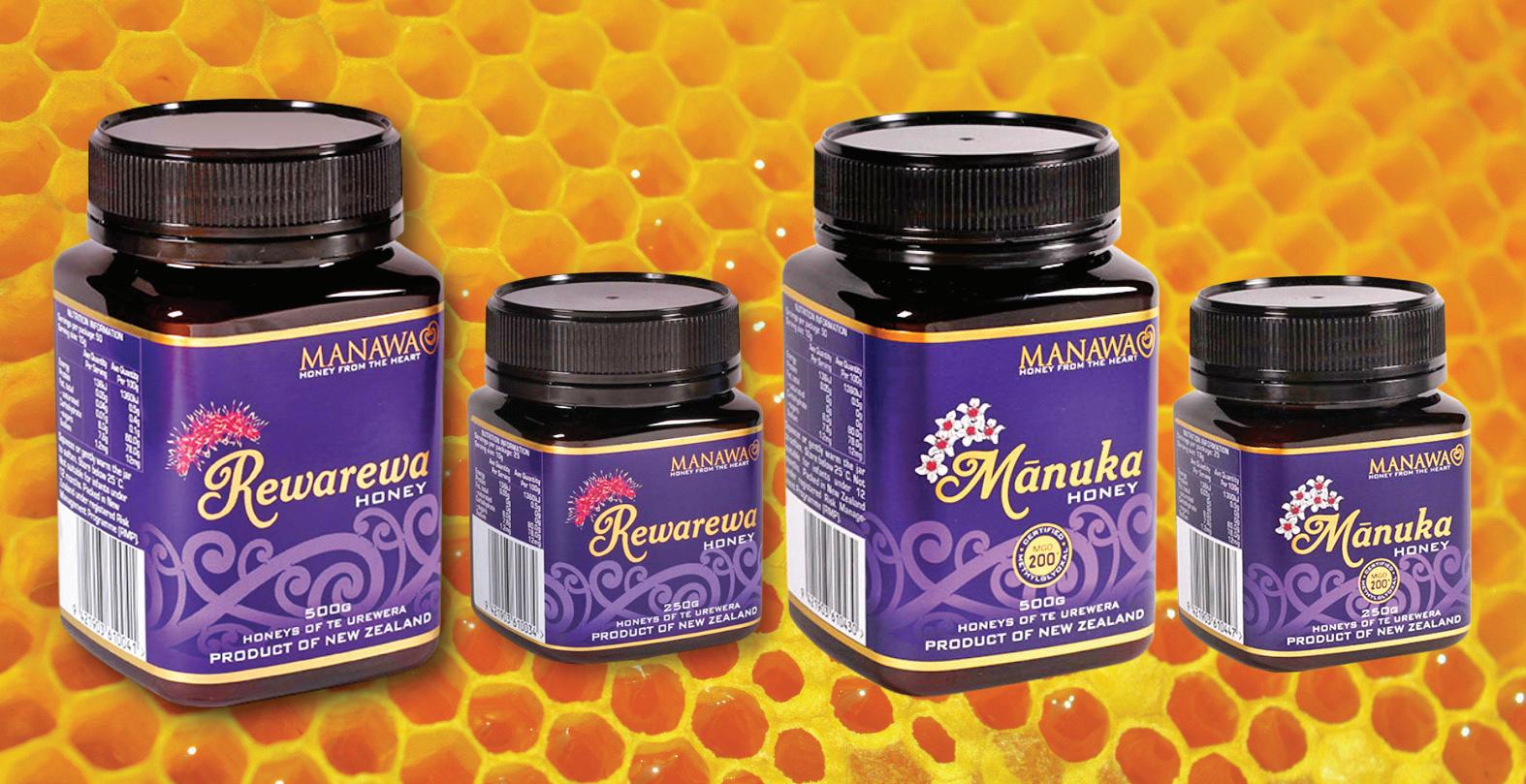
Manawa’s Raw Kānuka Honey, with its delightful, the natural creamed texture is an international award winner, and its also got health-giving properties that hark back to its cousin Mānuka. Raw means not filtered, not heat-treated and not pasteurised. In sum, this is an extraordinary honey from the rhythms of the ancient forest, Te Urewera. Launch Special Price will expire in two weeks, so don’t hesitate to get one now. Learn more at www.manawahoney.co.nz/productpage/raw-kanuka-honey-500g/
TASTE NATURE’S BEST, MADE EVEN BETTER

They’ve taken the delicious Westgold butter and infused it with favourite herbs and spices – which means less time chopping and mixing and more time spreading and eating! The Garlic & Parsley Infused Butter will rival the juiciest of jus, while the Chilli & Garlic Butter will see your sweet chilli sauce banished to the back of the pantry. Check out www.westgold.com/nz/recipes/ category/infused-butter for inspiration and fresh ideas on how to use Westgold Infused Butter. 100g butter sticks are available now in Countdown nationwide and New World in the North Island.
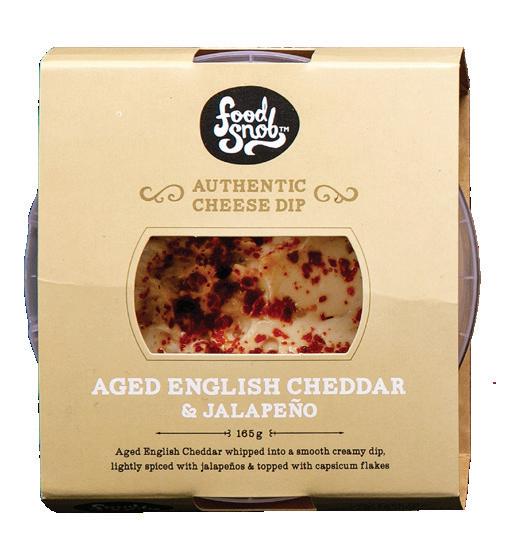
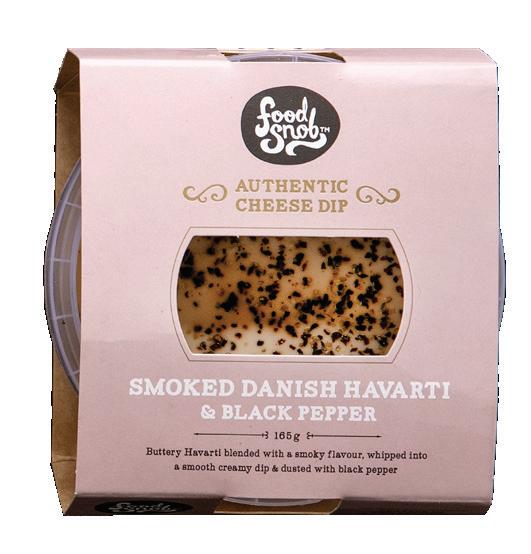
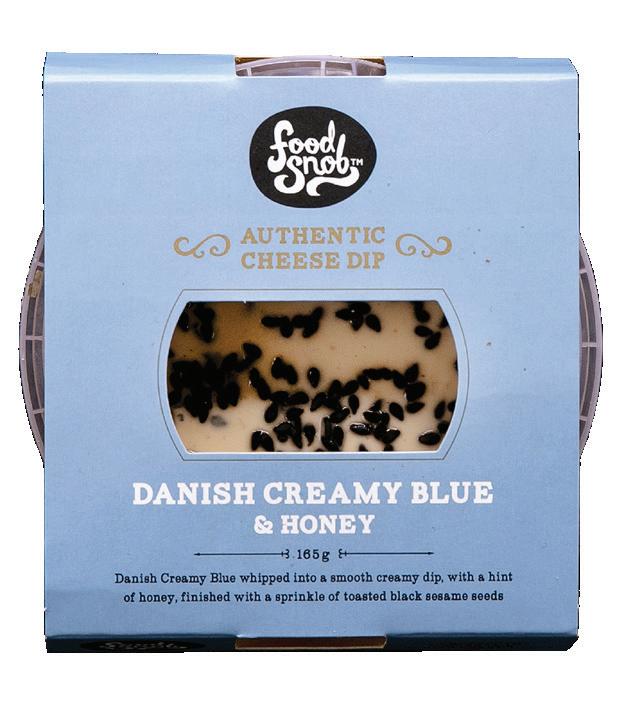
CHEESY DIPS
Introducing Food Snob’s new Authentic Cheese Dip Range. Crafted in New Zealand using Food Snob’s favourite cheeses, whipped into a smooth, creamy dip. Three flavours to try: Smoked Danish Havarti & Black Pepper, Aged English Cheddar & Jalapeno and Danish Creamy Blue & Honey. Perfect for sharing on platters or pairing with favourite chips. Available in most Countdown, New World & PAK’nSAVE stores in the Dip’s Chiller.
TAMCO CONDIMENTS
The tangy taste of tamarillo complements a variety of foods, and its versatility to blend with other foods appeals to customers who want to boost the taste experience. The unique gourmet products use a specific variety of tamarillo grown by the NZ Tamarillo Cooperative, a small group of specialist Northland orchardists and marketed under the brand For the love of Tams. All products are gluten and dairy free. No added preservatives or colour.
TAMARILLO RELISH

The Tamarillo Relish has a rich, tangy, genuine taste of tamarillo. Because of its versatility, it’s delicious on cheese and crackers, hot scones or as a compliment to chicken, fish, vegetarian dishes, pies, etc. Delicious with sour cream as a delicious dip with corn chips and tacos, superb served with meats, salads and cold cuts, spread on pizza base as a sauce, or added to meatloaf mixes or casseroles.
TAMARILLO VINAIGERETTE
The Tamarillo Vinaigerette has the wow factor with a unique sweet, tangy taste – superb drizzled over salads, meats, seafood or sprinkled on vegetables, blended into marinades and dressings, whisked with olive oil and served as a dip with crusty bread or even sprinkled over strawberries and served with whipped cream. Whisk with olive oil and serve as a dip with crusty bread, sprinkle over strawberries and serve with whipped cream, steep with beetroot, cucumber or tomatoes.
24 I supermarketnews.co.nz
LOS BROS
Lo Bros proudly present Not Soda, well, not soda like you know it. Lo Bros are on a mission to free the oceans of plastic bottles and hydrate soda lovers with damn tasty, better-for-us drinks that will leave taste buds tingling for more. For every can sold, Lo Bros Not Soda along with their partners, Seven Clean Seas, clean-up two plastic bottles from oceans and waterways (the equivalent weight of two plastic bottles to be exact). Are they excited to be doin’ good within the soda industry? Fizz yeah! Available in four hit flavours Raspberry, Orange, Pink Grapefruit and Lemon. Learn more about this sea-sational movement at lobros.co
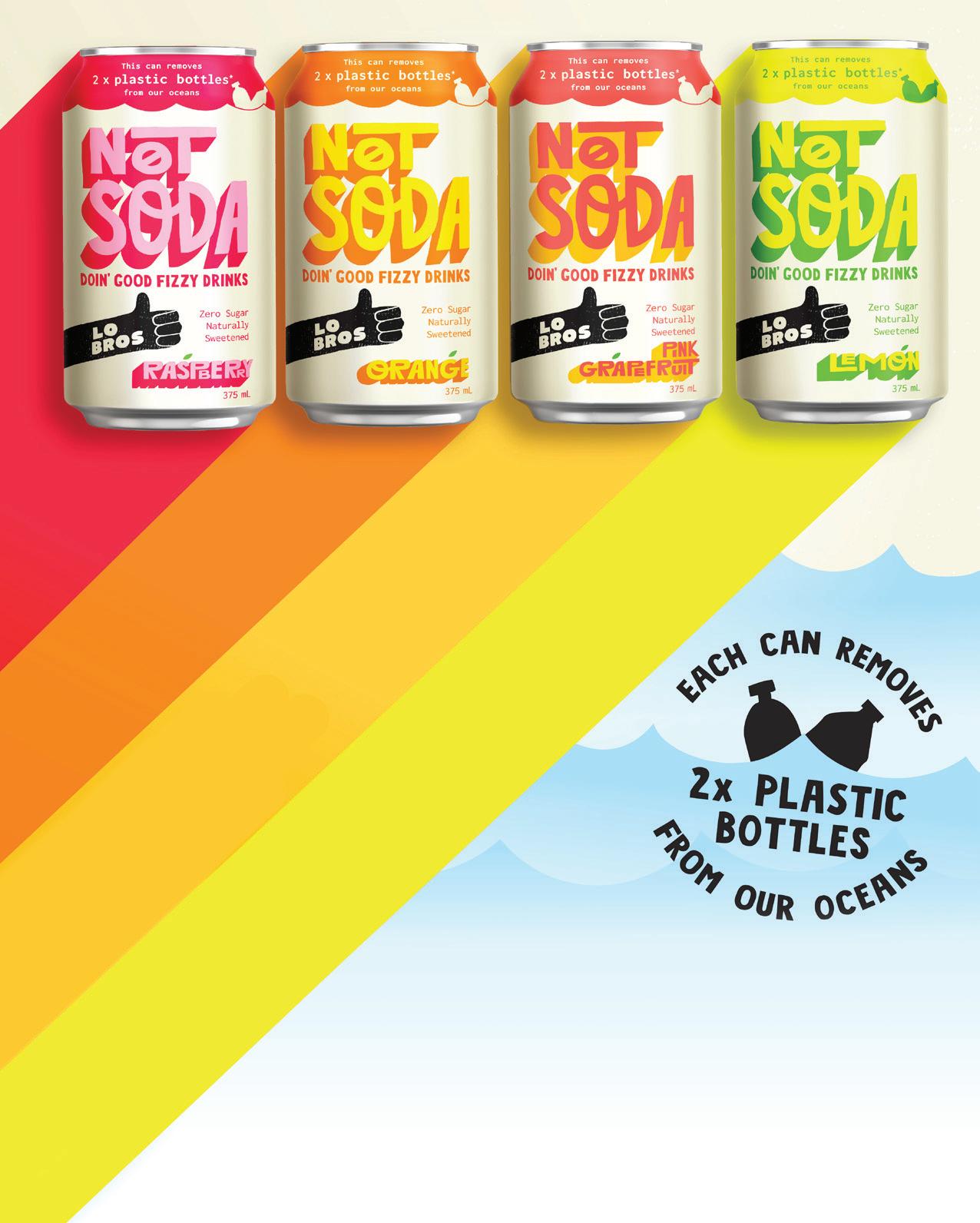
FORTUNE FLAVOURS THE BOLD: NEW
HI-CHEW MIX BAGS
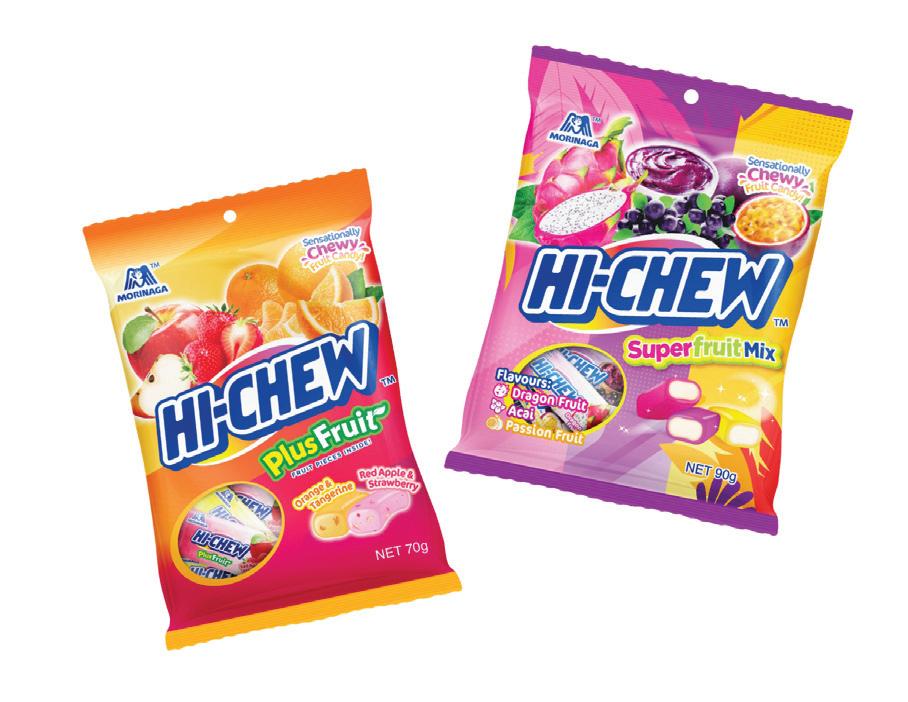

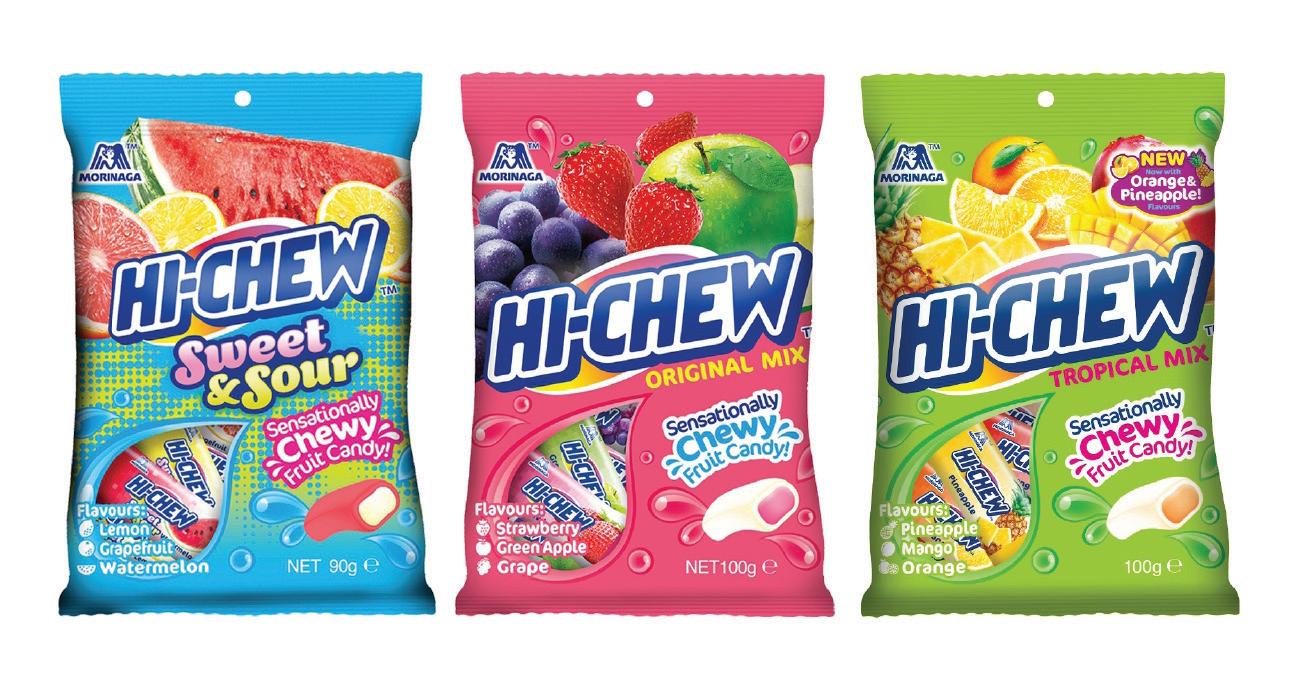
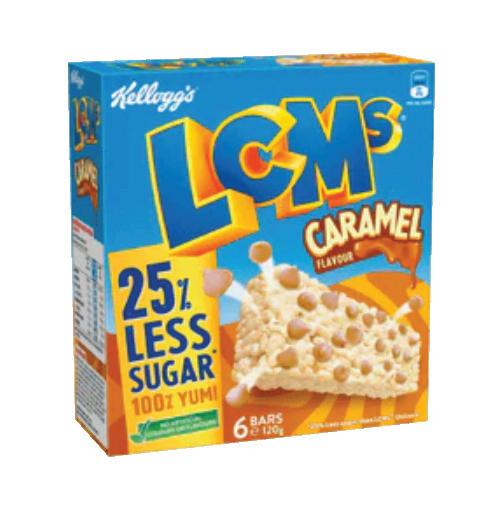




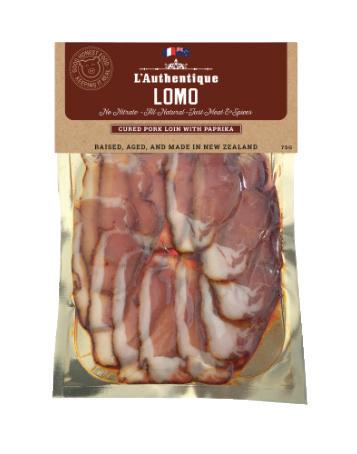
Hi-Chew is well-known as sensationally chewy candy bursting with flavour, and Kiwi consumers can look forward to trying out the two latest additions to the extensive range this spring. Superfruit Mix features a delicious range of tangy, tropical flavours: Dragon Fruit, Acai and Passionfruit. Made up of two distinctive layers, each sweet treat packs a punch of real fruit flavour with every bite. PlusFruit Mix features a seamless pairing of delicious flavours: Orange & Tangerine and Red Apple & Strawberry, treating fans with the added fun of REAL fruit pieces inside for an extra chewy experience - a first in HiChew’s innovative candy-making history. Rolling out now to leading supermarkets and retailers nationwide. For more information or to become a stockist, contact Tokyo Food Retail Manager - Mark Whiteman, info@tokyofood.co.nz
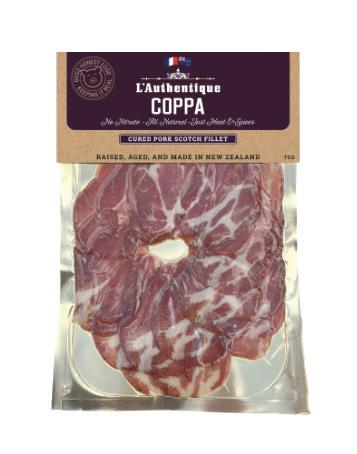

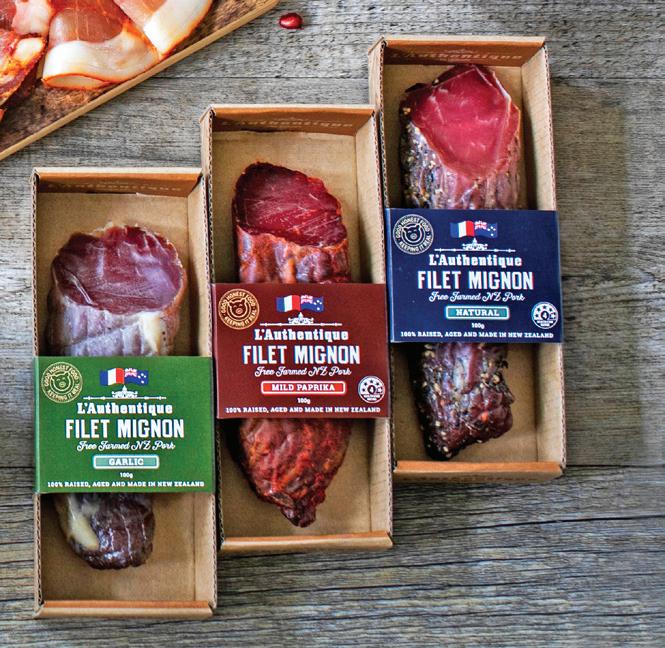
KELLOGG’S AUSTRALIA LAUNCHES A NEW REDUCED SUGAR LCMS RANGE
Kellogg’s Australia has rolled out a new range of its iconic lunch box brand, LCMs – the snack bar kids love. The new range contains 25 percent less sugar than comparable LCM bars and are available in two new delicious flavours. Choc Strawberry combines the sweet taste of chocolate with a burst of strawberry flavour. The Caramel variant compliments the crispy marshmallow base with delicious caramel toppers. Made from the same puffed rice used in Kellogg’s Rice Bubbles the range is also free from artificial colours and flavours. The new LCMs bars are now available in PAK’nSAVE and New World stores in North Island.
L’AUTHENTIQUE
Kiwis will be rustling up platters as summer entertaining gets underway. L’Authentique, the award-winning New Zealand sausage maker, has launched a range of cured, slow-aged meat using traditional Mediterranean preservation methods. Cured without nitrate or chemicals, the ingredients list is wonderfully short. Air-dried and sliced delicately paper thin, the Lonza, Lomo and Coppa can be served on or beside a baguette lathered with butter which will cut through the textural profile of the dry-cured meat. A Filet Mignon - French for cute fillet - is aged and cured eye fillet sold in unsliced 100g lengths and comes in three spice variations: Natural, Garlic and Mild Paprika. L’Authentique cured meat is available now in addition to the deli range, contact Wade Lewis 021 613939.
November 2022 I 25
KAI COMMITMENT LAUNCH
On November 2nd, New Zealand’s largest food businesses joined the Kai Commitment - a voluntary initiative to reduce food waste and emissions. The Kai Commitment is led by the New Zealand Food Waste Champions, a charitable organisation established to progress UN Sustainable Development Goal 12.3, reducing food waste by 50 percent by 2030. Fonterra,
Countdown, Goodman Fielder, Silver Fern Farms, Foodstuffs and Nestle are the first organisations to join the commitment.
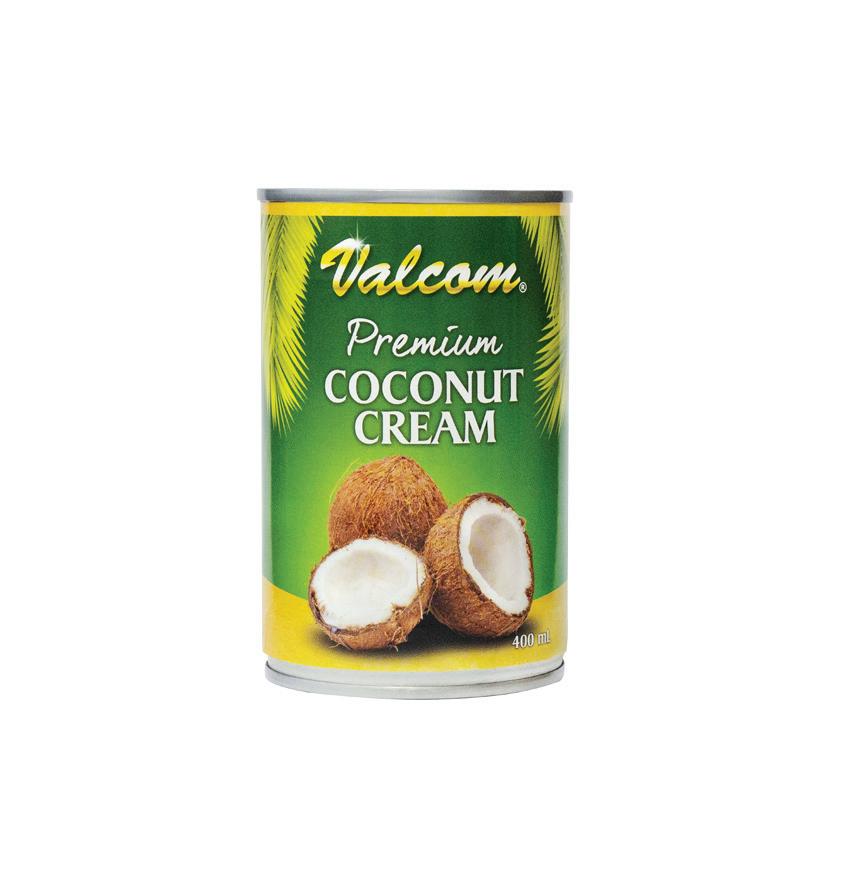
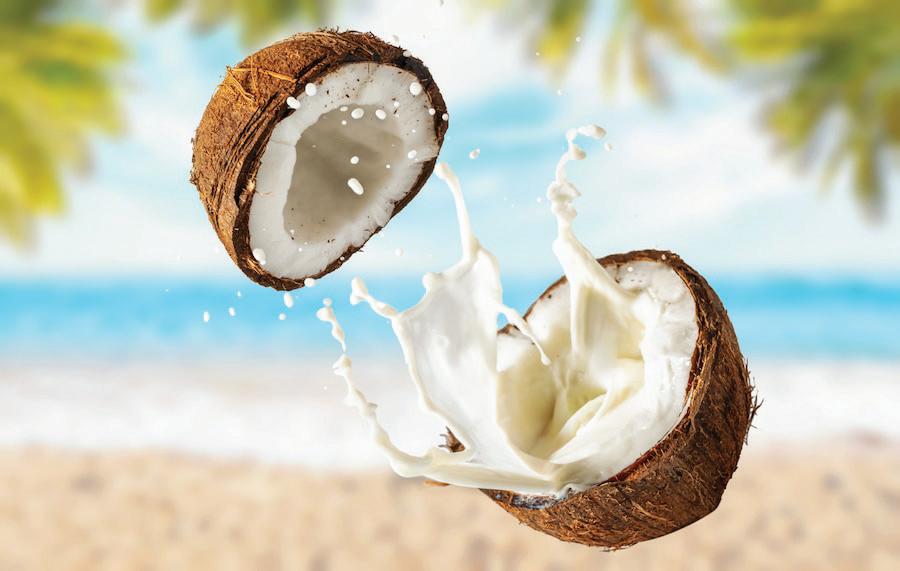
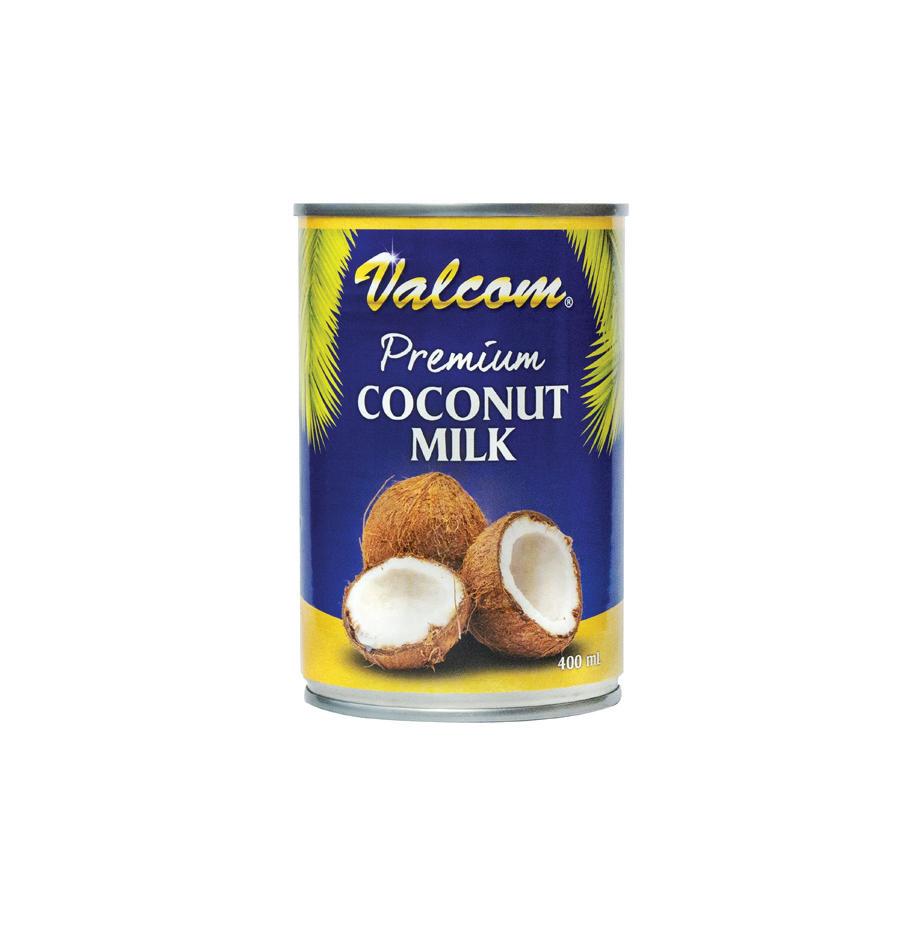
“In New Zealand, landfilled food waste contributes four percent of our total emissions and represents a lost economic opportunity of up to $2 billion per year. What’s more tragic than the numbers is that one in five Kiwi kids live in constant hunger. Through the Kai Commitment, we hope to

collectively work on developing a food system in Aotearoa New Zealand, that values every piece of food we produce,” said Kaitlin Dawson, Executive Director of New Zealand Food Waste Champions.
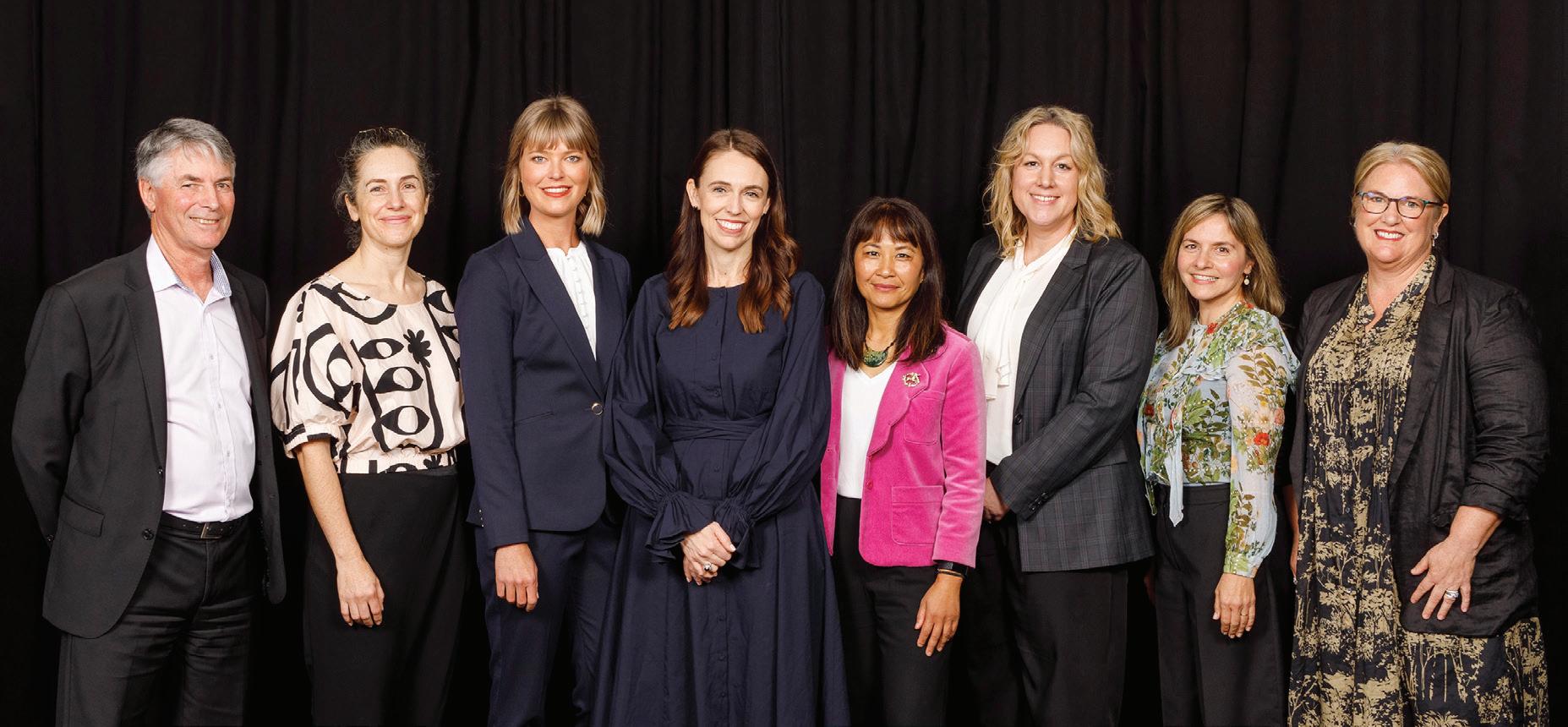
“We’ve seen globally that voluntary agreements make a meaningful impact on reducing food waste. The UK’s equivalent agreement, the Courtauld Commitment, contributed to the UK reducing food waste by

28 percent nationally in the last decade and being on track to meet the UNSDG12.3 goal.

“Reducing food waste also makes good business sense. Global studies show that for every $1 investment in reducing food waste, there can be a return of $14.”
“I’d like to thank our first four signatories, the founding signatories, Countdown, Goodman Fielder, Fonterra and Silver Fern Farms who have supported the design and development of this initiative over the last year. Building Kai Commitment with businesses, for business, was very important to us. We thank them for their insight, leadership and commitment to reducing food waste in their organisations and supply chains.
“Additionally, I want to acknowledge the organisations that invested in the establishment of this project including, AGMARDT, Whakatupu Aotearoa Foundation, Countdown, Goodman Fielder, and the Ministry for the Environment. It has been a team effort.” n
26 I supermarketnews.co.nz Your Asian Food Specialist Contact T: 0800 10 33 05 E: nzenquiries @oriental.com.au Valcom authentic Thai coconut milk and cream.
news
With temperatures heating up and BBQs being dusted off, shoppers this month are looking for the fresh flavours of summer dining, and the new season potatoes arriving are the perfect addition to the trolley. Retailers throughout New Zealand should be preparing room for this Kiwi favourite.

It’s certainly the happiest time of year for spud lovers and the busiest time of year for New Zealand’s growers, located throughout the country in Northland, Pukekohe, Manawatu and Canterbury.
2022 has seen the New Zealand potato industry navigate a return to some kind of normal after the pandemic years, with all yields remaining as expected across the industry’s three sectors: seed potato, fresh/ table potato and processing varieties.
New potatoes are in store from late October onwards, with the annual harvest drawing to a close in February. Handle the incoming baby potatoes gently as their skins are delicate.
Top tips from the team at Potatoes NZ to build the best instore displays of spuds is to make it clear what the variety is, rather than just saying ‘white/yellow/ red’. Consumers are becoming increasingly savvy regarding their choice of variety and, as they get to know and love a specific potato, they’ll seek it out and retailers can expect sales to increase.
As the potato industry increases its marketing presence, it’s looking to honour the identity of individual growers, a developing trend amongst consumers who want to know who produced their food.
Retailers are also advised to label each variety of potato with recommendations for use, such as ‘Great for baking/boiling/ salads/mashing/roasting’, to assist shoppers in selecting the correct spud for their needs.
New Zealand’s $1 billion potato industry supplies the most loved staple vegetable amongst Kiwi consumers, with around 20 percent eating them every day. And not only do the nation’s growers supply the highest quality produce, but they’re also farming in a sustainable way, with strategic targets of net zero emissions by 2035.
The biggest challenge for the industry is how to both adapt to the climate crisis and mitigate any threats from it, such as extreme weather events and the changing climate.
Potatoes will play a major role in helping
sustainably feed Aotearoa and the world, as our growers demonstrate how to use less resources, thus requiring less land.




In addition to these significant changes, the industry also needs to navigate the multiplicity of changing regulations and most especially those that are climate related.
With these increasing demands on the potato industry, it’s important that retailers take this evolving environment into consideration and communicate the high cost of producing fresh produce in New Zealand to consumers where possible.
While costs are rising, the importance of the nutritional boost that potatoes give to such a large percentage of the population must also be considered.
Many shoppers are surprised to learn about the valuable nutrients contained within the humble spud. Just one serving contains 47 percent of the recommended dietary intake (RDI) of Vitamin C, and potatoes also contain folate, thiamine, niacin, pantothenic acid, and potassium and are a source of dietary fibre.
Potatoes are very much a key part of a healthy diet and can be enjoyed in a variety of ways, with recipes spanning cultures and loved through the generations. The smart retailer will be planning a dedicated space to feature these nutritional powerhouses and reaping the result as Kiwi consumers demonstrate their love of the spud. n
MAKE ROOM IN YOUR RETAIL SPACE THIS SUMMER FOR NEW POTATOES November 2022 I 27 column
We’re coming up alarmingly fast on Christmas, and while that may bring a welcome break for many, it’s often the opposite for retailers and particularly the food and beverage sector.


28 I supermarketnews.co.nz column
RAYGUN Retail Decoded
JOHN-DANIEL TRASK
Co-Founder/CEO,
At Raygun, we look after a lot of customers in the US, and as I write this, we’ve been helping them gear up for the Black Friday/Cyber Monday period. Though these sale days aren’t quite as show-stopping in New Zealand as they are offshore, they can still put a lot of pressure on e-commerce systems, and the Christmas period will bring even bigger surges.
When it comes to preparing for massive shopping periods, seasoned business owners will have an established checklist; staff to cover additional shifts, ordering extra stock, prepping promotional material, and so on. But with digital sales ramping up year-onyear, it’s equally important to make sure your website is robust enough to withstand peak periods.


Even world-leading retailers can fall victim to preventable performance issues, and we’ve all heard horror stories about outages caused by traffic surges. In 2021, Office Depot went down for hours on Cyber Monday, while other massive brands like Walmart and GameStop also reported extended outages.
One particularly eye-watering statistic from the Consortium for Information and Software Quality tells us that in 2020, operational software failures cost $1.56 trillion in the US alone, which is ten times more expensive than finding and fixing issues before releasing software into operation.



So today, I thought I’d talk about preventing the tech mishaps that can wreak havoc during your holiday surges. Smart planning and stable technology choices can help you catch issues before they become disasters and save damage to your reputation, relationships, and revenue.
DON’T MAKE ANY CHANGES IMMEDIATELY BEFORE OR DURING BUSY PERIODS

That may be stating the obvious, but it might also be tempting to add a festive animation to your homepage, try out a new third-party extension on your site to help with issuing gift vouchers, or any number of other extras to make the most of the silly season.
These seemingly harmless or helpful changes might cause your site to slow right down or break something entirely. If you’re going to do something different, make sure you’ve tested it carefully, well in advance.
MAKE SURE YOU CAN TRUST YOUR SYSTEMS
Are you using a Content Management System like WordPress, Wix, or Squarespace? How is your website hosted? Do you use external servers? Check with your developers or IT provider that your systems are scalable and have the capacity to handle a significant increase in traffic.
MOBILE MATTERS
2021 was the first year that mobile surpassed desktop on Black Friday, with 54 percent of purchases occurring on mobile devices. Mobile can no longer be an afterthought. To make sure your website is mobile-optimised, drop your URL into Google’s mobile-friendliness checking tool. I’ve talked in previous columns about using the Google customer experience score to assess the quality of your website, and this system is also focused primarily on mobile. Enter your website URL in PageSpeed Insights and toggle to the mobile view to produce a list of suggestions on how to optimise your site for visitors on mobile devices.
SUPPORT
If you’re selling to an international market, or even dealing with last-minute, late-night shoppers at home, you’ll likely see support requests coming through at odd times. You’ve probably already thought about having somebody available outside normal business hours to answer general support calls, but consider adding somebody who can help with technical support and troubleshooting during periods of high traffic.
A fast and functional website is indispensable to take advantage of holiday shopping activity, especially as postpandemic e-commerce sales remain at historic highs. If you’re looking to grow your business and maintain full confidence in the stability and speed of your site all year round, it’s worth looking into a monitoring solution that will detect any errors or abnormalities in your software and alert your team before your customers are impacted.
A few simple preventative steps can protect your profits during the most important retail periods of the year, and there’s still time to health-check your digital store and take a few precautionary measures.
I’ve touched on a few technical concepts in this piece, so if you’d like a bit more detail or have follow-up questions, I’m always available to share answers. Reach out to jdtrask@raygun.com. n
November 2022 I 29
CHANGING GROCERY SHOPPING
The arrival of Costco on New Zealand shores has meant wholesale is no longer left to the producers. While it might feel like homes are becoming the warehouse, the costeffectiveness of bulk buying is something consumers are currently enjoying. The novelty of an international brand on local soil is yet to wear off as customers continue to flock to the store.
Grocery outlets are the next best option for consumers who cannot afford bulk buying. Home to end-of-life and end-of-line products or whatever suppliers need to rid themselves of, they also provide consumers
with FMCG that is easier on the wallet. These stores have also recently increased in popularity as shoppers look around for a bargain. Known as salvage grocery in the USA, the country’s biggest retailer is called Grocery Outlet. These supermarkets are less popular in the UK; approved Food, Discount Food Stores and Clearance XL are the most known stores. On home soil, there is an increasing number of outlet grocers appearing. SupermarketNews spoke to Reduced To Clear, BargainMe and Chilly Box about their stores.
The holidays are around the corner, so every cent counts and businesses need to
look for ways to show customers they are doing everything they can in these trying times to keep on top of inflation and provide the best product value.
The big stores continue the promotion of their low-price initiatives; New World’s Every Day Low Prices, PAK’nSAVE’s Extra Low $5 Deals and Countdown’s Great Price ranges. Own brand offerings have seen a recent increase in demand as consumers seek less product innovation and more original value; demand is highest in Europe, where private label makes up 35 percent of total FMCG sales. n
NEWS
Grocery Outlet Expansion
Grocery Outlet is the fastest-growing discount supermarket on the USA’s West Coast. Its most recent expansion saw the second store opening in Allentown, Pennsylvania, bringing 35 new jobs and discounted food products to the area. Read more here
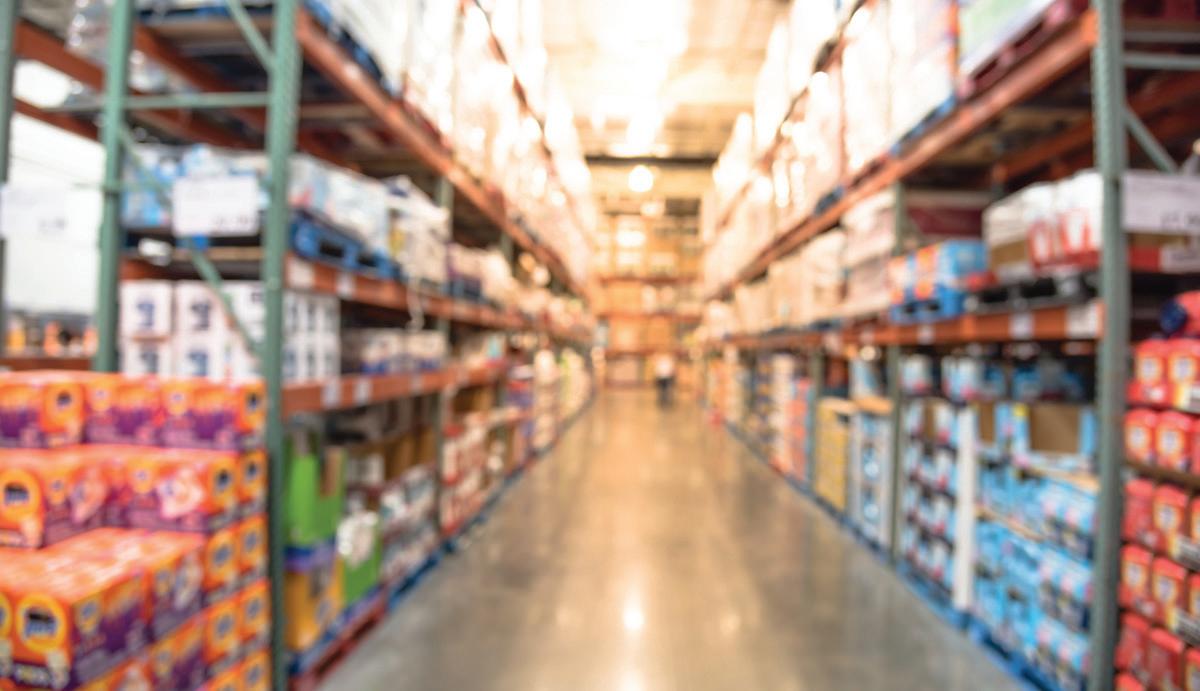
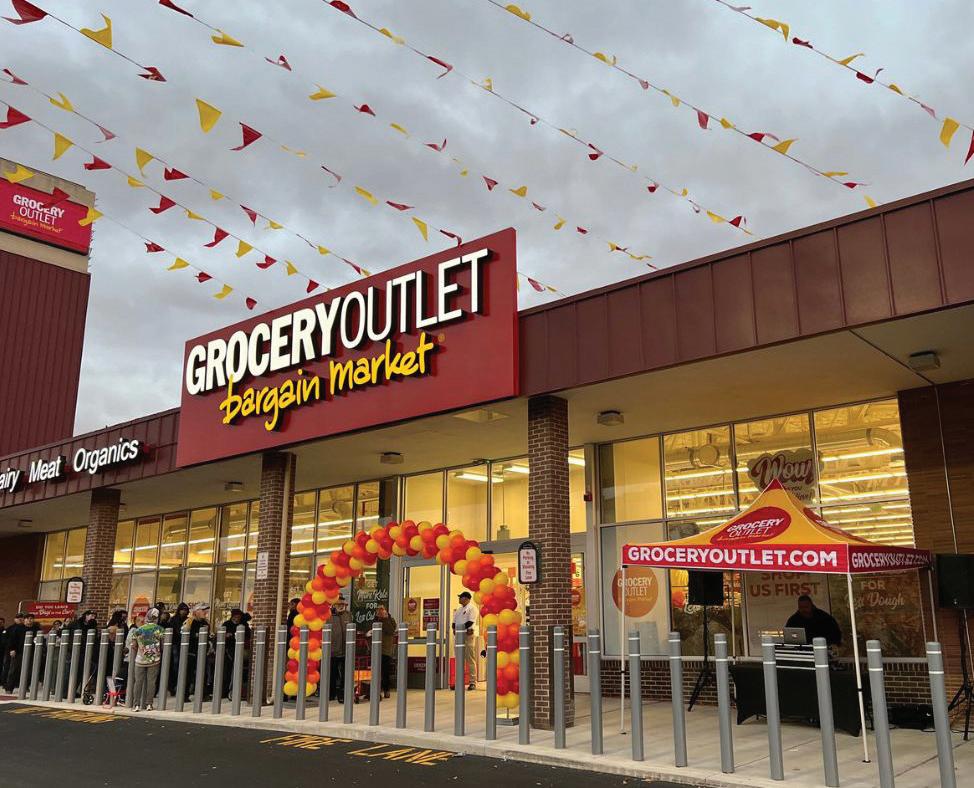
Retail Giant Catapults

Cookie Brand
Cookie Time is revelling in the “Costco effect” and has increased its sales by more than $1 million since the retail giant opened its first Auckland store in September. Read more here
30 I supermarketnews.co.nz
wholesale & outlet
With living costs on the rise, and inflation affecting what consumers are willing to spend, Kiwis are changing their shopping habits to better meet personal grocery needs.
COSTCO’S KIWI FAN CLUB
Costco opened its doors to kiwis on September 28. The West Auckland store saw between 5,000 and 6,000 customers on average each day in its first month and an average of 7,000 new members each week. While things have steadied, the store’s popularity does not appear to be declining anytime soon.
“W
e’re delighted how quickly New Zealanders have taken to the Costco concept. Our strong membership sign-up and daily foot traffic tells us that our merchandise and pricing is resonating with the people of Auckland,” said Patrick Noone, Managing Director of Costco New Zealand.
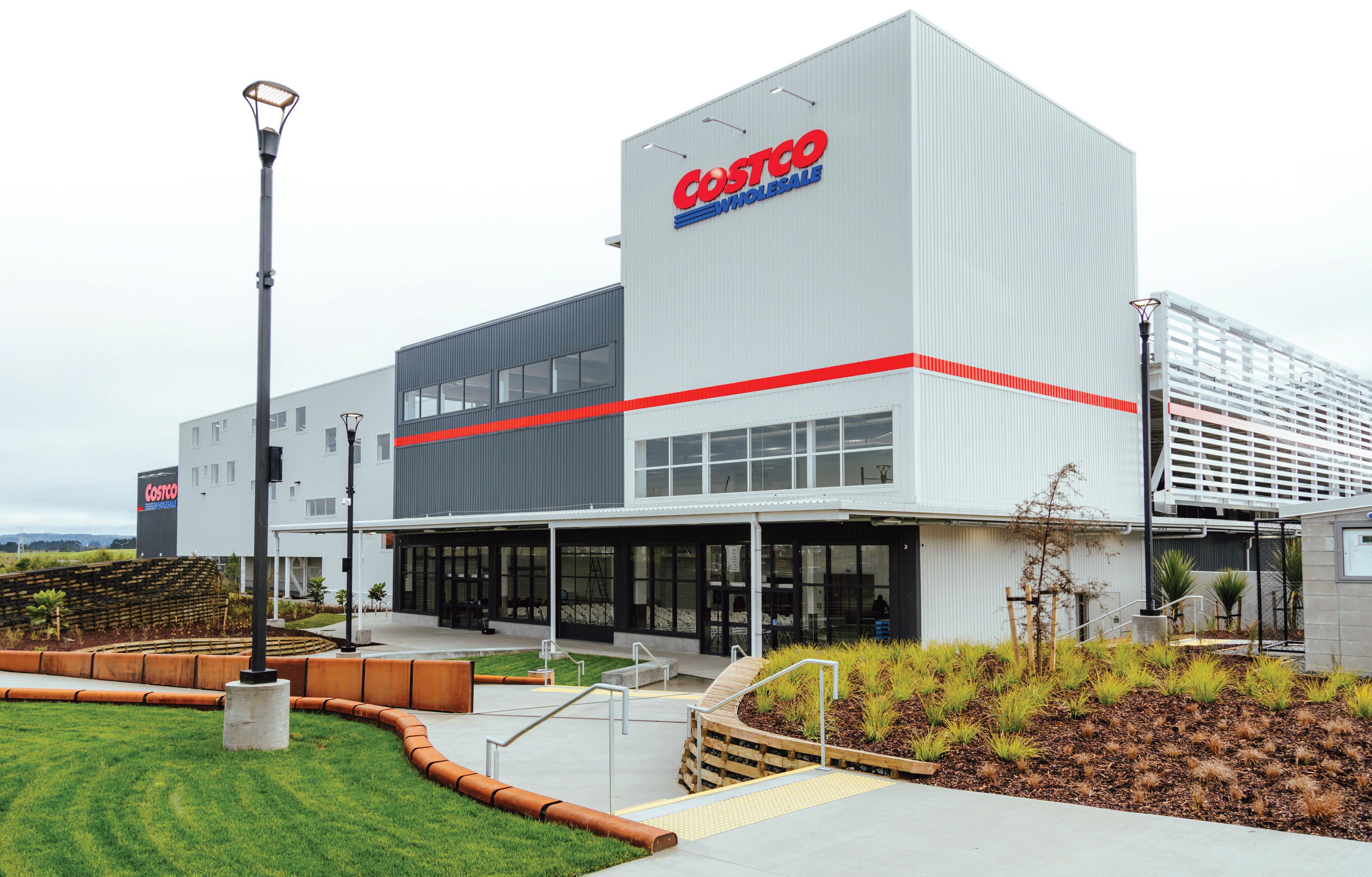
Fresh produce is among the most popular categories in store, with meat and bakery also doing well - the big Costco muffins have been flying out the door. Crabs, rotisserie chickens, chips, chocolates and sugar candies are all popular, Noone noted a real sweet tooth among kiwi customers.
“Our merchandise is a mix of locallysourced products and the best of international brands – including items our New Zealander members have been asking for. At Costco, we refer to our merchandising strategy as a treasure hunt of value. What this means is that no two shopping trips should ever be exactly the same.


We hope that members are surprised and delighted every time they visit, discovering
new favourites as well as trusted highquality brands. We’re proud to stock locallyowned brands, particularly across our fresh food categories, and we’d love to hear from more suppliers based in New Zealand.”

Like the rest of the world, New Zealand has made the most of Costco’s Facebook fan clubs, which already have over 200,000 collective members. With the success of the first store, rumours about the next location have been flying
“We are always on the lookout for new warehouse locations. While we can’t confirm any sites yet, Wellington and Christchurch are definitely areas we’re interested in. However, it is a lengthy process to find the right site. Our warehouses are quite sizable in order to be able to house our comprehensive range of goods and specialty department services.

Our focus is always to find the right location to meet our specifications so that we can ensure every warehouse is comprehensively stocked, offering a wide range of products and services of the best quality at the best possible price,” finished Noone.
THE NUMBERS
“To continually provide our members with quality goods and services at the lowest possible prices,” is the business mission.
Costco’s Q4 2022 report saw the company as the third-largest global retailer, the 11th largest in Fortune 500, with a $236 Billion market cap. There are 840 warehouses worldwide, 578 in the USA, 107 in Canada, 40 in Mexico, 29 in the UK and Japan, 17 in Korea, 14 in Taiwan, 13 in Australia, four in Spain, two in China and France, and one in each of Iceland, New Zealand and Sweden.
Globally the retailer has around 118.9 million cardholders, with a 92.6 percent membership renewal rate in the USA and Canada. The in-store merchandising strategy is based on limited SKUs, between 3,400 and 4,000, across a wide range of product categories. Four-way shoppable pallets are used in-store to ensure the product can be reached from every angle and provide prime graphics and branding capabilities. n
November 2022 I 31
Reduced To Clear - North Island
Sean Hills opened his first Reduced To Clear store in Manuka after noticing how much food was being unnecessarily wasted in FMCG. He had worked at Davis Trading and Prolife Foods, dealing with supermarkets in multiple capacities, when the idea to make the most of shortdated, end-of-line, factory seconds or cancelled export orders was born. “I would be helping suppliers move the product and get some recovery for it instead of dumping it. On the other side of the equation, I could help the public by offering them heavily discounted products.”
Hills grew up in Hamilton and attended Hillcrest High before moving to Auckland in his early 20s. He and his wife have two daughters and live on Auckland’s North Shore. Since its inception in 2008, Reduced To Clear has grown to 11 retail offerings throughout the North Island, offering products between 50 and 80 percent off the recommended retail price.
In the beginning, Hills spent many years cold-calling suppliers to see if they had any clearance products they wanted to move, and he often had to explain his business’s goal. These days Reduced To Clear is reasonably well-known within the industry, and new suppliers tend to come to them. The company has a great range of local and international suppliers.
“We are problem solvers to an extent. All suppliers have the odd issue around stock, so we take it, and it becomes our issue to deal with - we’re here to help them.”
Reduced To Clear stocks all kinds of products, snacks, treats, health foods, gluten-free products, cheese, and yoghurts are all requested daily. Chocolate is a customer favourite, and Cadbury has been a big supporter of the store since the beginning.
Read more here
BargainMe - Christchurch
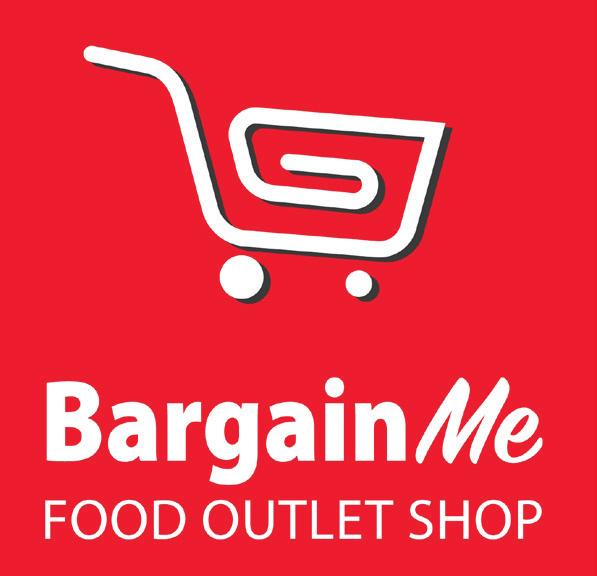
BargainMe is the Christchurch discount food store that opened in March of 2022. Shawn Thomas opened the Linwood store after seeing just how much short-dated, dated, and end-of-line food was being wasted by suppliers. “We wanted to create an alternative for people to shop smarter and add value to their pantry. Short-dated or dated means it’s still good to eat, and that is the knowledge we wanted to increase within the community,” said Thomas.
Thomas moved to New Zealand from Mumbai, India, with his mum and dad at age eight. He grew up in Christchurch and completed a bachelor’s degree in psychology and Postgraduate study in child and family psychology.
Chilly Box - Palmerston North
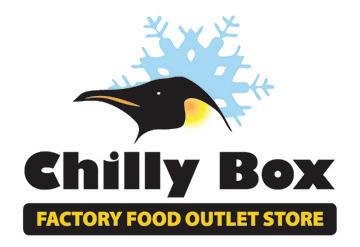
Over 30 years ago, the Chilly Box store was founded as a way to sell product overruns from a separate business. The founding family’s third generation now owns the venture that started as a way to minimise food waste. The business mission remains to ensure no food is wasted and that families can access quality products at affordable prices. Anita Oliver is the Manager of Chilly Box, she has spent 15 years in the food and fuel retail sector, and as a mum of four, groceries remain a big part of her life. The store has an excellent team environment that allowed Oliver to learn about the food industry, running a family business and what kiwi households need right now.
Chilly Box stocks various products, including staples such as milk, bread, snack foods, and other dairy items. Kiwis’ love for pies does not go unnoticed in the store, with savoury items and dairy products being the most highly requested by customers. A lot of time and effort goes into sourcing affordable products for customers - the store proactively reaches out to new suppliers and relies on word of mouth. Whatever customers are after, Chilly Box will find.
The store itself is light, bright and open. Instead of shelving, chest freezers feature down the middle of the shop, so all the products are visible. It is a simple but effective layout that sees excellent product turnover. Anything that doesn’t sell goes to charity or households in need.
Oliver noted the wide range of customers the store appeals to. Both young and old customers, alongside locals with a short drive and those who drive three hours for a fortnightly visit. “We have some customers that have been with us since the doors opened in the 1980s - we love seeing them coming in and being able to chat,” said Oliver.
Read more here
Before opening BargainMe, he worked as a product and marketing manager, so his primary background was always content and marketing. When starting out with BargainMe, Thomas reached out to the first 50 suppliers, and another 50 followed, approaching him. Good word of mouth has built strong relationships between the store and suppliers. BargainMe is trusted to clear supplier stock and market it through different channels.
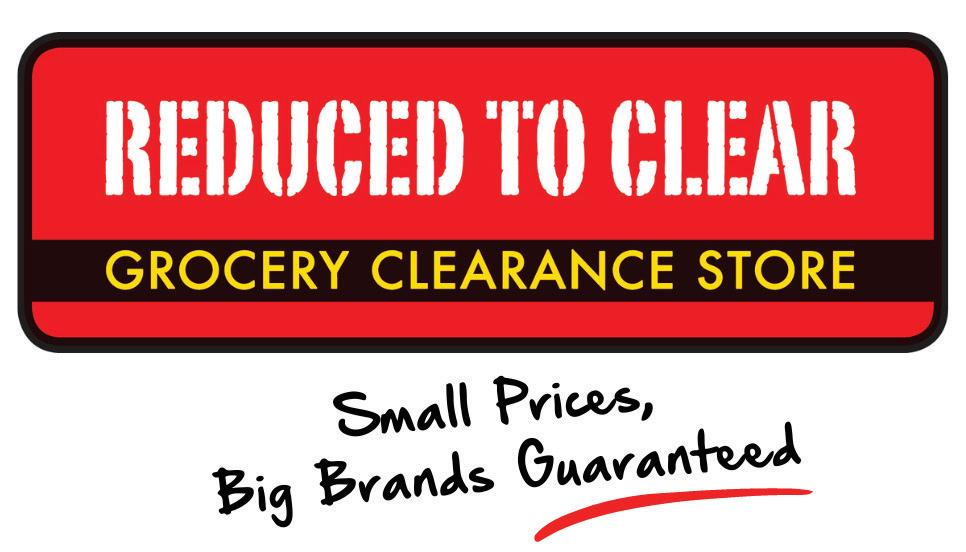
Every product Thomas has brought into the BargainMe store has been completely cleared out by customers. The occasional fruit or vegetable will have to be thrown away, but all ambient and frozen products have been cleared from the shelves thus far.
The store has a line filled with convenience items, freezers filled with bakery products, fruit and vegetables, meats, fish, chicken and ice cream. There is also a dedicated ambient bulk item and clearance aisle. Ice cream, biscuits and pet food are the items with the highest demand right now.
Read more here
32 I supermarketnews.co.nz
wholesale &outlet
Kiwi Reliance On Food Support Continues To Rise
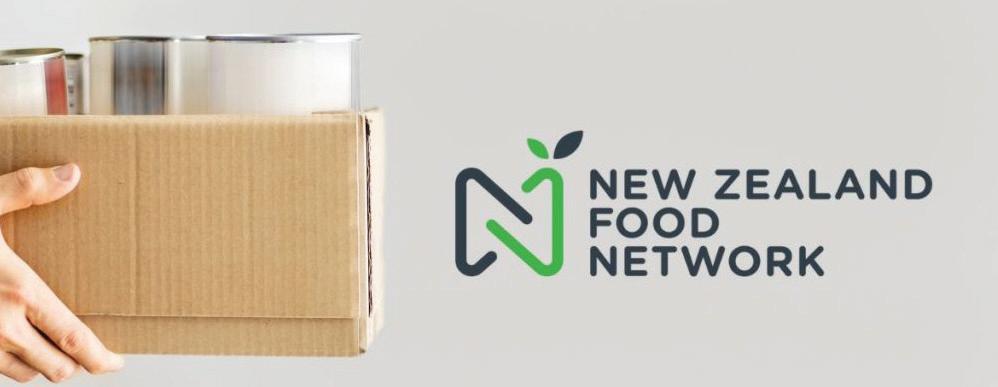
The New Zealand Food Network (NZFN) has found that the demand for food support continues to skyrocket due to the long-lasting impacts of Covid and the increasing cost of living. The survey of 43 food charities discovered the top three reasons for requesting food support were lowpaying jobs, unemployment and Covid isolation. “We saw unprecedented demand for food over lockdown, and with every major alert level change came surges in demand. Even though all but a few Covid-19 restrictions have now been dropped, our survey results show the extent to which they have seriously impacted Kiwis. This, along with rising inflation, means food insecurity is likely to get worse. Our food supply system produces thousands of tonnes of surplus/waste so we will continue to connect the dots and help our donor partners to divert more perfectly good food that would otherwise go to landfill towards those struggling to afford the basics,” said Gavin Findlay, NZFN Chief Executive.
Read more here

Ten Percent Increase In Grocery Supplier Costs



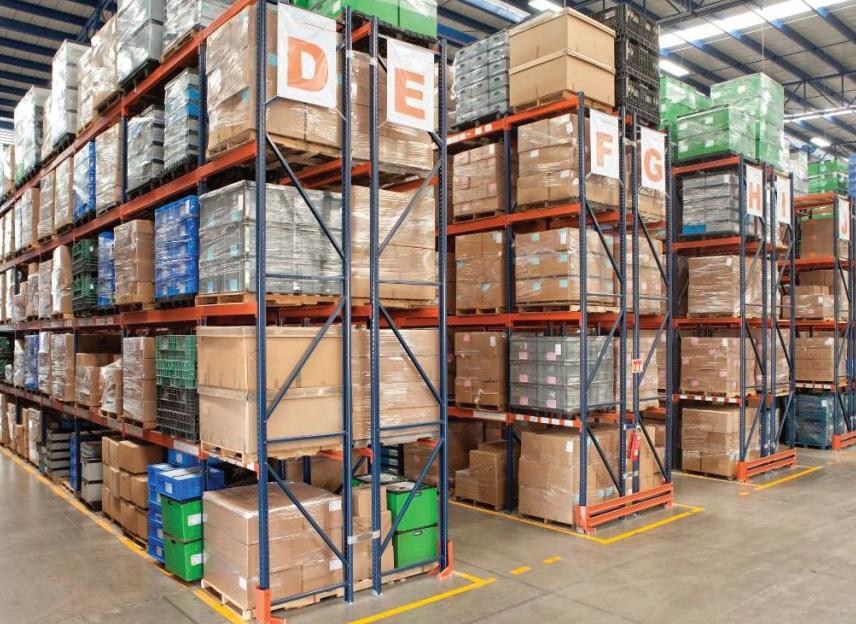
According to the Infometrics-Foodstuffs New Zealand Grocery Supplier Cost Index (GSCI), October saw a ten percent rise in grocery supplier costs. October also saw the most significant number of items to have a re-cost increase since recording began in 2018. “Just over 9,000 items were re-costed higher in October 2022, nearly five times higher than in the same month in 2019 (pre-pandemic). The continued rapid rise in supplier costs to supermarkets reinforces the inflationary pressures observed across the economy, and the Index shows no abatement or change in direction yet,” said Brad Olsen, Infometrics Principal Economist.
Read more here

November 2022 I 33
part2 fakeaways
Big Brands At Home
There can always be more - the October Fakeaways feature discussed cooking Fakeaways at home and the rise in popularity of customers cooking takeaways from scratch due to rising living costs and health consciousness. But the world of fakeaways is broad; for many consumers, time is money.
This is why frozen fakeaways are an important avenue to consider. Then for the brand-conscious consumer, the merging or collaboration of favoured fast-food outlets and FMCG is a great way to engage parts of the market.
Frozen fakeaways are an alternative to traditional at-home cooking. For consumers with limited time on their hands but are still after an at-home solution, something that can be popped in the oven, air fryer, or even microwave saves the day. On its own, the frozen food market has a CAGR of 5.4 percent between 2022 and 2029. Convenience, single-serving options, shelf life and ease of preparation contribute to the rise in popularity.

Pizzas, dumplings, burger patties and curry are popular in the frozen aisle right now. Varieties of frozen fries such as sweet potato, curly, halloumi, broccoli and other vegetables are increasing in popularity. Also rising are varieties of single bite-sized products coated in bread crumbs or beer batters, such as meat, cheese, jalapenos, broccoli or
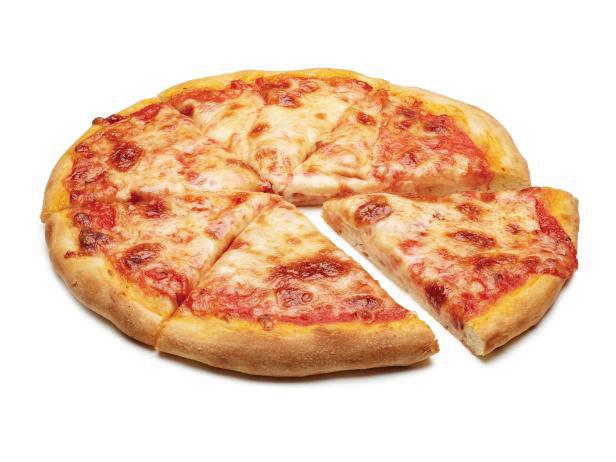
There is also a shelf for alternative proteins or vegan and vegetarian meals in the frozen fakeaway market. Plant-
based burger patties, sausages, nuggets and hotdogs can all be found in the freezer. Most recently, Impossible Foods launched its Plant-Based Chicken Nuggets.
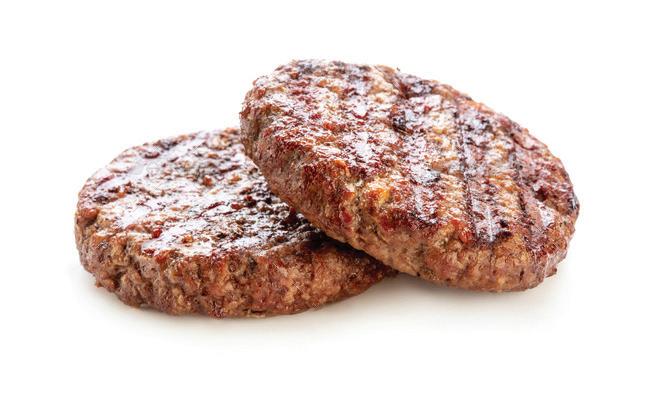
Customers are proving to be interested in FMCG products related to their favourite takeaway restaurants. Nando’s range of Peri Peri condiments is available for the classic hot sauce taste at home. BurgerFuel recently released a limited-edition beer, Starbucks coffee is available in the supermarket drinks chiller thanks to Nestle, and St Pierre’s Sushi has bottles of its teriyaki sauce ready for athome chefs.
These products are something North American producers have grown particularly good at. Taco Bell’s hot sauce, White Castle’s cheeseburgers, McCafe’s coffee blend and Arby’s curly fries are all available in supermarkets.

KFC has had ranges of potato chips with Ruffles and Lay’s, Wendy’s milkshake became a cereal with Kellogg’s, and this year Pizza Hut told its customers to watch its CPG space.
Then there are the collaborations with FMCG and food service that bring ‘the real thing’ even further into fakeaways at home. Auckland food truck, The Lucky Taco, recently partnered with AF Drinks for the Lucky AF Grapefruit Margarita, bringing together the flavours of both companies.
There are so many different avenues of fakeaways to consider, so brands must ensure they are in the right one. n
34 I supermarketnews.co.nz
Fakeaway (noun) is a homemade meal intended to replicate takeaway food ordered from a restaurant.
20 minutes with




WORKER IMPOSSIBLE FODDS
Universities. He spent a great ten years working and learning with Fonterra before meeting Nick Halla - Impossible Food’s first employee. Worker was based in Hong Kong for a while, working on international market strategies and grabbed the opportunity to return to New Zealand as the Country Manager when it arose.

When consumers flocked to online grocery during Covid, Worker was reminded of how important the grocery industry is to everyday lives. He is incredibly grateful for the workers who stock shelves and assist shoppers and the Kiwi retailers open to new food products. But working in plant-based products has provided him with new challenges and opened his eyes to the true costs of animalbased industries that aren’t factored into scaling production models.
the USA and Argentina), it was important to launch right. Impossible Beef was the first product received by Kiwis and was recently followed by Impossible Chicken Nuggets. Chicken nuggets are a kiwi staple in most households’ fridges, so it made sense to bring the plant-based alternative to the 15 percent of kiwis that report being meatfree. It’s still early days for the Impossible Nugget, but Worker is excited to see it become a dinnertime hero as Kiwis find it on Countdown’s shelves.
“Most people are partial to a nuggy or twelve - with or without sweet and sour sauce!”

The negative perception consumers typically have towards plant-based meats before trying them, or plant-based anxiety, is something Alex Worker has navigated while bringing Impossible Food’s Products to New Zealand.
Worker grew up living around the Asia Pacific. He attended high school in Wellington and completed his undergraduate studies between Otago and Auckland
“As a father of two young children, I like the idea of being a good ancestor and prioritising our environment first. I buy into Te Ao Māori long-term frameworks, especially the premise of guardianship and kaitiakitanga. To me, this defines Aotearoa New Zealand’s current and future food opportunities. So after I learned of Impossible Foods’ mission and focus on utilising great science to create delicious meats made from plants, I was all in.”
Impossible Food entered the market through food service, allowing customers to experience products on the menus at their favourite restaurants before buying from the shelf. As one of the highest meat-consuming countries in the world (alongside Australia,
While not yet available in grocery in New Zealand, Worker is partial to Impossible’s Pork Mince. The company recently partnered with Arrowtown dumpling entrepreneur Anna Wang for her delicious Impossible Pork & Chive Dumplings.
“I love how versatile Impossible Pork is and how it can be used in a variety of dishes and cuisines.”
For now, Worker couldn’t share any secrets about when the Impossible Prok Mince might join the ranks because the company is focused on expanding the availability of its chicken nuggets and beef across supermarkets and restaurants. But, Impossible Food’s main goal remains to be transforming the global food system.
“I’ll take this opportunity to recommend that everyone gets back out there - if you can - to support your favourite local restaurant or two as they currently need all the help they can get in the lead-up to summer!” n
November 2022 I 35
ALEX
Impossible Food’s longterm goal is to transform the global food system and have its products available in all regions globally.
ARE WE MISSING OUT ON GROCERY INNOVATION?
In 2022 we have seen the NZCC specifically call out a lack of innovation in the NZ Grocery sector.
This section of the Market Study report is strong on opinion and short on specifics in terms of what NZ shoppers
section of other retailers, my list of winning innovations is low, and as identified in NZCC’s report, competition can, on occasion, actively work against innovation in terms of shopping experience and offer.
PRICE HAS BECOME ALL CONSUMING
NEILL ARNOLD Founder, Arnold Category Consulting

In late October, I completed a retail tour in the UK, expecting to return to NZ with some strong examples of the missing innovation that my clients would be able to champion with their key retail partners. After many store visits in a wide cross-
The competitiveness of UK grocery is not in question but with a cost-of-living crisis worse than NZ’s, price is becoming all-consuming, diverting investment from innovation and making the shopping experience the poorer for it.
Leading retailers, such as Tesco, Sainsbury’s and Asda, traditionally leaders in Grocery store experience, are currently so focused on chasing competitors on price, price matching campaigns dominate the store, and their focus on offer development has

are missing out on due to the perceived lack of competition in NZ other than the speed to market of new ideas.
been lost. Many of the stores I visited felt tired and showed limited innovation in the last five years. The only recent changes are related to High Fat Sugar & Salt legislation compliance and not shopper needs. Retailers have innovated to minimise the visibility loss for HFSS products whilst meeting legislative requirements!
Unsurprisingly, many of the products that have been price matched are private label offers and have only further exposed the price difference between these offers and their branded competitors. Tesco has gone as far as adding in-store communication to highlight the private label vs branded price differential. I am confident in our challenging NZ market; few branded suppliers would appreciate a direct price comparison to their PLB competition.
But, looking for innovation, what did catch my eye?
Premium Food Retail
Some retailers, M&S and Waitrose, continue to stand alone and try to differentiate with range and choice. The move to standalone Food Halls for M&S has been game-changing and offers shoppers a shopping experience focused on quality, service counters with experienced staff to support purchasing and a focus on premium ingredients for occasions that matter.
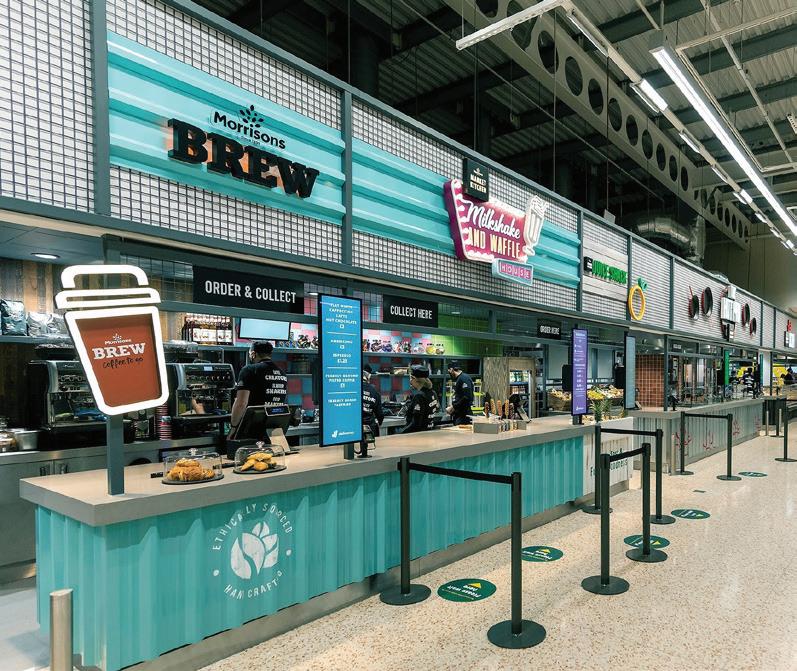
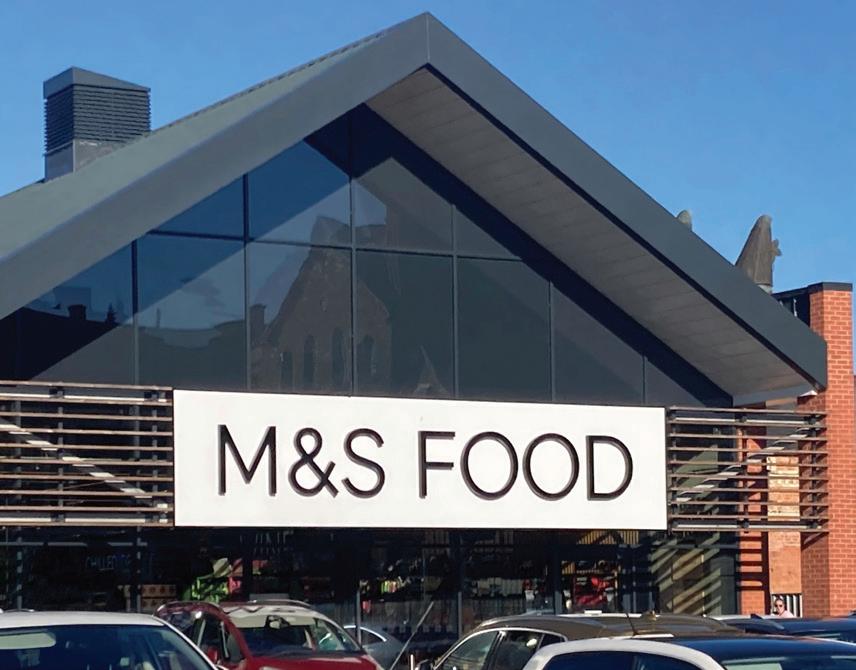
Morrisons Market
Kitchen
Morrisons have understood their customer’s love of fast food and now make it easy to take home dinner for tonight when you shop, when you need a quick meal on the way home or when delivery is required (Deliveroo are their delivery partner).
From Pizza to Fish and Chips, Burgers to Kebab, all the classic takeaway options are on offer, and the store positioning makes quick access from the car park possible. Building menus that highlight their store’s Fresh offer as ingredients makes this a deeply strategic offer development.
Pre-Filled Display Units (PDUs)
You can not visit a store in the UK without seeing a wide variety of display units. Whilst a long-established method of minimising merchandising costs for retailers, well-designed PDUs offer suppliers the opportunity of branded shopper messages and guarantee initial stock weight for an activity where no supplier merchandising exists. With New Zealand retailers focused on minimising supplier merchandising, this could be a growing trend for our market.
In summary, NZ Grocery is not perfect but based on my recent experience, our retailers are definitely looking to put customers first, deliver a tailored customer experience and given the importance of price in our challenge market, all the price mechanics
are in play: Everyday Low Price, Loyalty Card pricing and weekly deep discounting are aligned to a highly competitive market. I believe for suppliers, it’s time to focus on building partnerships and plans with the customer at the heart for long-term growth and success. n
36 I supermarketnews.co.nz column
USA GROCERY MERGER
food system by expanding our footprint into new geographies to serve more of America with fresh and affordable food and accelerates our position as a more compelling alternative to larger and non-union competitors,” said Rodney McMullen, Kroger Chairman and Chief Executive Officer.
Kroger has announced plans to buy Albertsons in a deal that is worth US$24.6 billion. The merger would combine the country’s two largest supermarket chains; they would have 4,996 stores, 66 distribution centres, 2,015 petrol stations, 52 manufacturing plants and 3,972 pharmacies between them.
In 2021 Albertson’s and Kroger’s combined revenue was around US$210 billion. The merger would see them reach two of every three consumers in the USA.
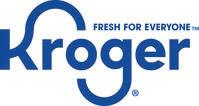

“W

e are bringing together two purposedriven organizations to deliver superior value to customers, associates, communities and shareholders. Albertsons Cos. brings a complementary footprint and operates in several parts of the country with very few or no Kroger stores.
This merger advances our commitment to build a more equitable and sustainable
“At Albertsons Cos., we are guided by an ambition to create customers for life. Together with Kroger, our combined iconic banners will be able to provide customers with even more value and greater access to fresh food and essential pharmacy services.
Given the similarities in the culture and values at Kroger and Albertsons Cos., I am confident that the combination will also have a positive impact on our associates and the communities we are proud to serve. We look forward to working together with Kroger to capture the compelling opportunities ahead,” said Vivek Sankaran, CEO of Albertsons Cos. n
GROCERY COMPETITION STUDY FOR CANADA
The Canadian Competition Bureau has launched a study on the supermarket sector and its competitive dynamics. Currently, most Canadians buy groceries from Loblaws, Sobey, or Metro. Costco and Walmart are also in the market, alongside several independent retailers.
As of July 2022, there were 7,979 supermarkets and grocery stores across Canada. Loblaws has over 2,400 corporate, franchised and associate-owned locations. Sobeys owns about 1,500 stores under numerous banners and 350 retail fuel locations. Metro has 950 food stores and

650 drugstores.
“With inflation on the rise, Canadian consumers have seen their purchasing power decline. This is especially true when buying groceries,” said Competition Bureau Canada.


Grocery prices in the nation have been increasing at the highest rate in 40 years and grew 11.4 percent in September. The study is already underway, and the final report is set to be published in June 2023.

The three broad questions of the study are: To what extent are higher grocery prices resulting from changing competitive dynamics in the sector? If they are, what factors may have contributed to the change in dynamics? What role did the pandemic and supply chain disruptions play?

What can be learnt from other countries’ steps to increase competition in the sector?
How can governments lower barriers to entry and expansion to stimulate competition? For example, how do restrictive covenants and access to wholesale supply of groceries affect grocers’ ability to compete in Canada?
New Zealand’s 2020 Study and Mexico’s 2018 study are the most recent reports Canada will be referencing. The United States of America also have an ongoing study. n
November 2022 I 37 news
internationalspotlight
MIXING UP MARKETING
ICE COLD SUPERMARKET
Jägermeister opened the UK’s first-ever IceCold Supermarket with marketing company Sook. The store was open for two days and was located at 58 Oxford Street. The store was chilled to -18 degrees celsius, stocked with everything Jagermeister and managed by award-winning actor, rapper and comedian Michael Dapah.
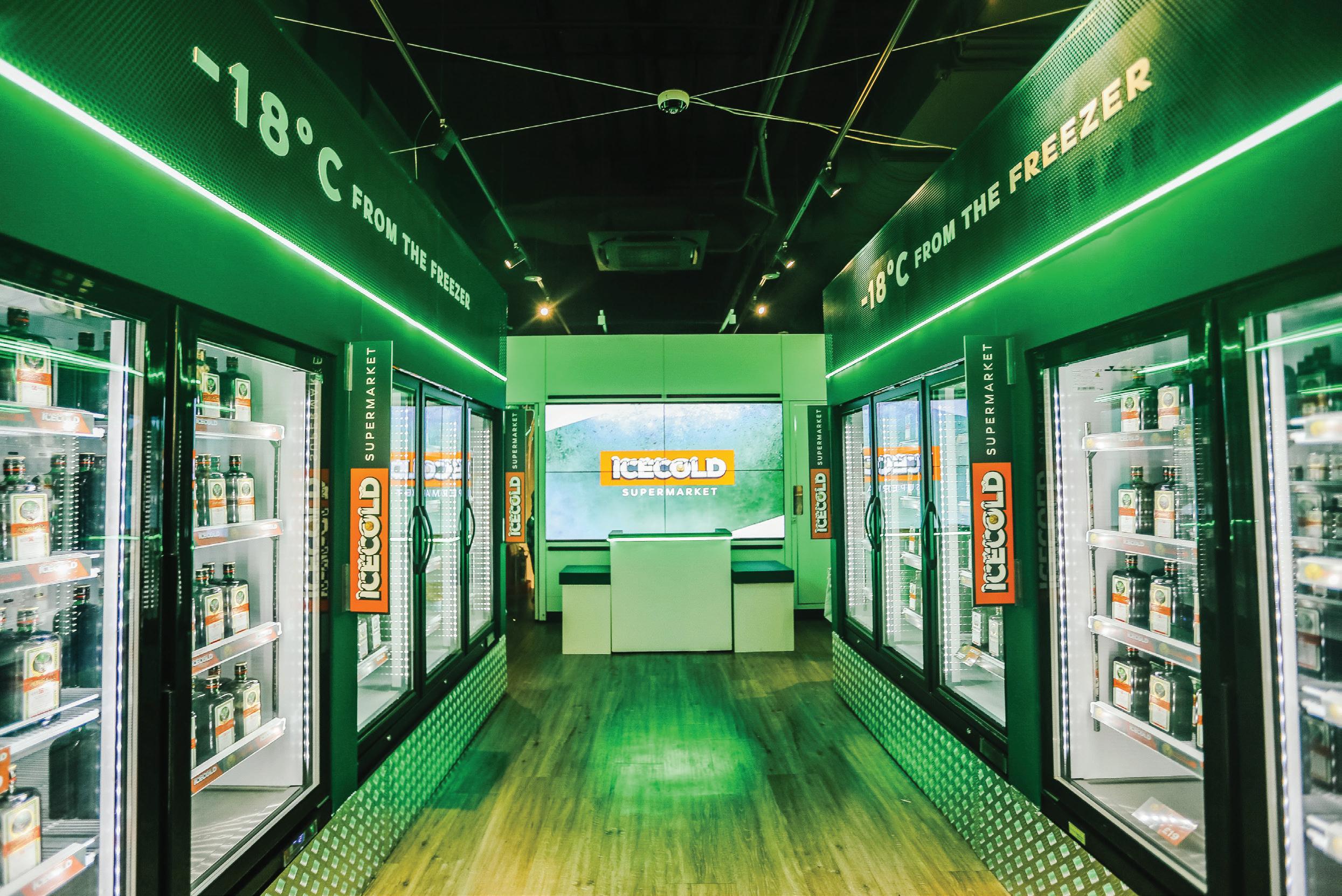
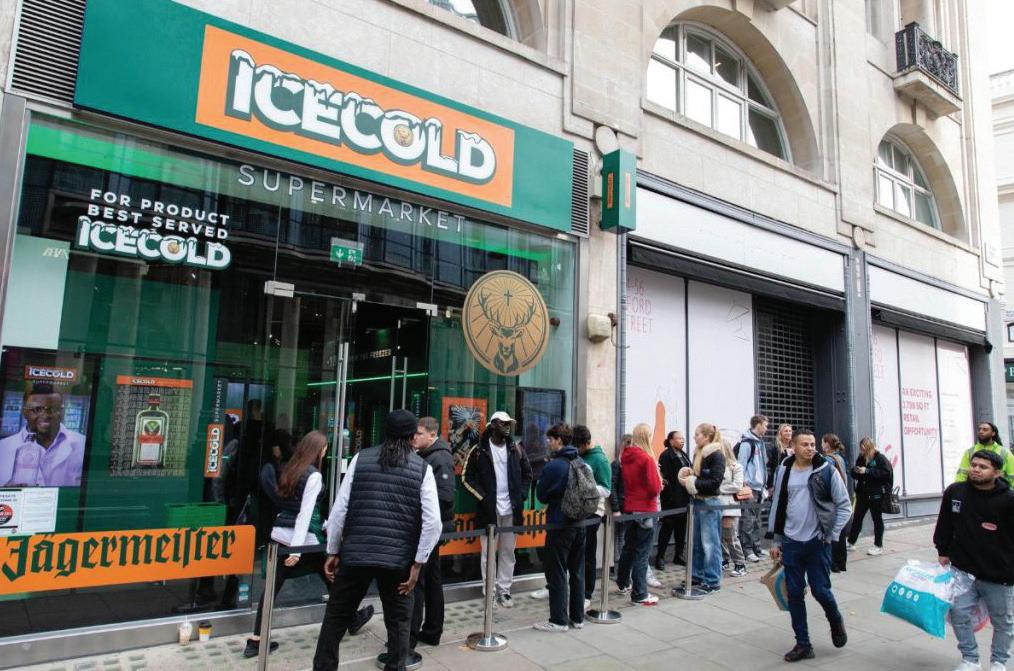
Instore, there were floor-to-ceiling fridges, limited edition bottles of Jägermeister, limited edition Jägermeister ice cream and branded merchandise. Downstairs in the venue’s freezer room, live DJs were spinning tracks to keep customers entertained.
The limited edition bottles of Jägermeister featured a secret code that could only be made visible when chilled to the optimal temperature and offered customers the chance to win more than 1,500 prizes.
“The IceCold Supermarket showcases Jägermeister’s optimal serving temperature of -18 degrees. As Jägermeister is a brand
best served Ice Cold, we couldn’t think of a better setting for customers to fully immerse themselves with chilled surroundings, -18 temperatures and an ice cold secret in store,” said Peter Kennedy, Mast-Jägermeister Head of Digital, Culture and Events.
A number of surprise guests and UK reality television stars visited and promoted the store, including Love Island’s Wes Nelson, Billy Brown and Josh Le Grove.


THE HUMAN CLAW
PROPER Snacks, a UK Producer of popcorn and chips, unveiled a giant human claw machine in a marketing campaign over the weekend between 28 to 29 October. The Proper Dropper saw customers lifted and dunked into 16,000 bags of snacks in Ely’s Yard in London.
PROPER Snacks co-founder Cassandra Stavrou said the human claw aligned perfectly with the brand image - bringing
fun and energy to the everyday. Customers who visited the pop-up spun a prize wheel and had one in eight chances to play the claw.
“PROPER is a brand that has always been about bringing fun and creativity to the everyday. So, we decided to turn up and give the public something unforgettable,” said Stavrou.
“Whether it’s building a giant popcorn cement mixer or wallpapering London in popcorn pattern, we’ve always done this the ‘PROPER way’. The human claw goes right to the heart of our brand – another moment where we totally reimagine a childhood arcade game and stop people in their tracks with our creative ambition. We’re so excited to bring the Human Claw to life this Autumn.”
Previous campaigns from the snack company include popcorn-wrapped London buses and a 33ft pink cement mixer tour around the UK. n
38 I supermarketnews.co.nz
The UK is leading in innovative brand promotions with two well-known labels, Jägermeister and Proper Snacks, embarking on extensive shortterm promotions to engage customers in something less traditional.
christmas
‘Tis the Season


WHAT TO EXPECT FROM CHRISTMAS SPENDING
Across the globe, retailers and consumers are preparing for less spending this holiday season. Deloitte’s annual holiday reports for Australia, the USA and the UK have highlighted a drop in spending due to global inflation and cost of living pressuresa trend that is expected to be similar here in New Zealand.
In Australia, 55 percent of retailers believe December will be the busiest and most crucial month for overall performance. Rising inflation challenges the confidence in the year-on-year sales growth; only 67 percent of retailers expect an increase compared to 80 percent in 2021. Online sales are expected to slow down for the first time since 2018 as consumers seek human interaction, and Millenials and Gen Z wield the largest share of purchasing decisions. Cost pressures and macroeconomic factors are retailers’ most significant concerns for the period.

In the USA, 37 percent of households said their financial situation was worse than last year. The shopping period for the holiday season is expected to shrink from 6.4 weeks to 5.8 weeks, and 23 percent of holiday budgets will be spent by the end of October. Online retailers and mass merchants will be the preferred shopping destination, with online shopping taking a 63 percent share. However, in-store shopping looks to grow from 28 percent in 2020 to 35 percent.
In the UK, six in ten shoppers believe they will have less money to spend on the Christmas period. Around 38 percent of consumers said they would switch to cheaper stores or brands for gifts, and 35 percent would do part of their Christmas dinner shop at a discount supermarket. Instead of shopping in December, 54 percent of consumers said they would complete their shopping in November.

UK SUPERMARKETS SIGNAL
THE START OF CHRISTMAS

All major supermarkets released their 2022 Christmas adverts in the UK, a sign that the festive season has arrived. M&S was first out the gate with its iconic fairy, Tesco has taken a dig at the UK’s political instability, Aldi brings back Kevin the Carrot, Sainsbury’s stars Allison Hammond

and Stephen Fry, Asda has worked with Elf, Farmer Christmas has approved Morrisons and Lidl has told the story of its iconic bear. Watch here
WOOLWORTHS AUSTRALIA GOES GLITTER FREE FOR CHRISTMAS
Woolworths and Big W in Australia have announced that the home brand Christmas ranges will be going glitter free this year.
“We want to help create a better tomorrow, and this is a small but meaningful way we can help our customers deliver Christmas cheer without the impact glitter has on the environment. We know there’s more we can do, and we’re working to reduce glitter across our entire range in Woolworths and BIG W,” said Liam Ward, Group General Manager of Sustainability Transformation and Delivery. Read more here n
November 2022 I 39
report
Incite works with established food and beverage brands from the United Kingdom, Australia and New Zealand that want to replicate their success at home in Asian export markets. Across their network in Singapore, Malaysia, Indonesia, The Philippines, Thailand, Vietnam, Hong Kong, Taiwan and South Korea, over 1,900 import and distribution companies were surveyed for their view of the sector.


ASIA FOOD & BEVERAGE DISTRIBUTOR INSIGHTS SURVEY “T
he results surprised us. We were thrilled to validate our assumption that with pandemic restrictions mostly behind us, a large percentage of distributors surveyed are actively reviewing new food and beverage distribution opportunities. The data also indicated that the top echelon of distributors in each market continues to be approached daily by exporters, proving just how strategic (and competitive) these markets are for brands seeking to grow their export sales in these markets,” said Nada Young and Cameron Gordon, Incite Founding Partners.
Importers across Asia are always on the lookout for new and innovative brands, but they need to be confident that a new brand will fit within the current category landscape in their market. Incite suggests investing time to understand each target market and create a tailored, compelling commercial pitch that takes into consideration local market dynamics, including current competition, category pricing structures and promotional mechanisms.
Non-alcoholic drinks, dairy, plant-based proteins, and health food are among the top four in-demand categories. The megatrend towards meat protein alternatives is also visible across Asia, with 7.5 percent of distributors on the lookout for brands in this category. Sweet and savoury snacks are also very
40 I supermarketnews.co.nz
popular, reflecting that while consumers try to do better by their bodies, impulse snacks are still very appealing. Predictably, dry goods and canned food remain popular, given their long shelf life and easy handling. Pricing remains the most important factor for distributors looking at new products; however, taste, A&P support, market understanding, and packaging are also very important.
Brands from the UK, Australia and New Zealand are well regarded across the Southeast and North Asian markets surveyed. Historical ties connect the UK with some nations within the region, including Hong Kong, Singapore and Malaysia. For Australia and New Zealand, the close geographical proximity to Asian markets and the numerous free trade agreements have supported two-way trade growth. Tariff-free preference that is afforded to Australian and New Zealand exporters within the region provides significant cost-saving advantages relative to the access that exporters from other markets enjoy. Products from these three countries are generally considered to be premium and are perceived as being of a high quality with fun and unique branding. These countries are also known for their innovation, and products often cater to global food trends. Distributors were sometimes critical of exporters not making an effort to adapt their product offerings to
the local market by lowering the price point, reducing the pack size and/or extending the shelf life.
Email, WhatsApp, Microsoft Teams and Zoom are the digital platforms most predominantly used for communication, but they are not always the best for fostering new relationships or discussing delicate matters. This is particularly true in situations where there may be language barriers or unstable internet connection. Distributors are welcoming back face-toface meetings with Trade Shows and in-market visits recommencing. A total of 67 percent of distributors prefer to have contact with their brand principals at least monthly, as a collaborative approach is critical for long term success. But, there is a fine line between being useful to market partners and annoying.




“Distributors generally see themselves as babysitters rather than parents of brands they manage, with the parents typically paying for meals and school fees,” said Gordon.
In-store tasting are now mostly possible, with most remaining retailers likely to commence within the next 12 months; they are crucial to new imported food brands entering the market. During the pandemic, many brands relocated promotional funds to digital marketing programs as a way to educate consumers. But as things settle down, social media campaigns work well in conjunction with in-store activations. Running competitions and working with local tastemakers and Influencers will provide further reach and provide user-generated content for your products being enjoyed by in-market local consumers. You will also receive consumer feedback that can be used to further adapt to local market dynamics and grow brand loyalty.

Distributors are feeling optimistic about the grocery sector for the next 12 months. With markets opening and social restrictions lifted, confidence is strong amongst distributors, with demand for imported grocery products continuing to rise. However, Inflation has been flagged as an area for concern in the coming year, with cost increases being seen across all areas of the supply chain, which will lead to higher on-shelf prices in grocery. Logistics disruptions are also causing challenges for distributors in keeping
shelves fully stocked with brands they are importing and distributing. Similar challenges are predicted for food service.
Final Comments
Covid-19 significantly disrupted grocery and food service sectors across the Asian markets surveyed in 2020/21. However, considerable improvements can be seen across key fundamentals in 2022 based on the feedback received from distributors in our survey. While opportunities exist for brands across Asia, it’s important to understand each market’s landscape, norms and expectations. Distributors clearly articulated the challenges and opportunities they see for UK, Australian and New Zealand brands in our 2022 survey.
Clearly articulate your unique selling proposition by taking the time to understand the competitive landscape in each target market and formulate a clear message about what sets you apart from other competing brands.
Get your pricing strategy right, as it is not always about being the cheapest but about being correctly positioned within the category. Understand the margin requirements for each aspect of the supply chain to you can negotiate hard for the benefit of onshelf price position.
Localise brand strategy so that it resonates with local consumers. Consider using local content, opinion leaders and competitions to capture consumers’ imagination instead of deploying marketing from the head office.
Collaborate and support market partners to ensure longevity. Sharing the returns from success and the risk that is needed to get there are hallmarks of a great export business.
You can download the full report from Incite’s website https://www.exportincite.com/news/2022-report n

November 2022 I 41
NEW ZEALAND’S VERY OWN RAPID GROCERY DELIVERY
Teddy, NZ’s very own grocery delivery platform, is hoping to cause some change in the local grocery landscape. The door-to-door delivery service has launched in Queenstown and Auckland by founders and co-owners Chaz Savage and brothers Ricki and Daniel Taiaroa. The Teddy app, two dark stores and a fleet of Ubco electric motorbikes are ready to take on grocery delivery.
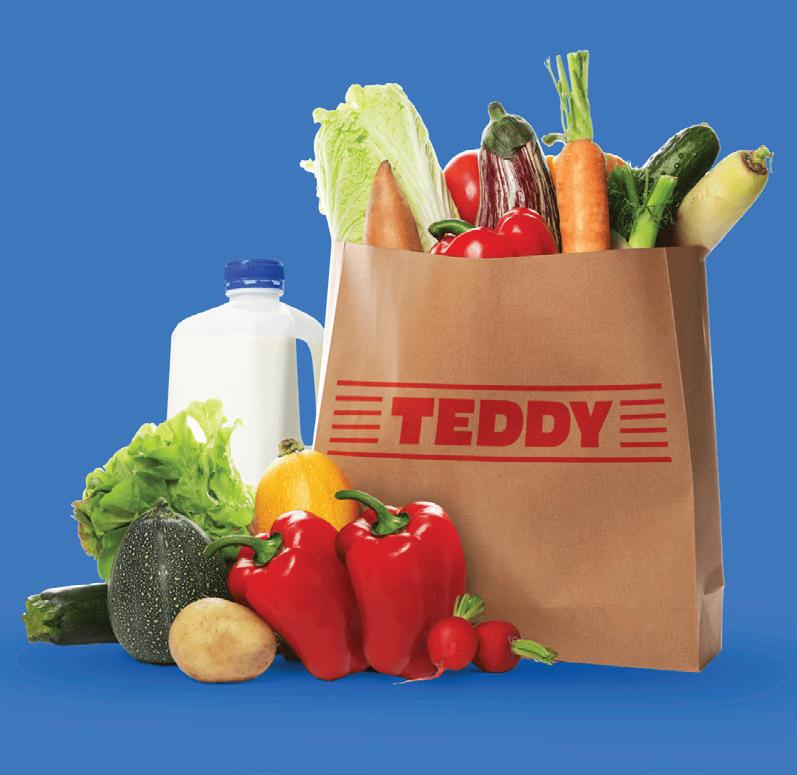
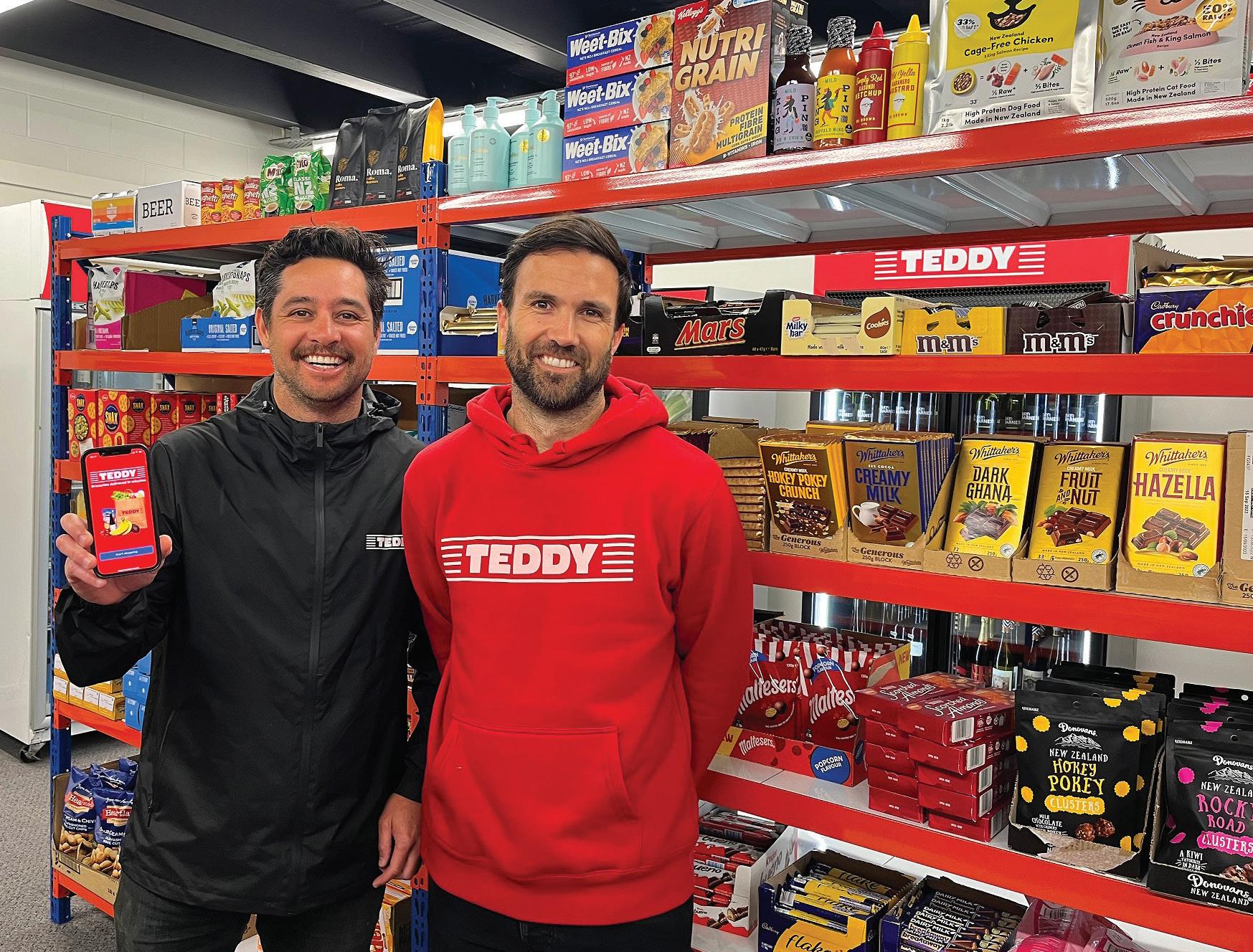
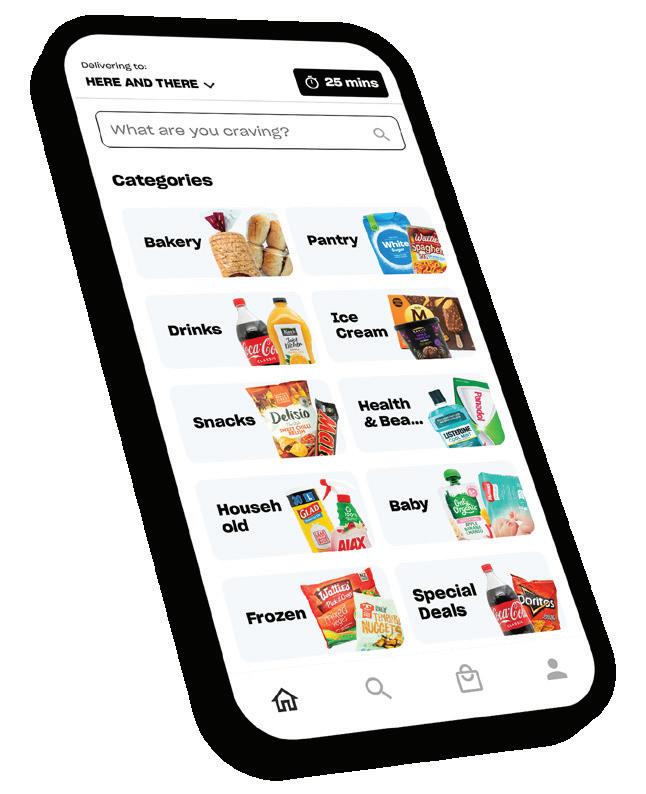

“We are tackling the challenge of super-fast grocery solutions in a unique number eight wire Kiwi way,” said Savage.
“While inner-city customers in Europe can expect 10 to 15 minute deliveries, Kiwis have told us 30 minutes is fast enough, so that’s what we’ve planned for and how we’ve engineered our solution. Life is so frantic these days that having to wait around for a grocery delivery is a huge drag, let alone heading out into the traffic to pick up those two key ingredients you forgot for the Ottolenghi recipe you’re trying out on your mates Saturday.”
Inspiration has been taken from successful brands around the world - Getir (UK), Gorillas (Europe) and Milk Run (Australia). The brand name Teddy, is a play on the Māori phrase ‘kia tere’ or be quick. To get on board, all customers need to do is download the app and
select between Turbo 30-minute delivery or Pool, the slightly slower service. Either way, it means no one needs to leave the house.
“We’re starting in Queenstown and Auckland for a couple of key reasons. One, we actually bought a business in Queenstown, which we flipped into a beta for Teddy, and two, Auckland represents the bigger opportunity right now to help us scale up quickly to test all the amazing plans we have to make some killer waves in the grocery scene. Christchurch – we’re looking at you next, and Wellington soon after that.”
The company has partnered with Ubco to ensure a reduced carbon footprint and just had its quickest delivery of 13 minutes on one of the bikes.
“Electric is the future and ensuring our impact is as negligible as possible is essential. When people use Teddy for their shop-between-shops, their carbon footprints will be reduced compared to driving to the store. I have no problem with our drivers recharging in a supermarket carpark if they get caught short!”
“We are now ready to roll. We’ve charged up the electric bikes and the shelves and the chillers are stocked and waiting.” n
42 I supermarketnews.co.nz IMPULSE convenience
BP and Uber Partner for Driver Benefits
Bp and Uber have announced a new strategic partnership in Australia that will allow Uber driver partners access to bp’s fuel and convenience products. Including fuel discounts, Wild Bean Cafe barista coffees and miniwash carwash. “For more than 100 years, our goal at bp has been to keep the world moving. Our new partnership in Australia with Uber reflects our commitment to continue to respond to the mobility and convenience needs of our customers and is another major milestone for our business,” said Frédéric Baudry, President of bp Australia.
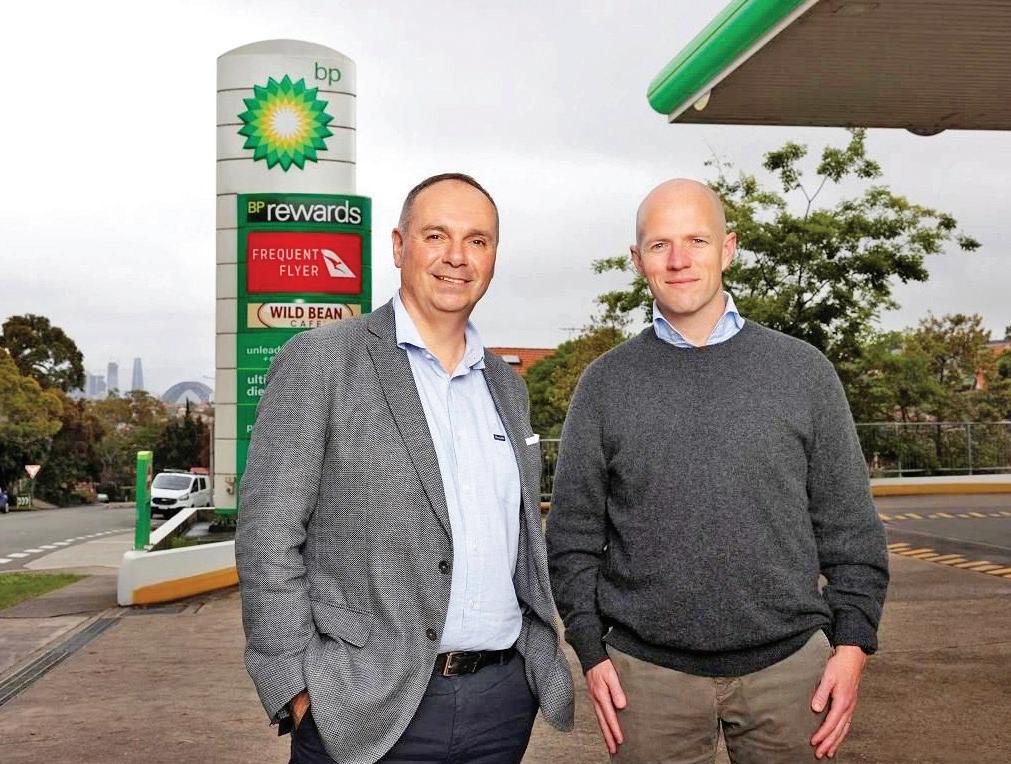
Read more here

20 Minutes With Brooke Williams and Hayden Manson – Night ‘n Day Alexandra
Brooke Williams and Hayden Manson grew up around Night ‘n Day. The pair were both raised in Southland, so they were very familiar with the stores’ role in local communities before taking over the Alexandra location in 2020. “We love the vast range that Night ‘n Day offers. We love a challenge. We love to do things right and do our best. So putting our all into this and wanting to better ourselves each day and beat numbers every year definitely helps maintain that passion. We love a happy customer, and it doesn’t go without having an awesome team alongside us with the same mindset,” said Williams.
Read more here

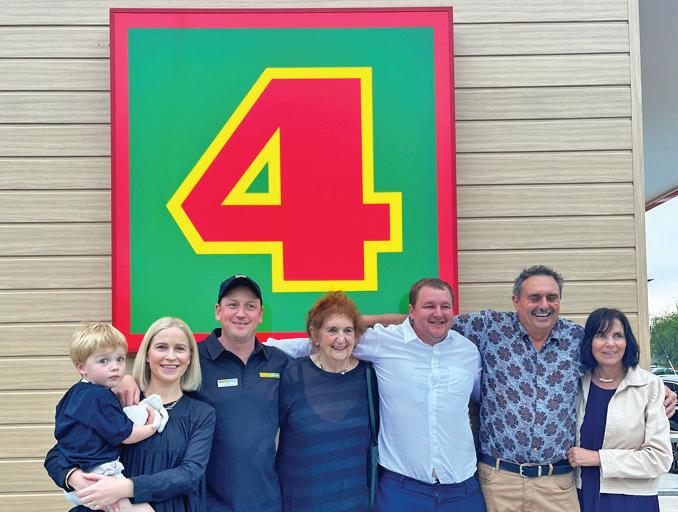
Four Square Wainui Road Opened in Gisborne
After months of operating out of a temporary site, Four Square Wainui Road has opened. The store features the latest Four Square design, offers a butchery, meal kiosk, a larger shop floor, chicken and chips, soft serve ice cream, flight coffee, six checkouts including self-service and a community notice board. Sam and Victoria Wanklyn have owned the supermarket since 2018 and are proud to re-open the doors. “It’s been a challenging few months. However, the team has done an amazing job keeping the store running throughout the rebuild. We’re grateful to be a part of such a fantastic partnership with Foodstuffs North Island and the Tilley family, who were the original Four Square owners back in the 80s,” said Sam Wanklyn.




Read more here
Basketball Donation
The 40 brand new Basketballs used in Z-Energy’s Good in the Hood television advertisement have been donated to School Start First Impressions (SSFI), who gave them to children in need. “Receiving a donation such as these basketballs from Z means a lot to us. One of SSFI’s focuses is on physical activity and the well-being of children, so to be able to have these basketballs enables the kids to get outside and play,” said Nikki de la Rosa, General Manager of SSFI.
Read more here
November 2022 I 43
CONVENIENCE AND IMPULSE NEWS







































































































 SANDY CHENG STORE OWNER
SANDY CHENG STORE OWNER




































































































































